by Michelle Carton | Mar 26, 2017 | Morocco
On Friday, our host teacher’s family had a fabulous surprise for Nell and I….we took a walk and arrived at a shop…A WEDDING SHOP! We were prepared (it is a long process) in 3 of the 5-8 stages of wedding dresses. Often the dresses are rented from a wedding planner in a shop such as the one we were in.
This was such a highlight of our trip.
The headwear made me feel elegant, makes great sounds, and is quite a process to place. Loved it! I felt so special, and I wasn’t even getting married.
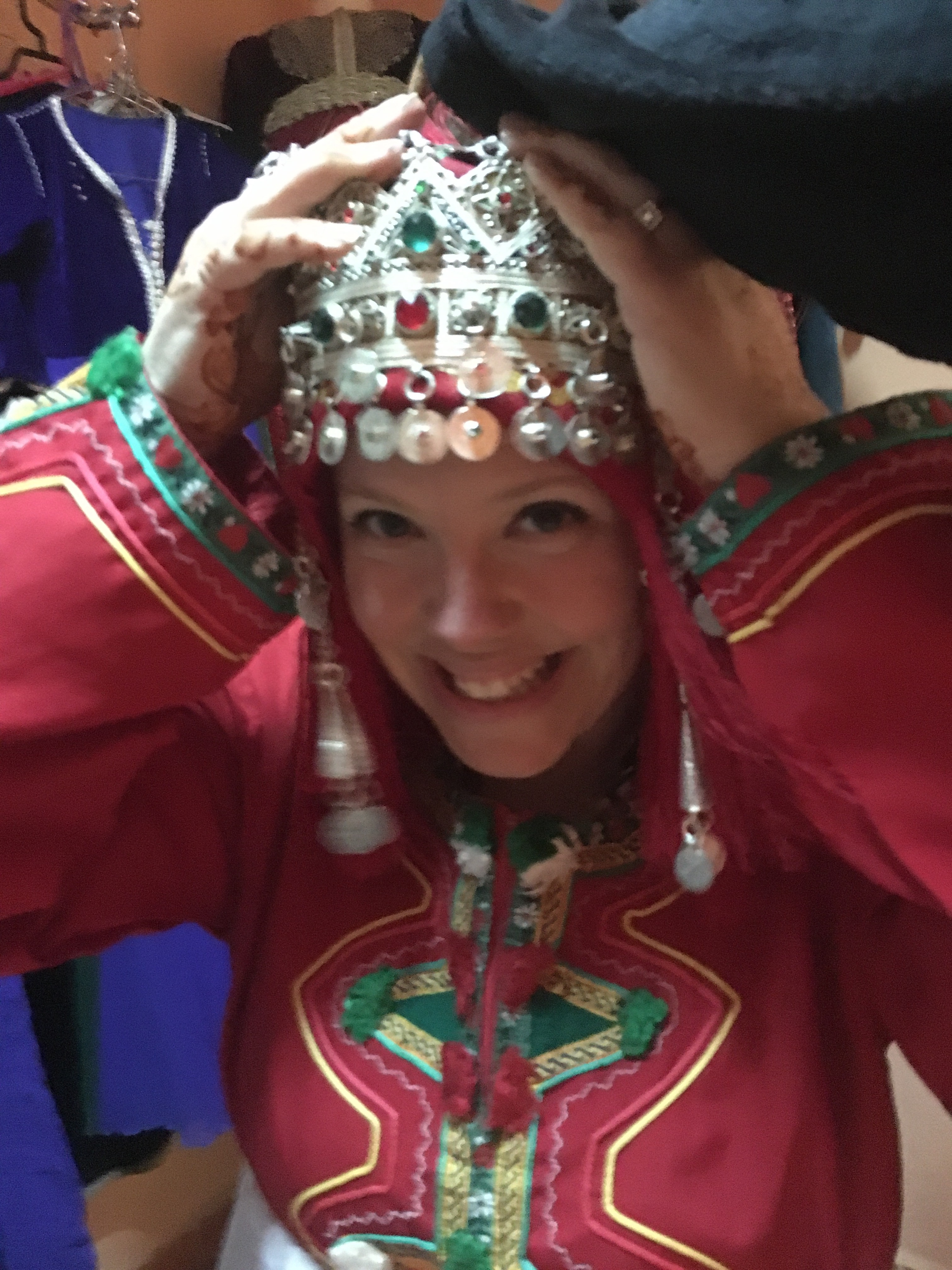
This is the traditional Berber wedding dress:

The next dress, traditional Arabic wedding gown, had several layers, was quite heavy, but oh so beautiful! The jewelry is exquisitely elegant.
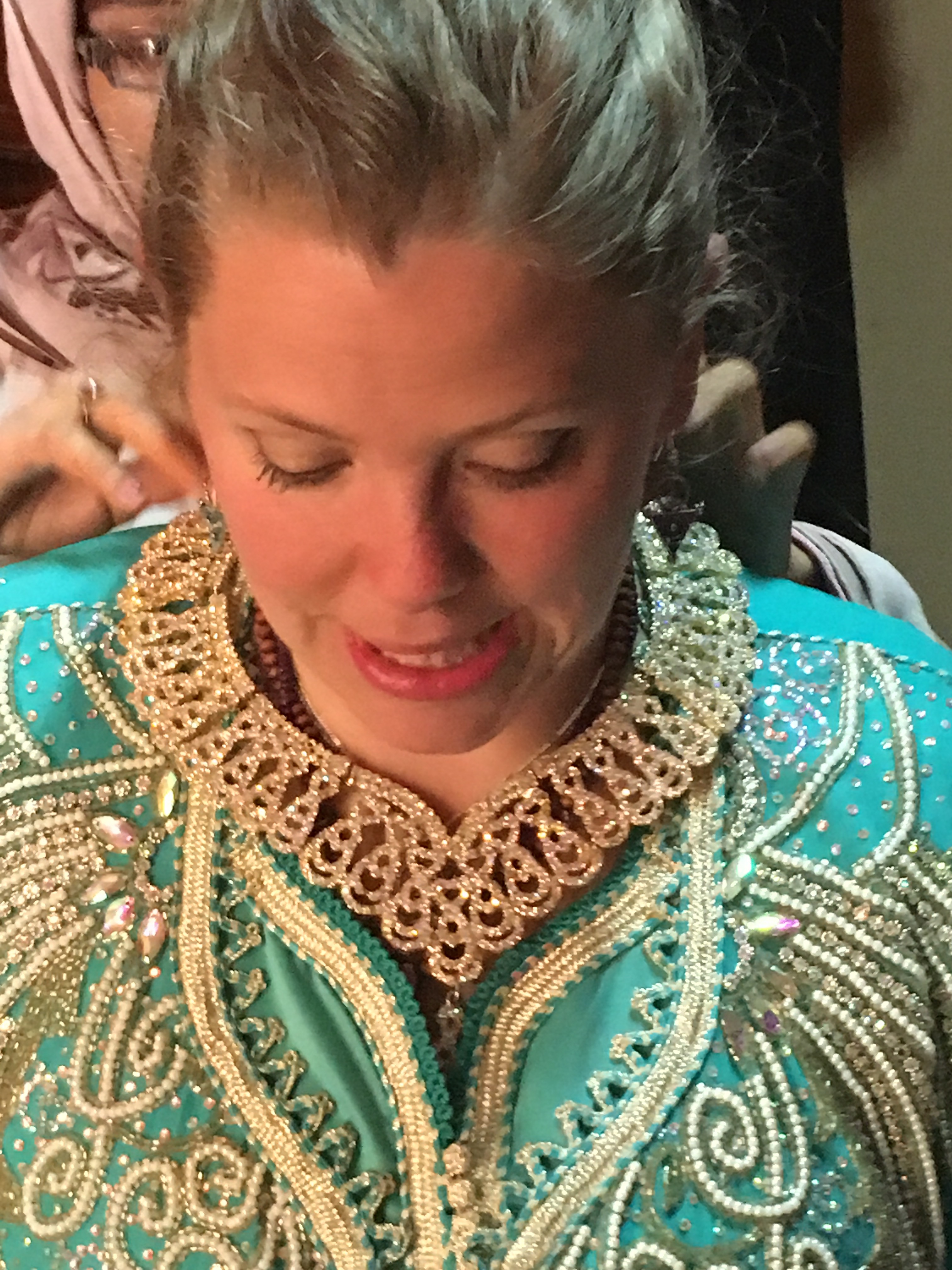
I felt like a queen!
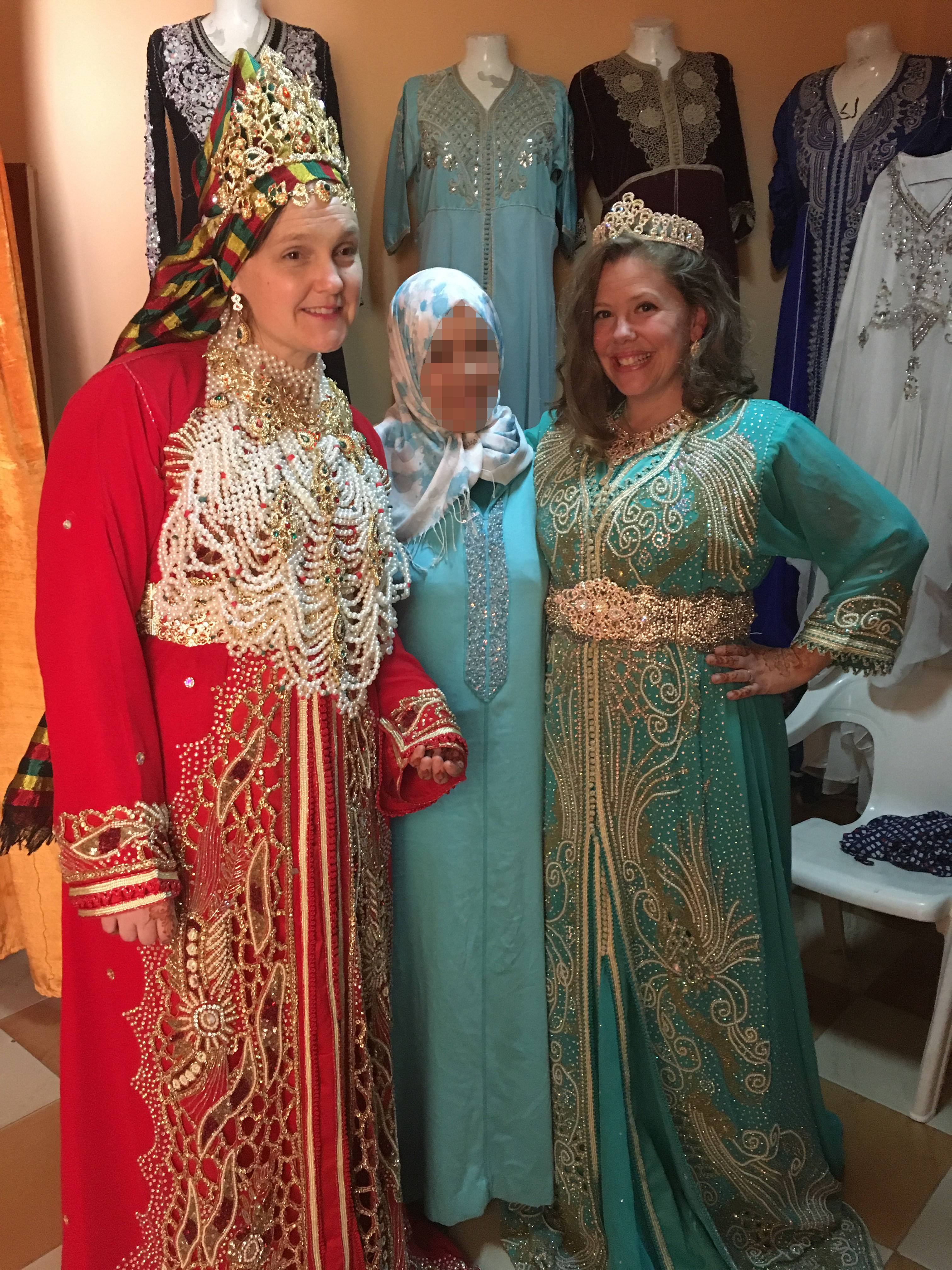
I never wear heels, but these shoes were comfy and so cute!

This last dress was a traditional Sahara (southern Morocco) wedding dress:
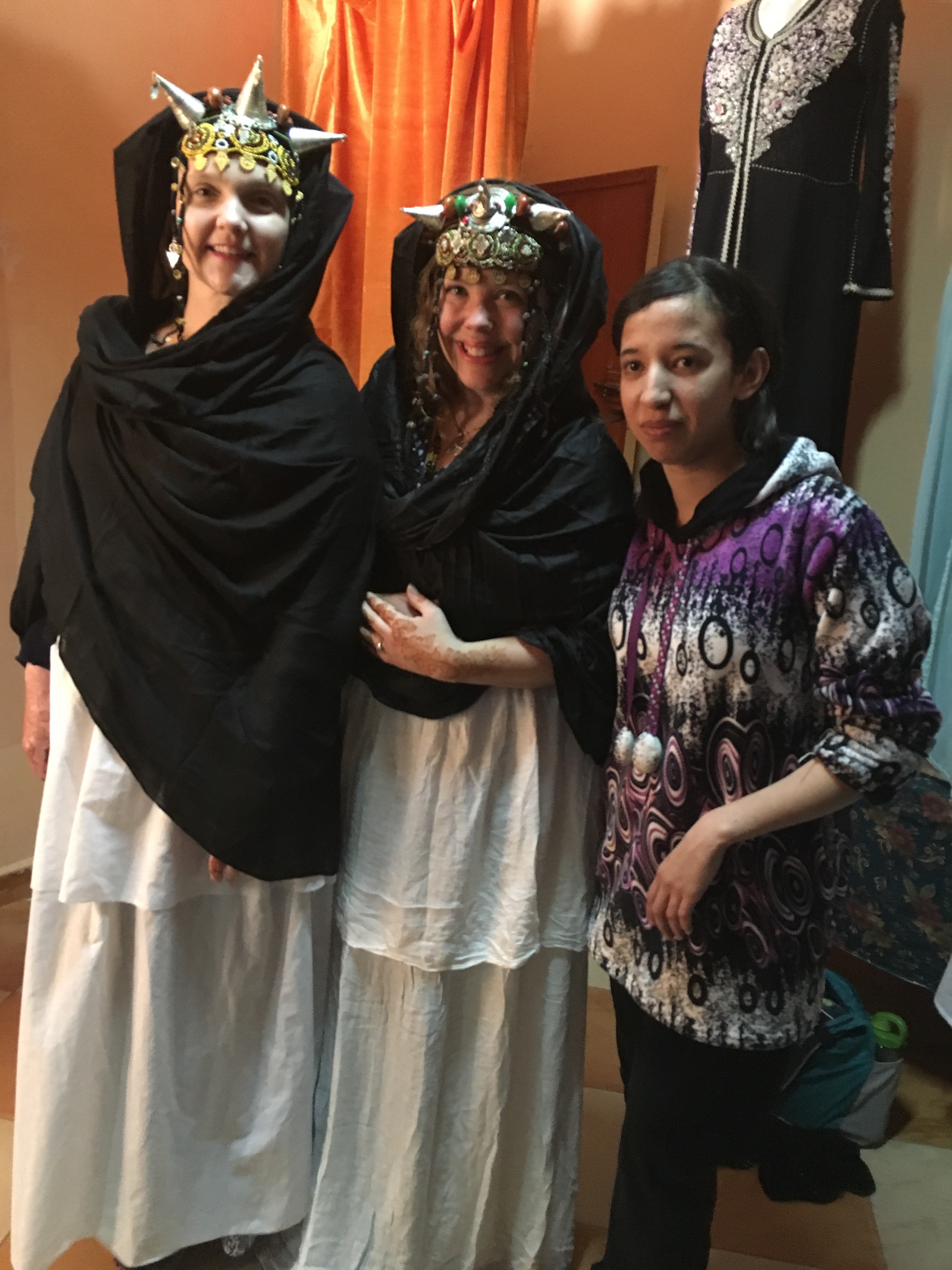
Here are some other pictures of the wedding dresses we found in the Souk.
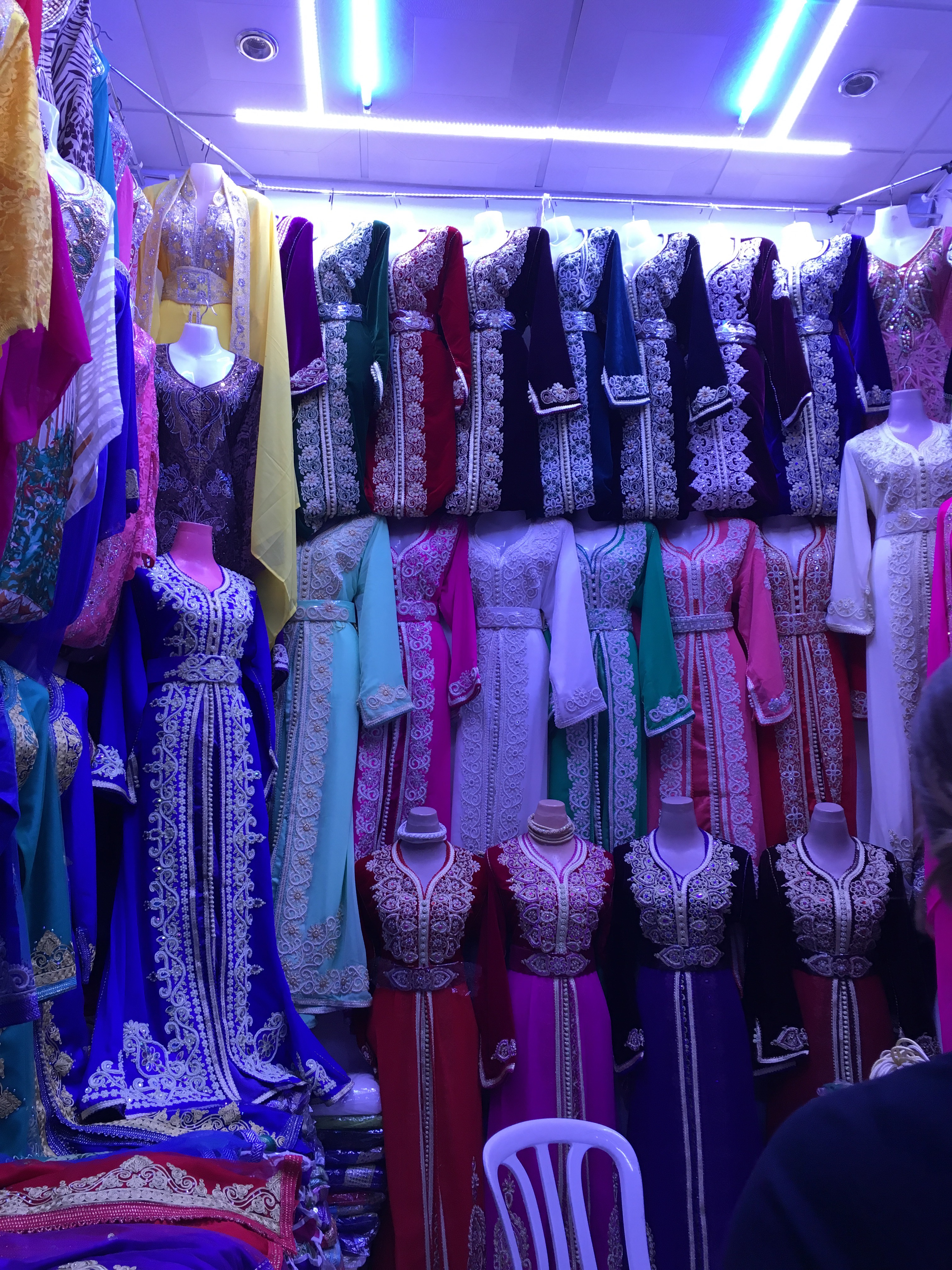

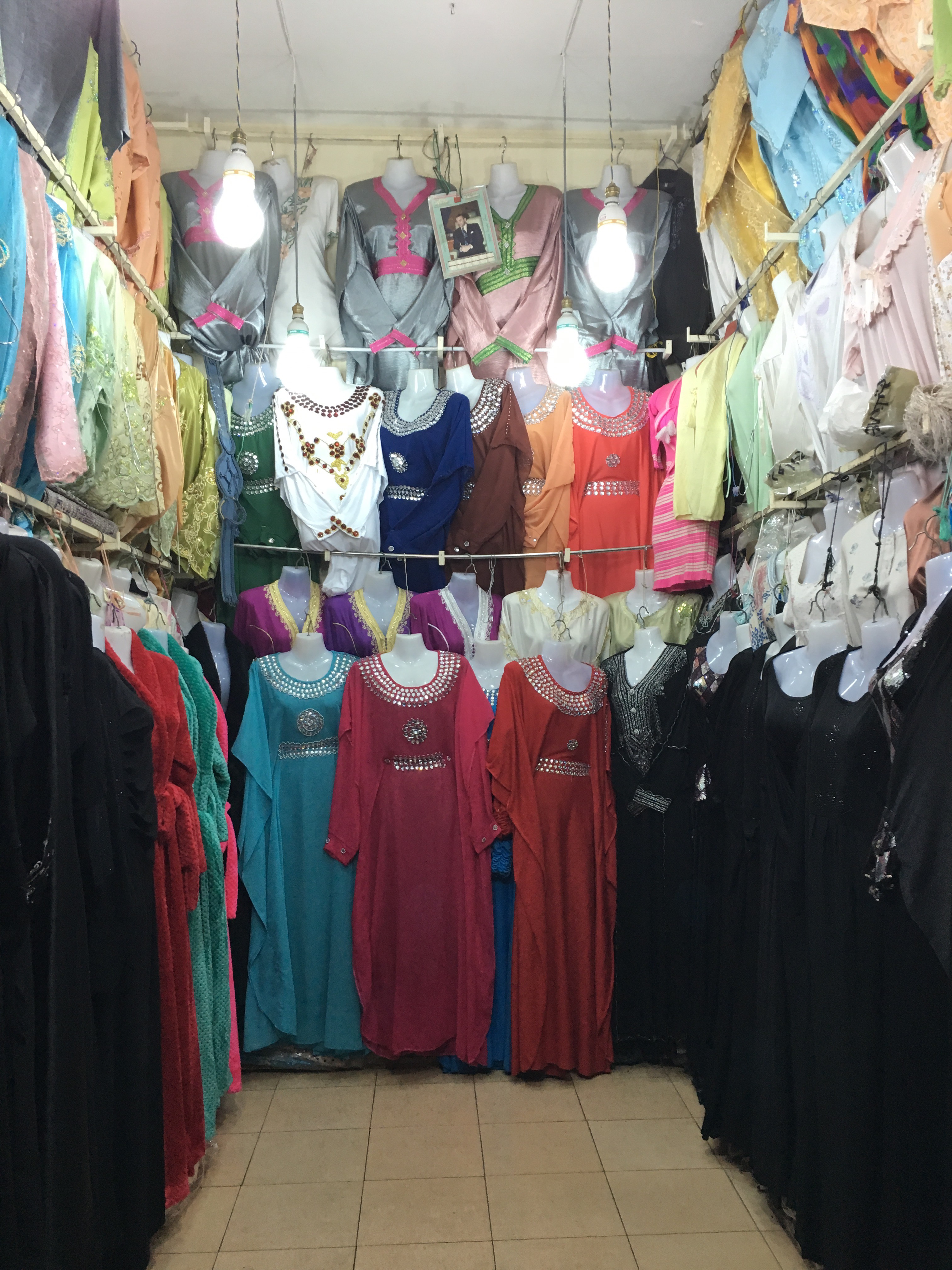
Beauty, elegance, and tradition are such a key feature in Moroccan weddings. The wedding is self last from three days to two weeks, and often includes hundreds of people, to celebrate the union.
Cheers!
by Michelle Carton | Mar 26, 2017 | Morocco
Having the opportunity to be inside an elementary school, although a private school, gave a great perspective as to the diversity in schools.
Alaskan students have been asking a lot about what elementary schools look like in Morocco. This is just one example but a great one indeed.
There were lots of colors and lots of excitement. Students prepared us some great questions and we even got a music performance.
I found this pencil holder which was made at school out of recycled materials.
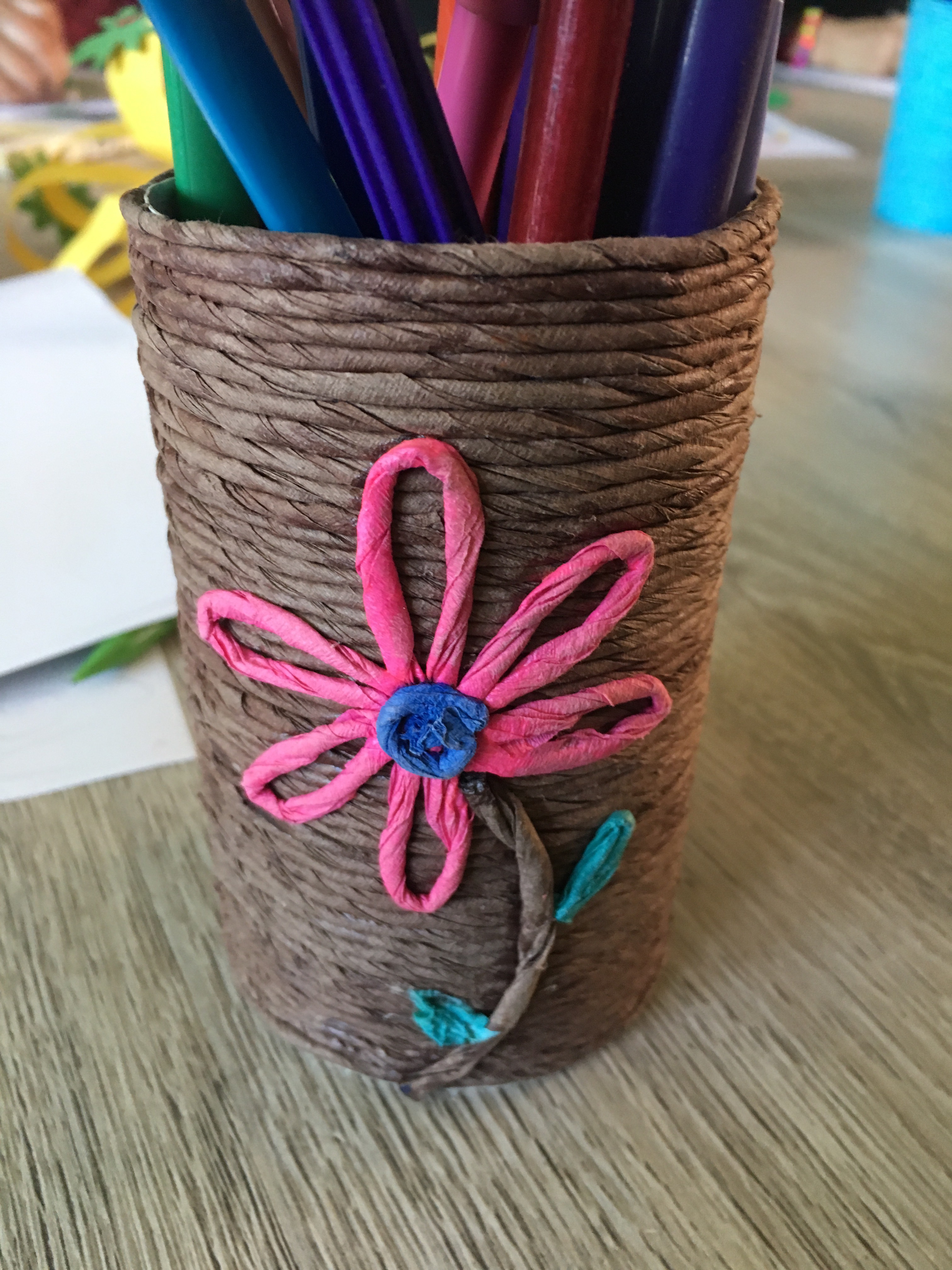
This is the courtyard that all the classrooms are based around. It looks like it’s inside, but it is actually outside open air. The kindergarten and first grade classrooms are on the first floor, the second through 6th grade grade classrooms are on the second floor, and the middle school and library are on the top floor. There are about 1000 students total at the school (if I remember correctly).
Every morning students are in lines in the courtyard to do the country anthem, which is a song.
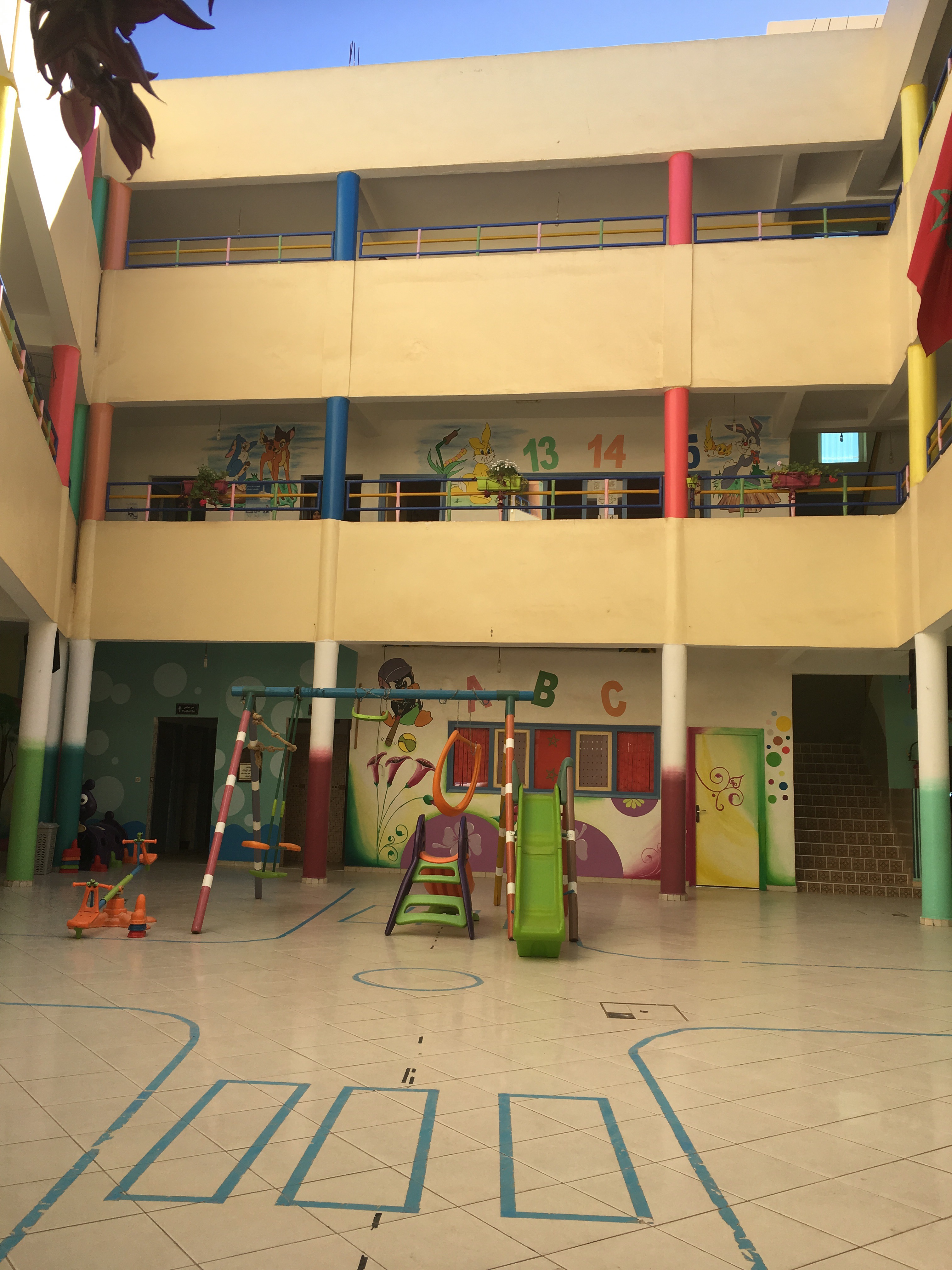


Here we have a fabulous artist and teacher painting the inside of the classroom, who also did some of the painting on the outside walls. Bright colors and fun pictures are so inviting for children.
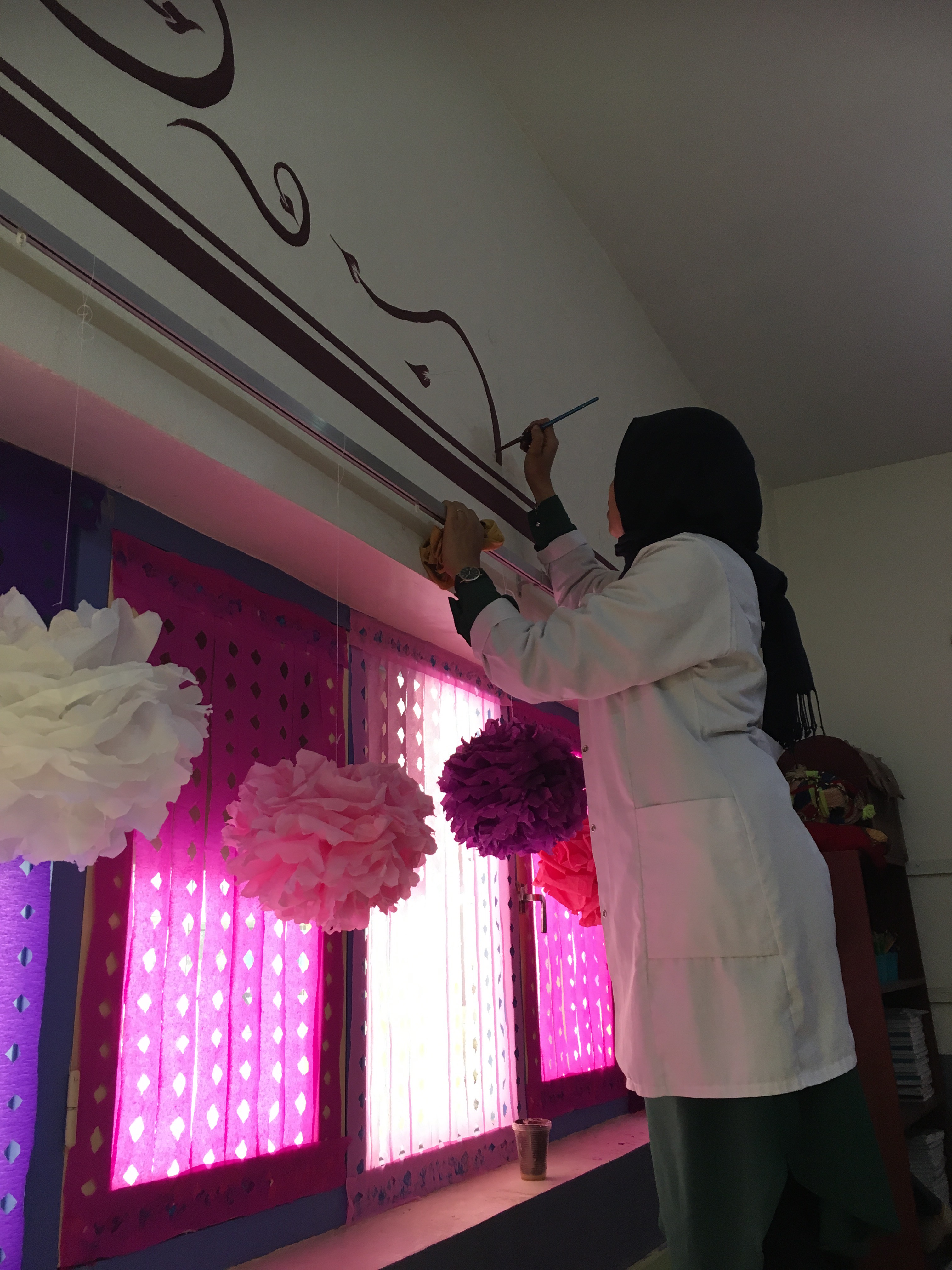
Classroom students were so welcoming as we went around school. A lot of the desks looked like this. While the classrooms were smaller than ours in the Alaska classroom, they were bright, cheery, and full of learning.
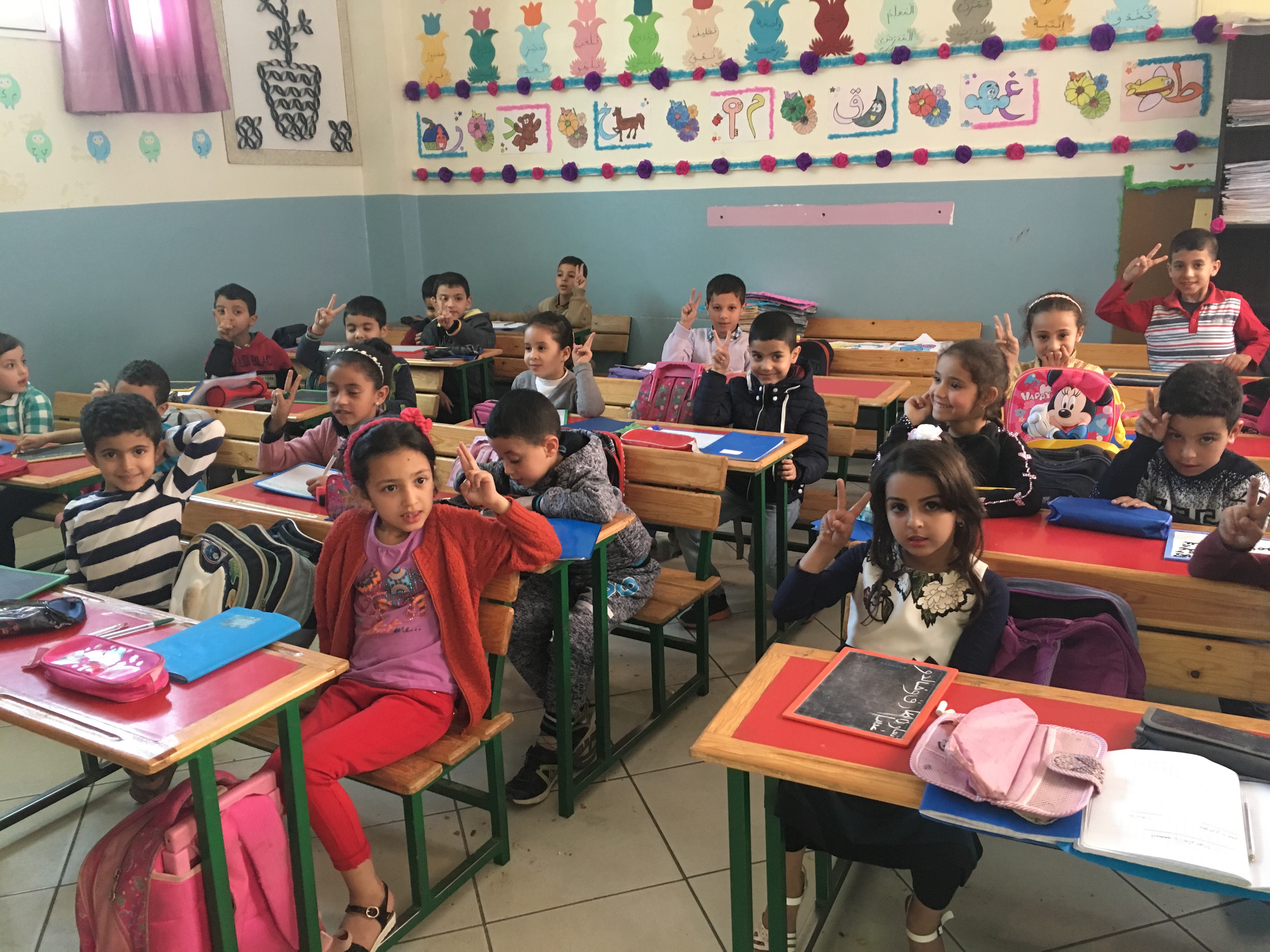

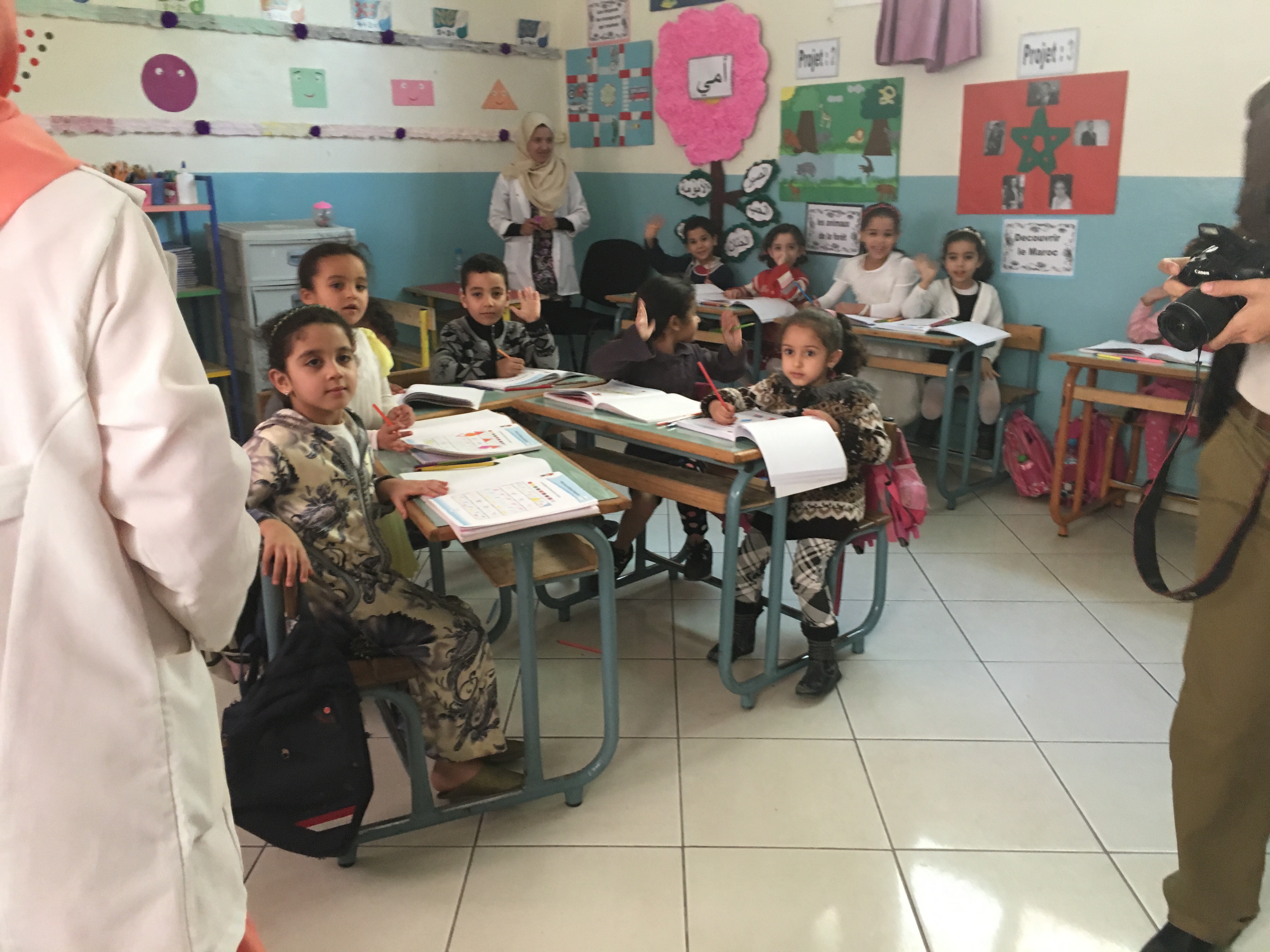
This classroom was so bright and the students were so excited to meet us.
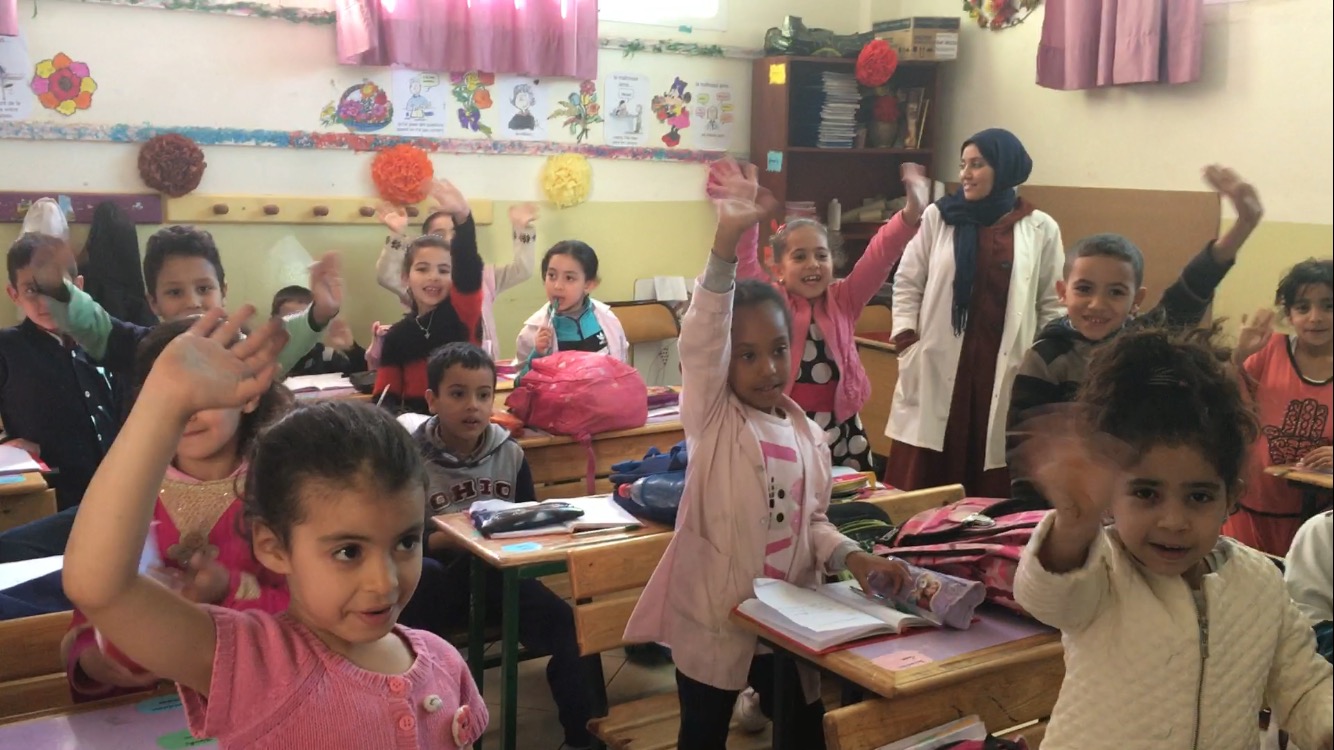
As students learned a new letter, a circle went up on the wall to add to the Catapillar. While the letters look English, they were actually learning French.
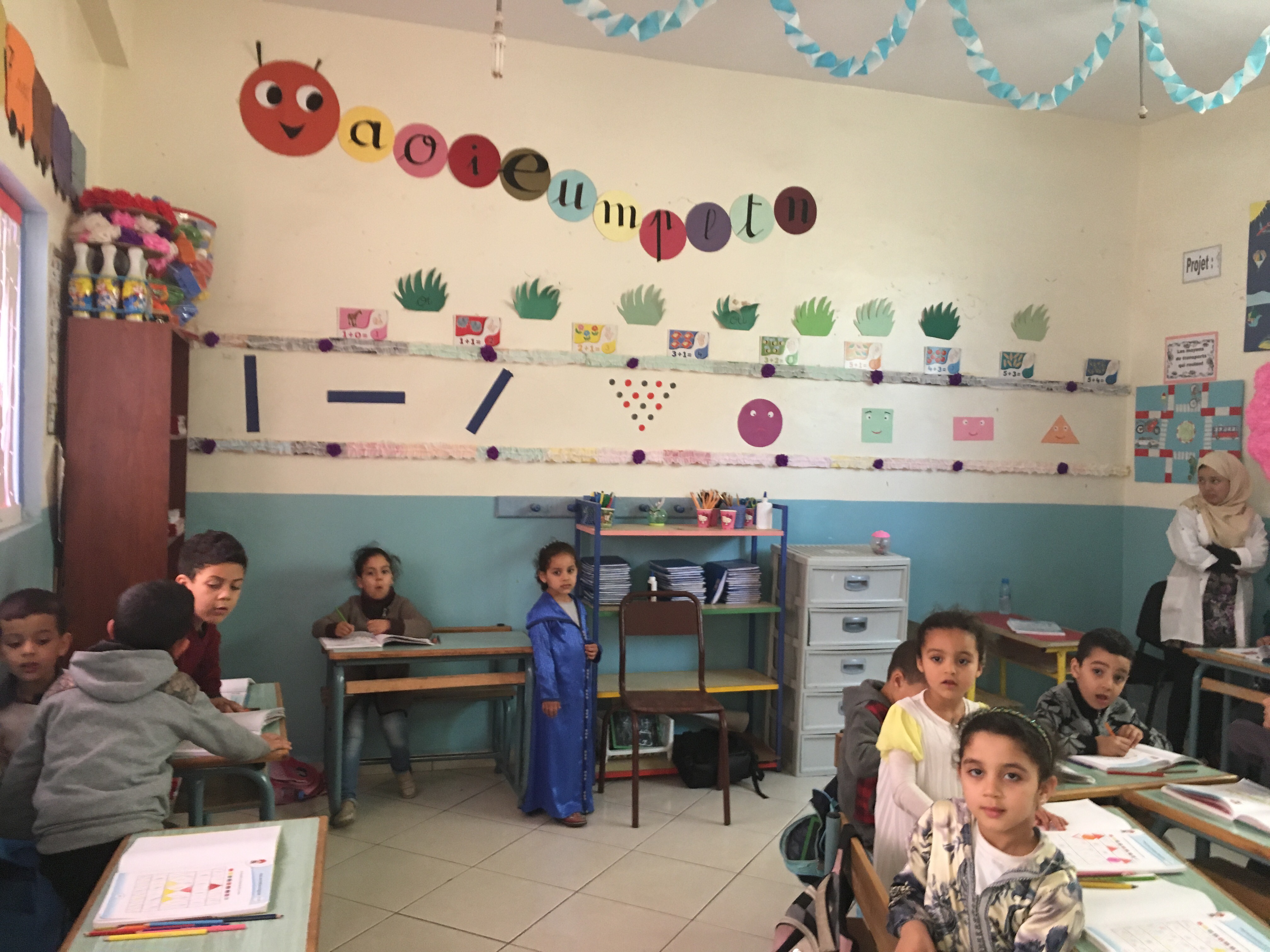
Lots of pictures were used in order for students to learn the words and language for lots of things, including animals.

Just like our youngest classes in Alaska, students use objects in order to learn.


This is a kindergarten student (kindergarten in Morocco is any student between 3-5).

I even got a lesson on the beginning stages of learning Arabic.
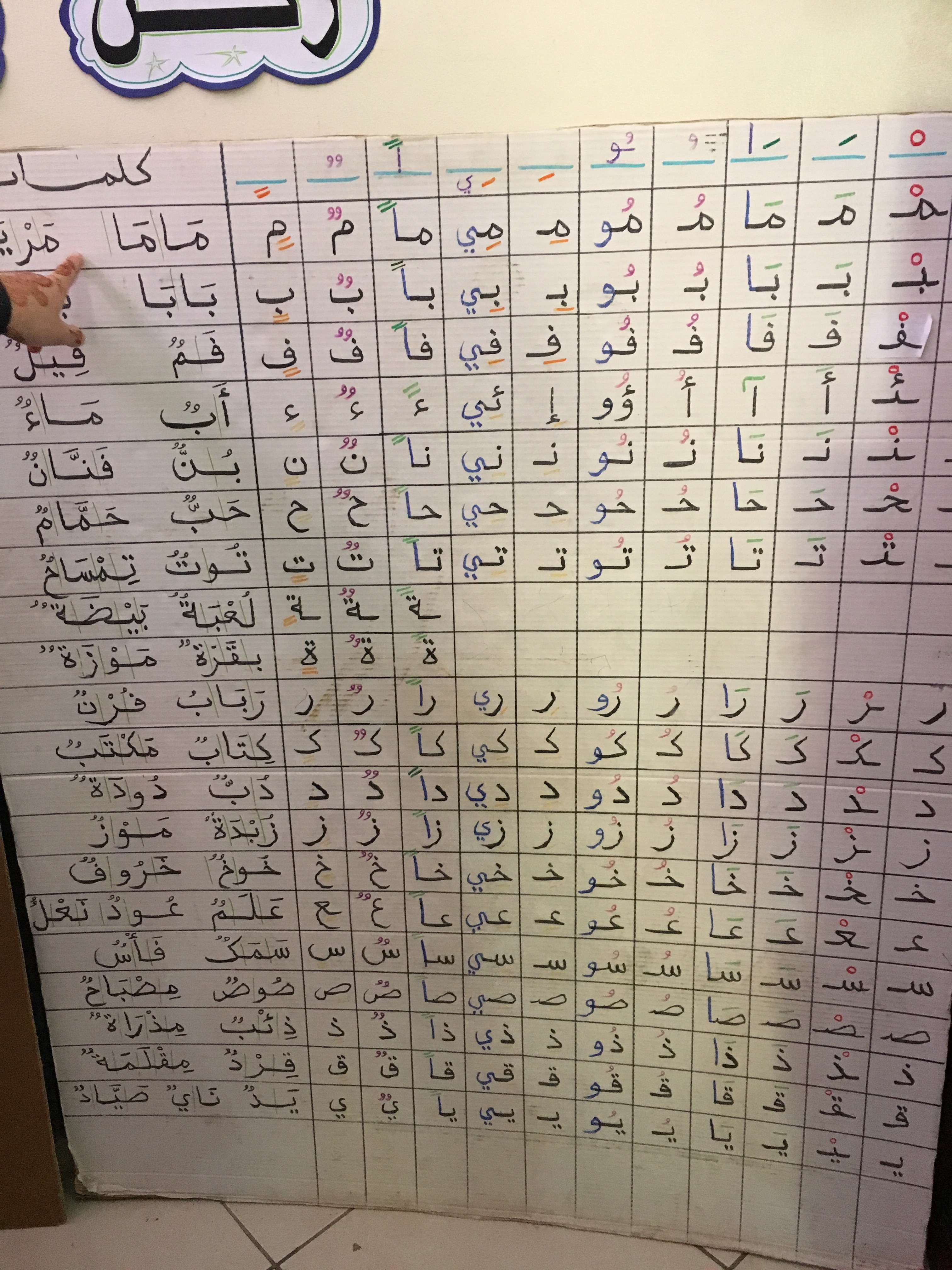
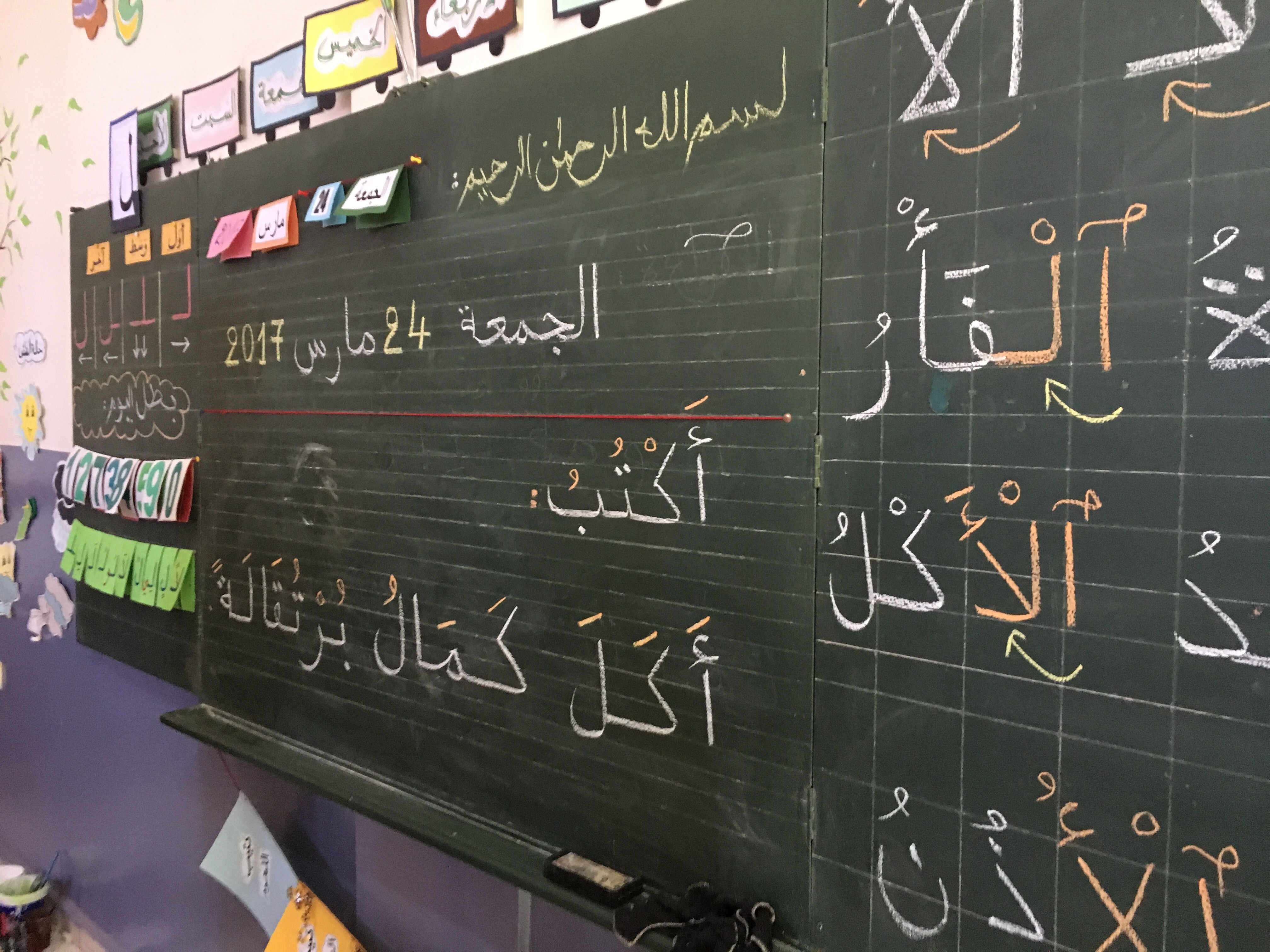
Here are some workbooks as students were working on math.
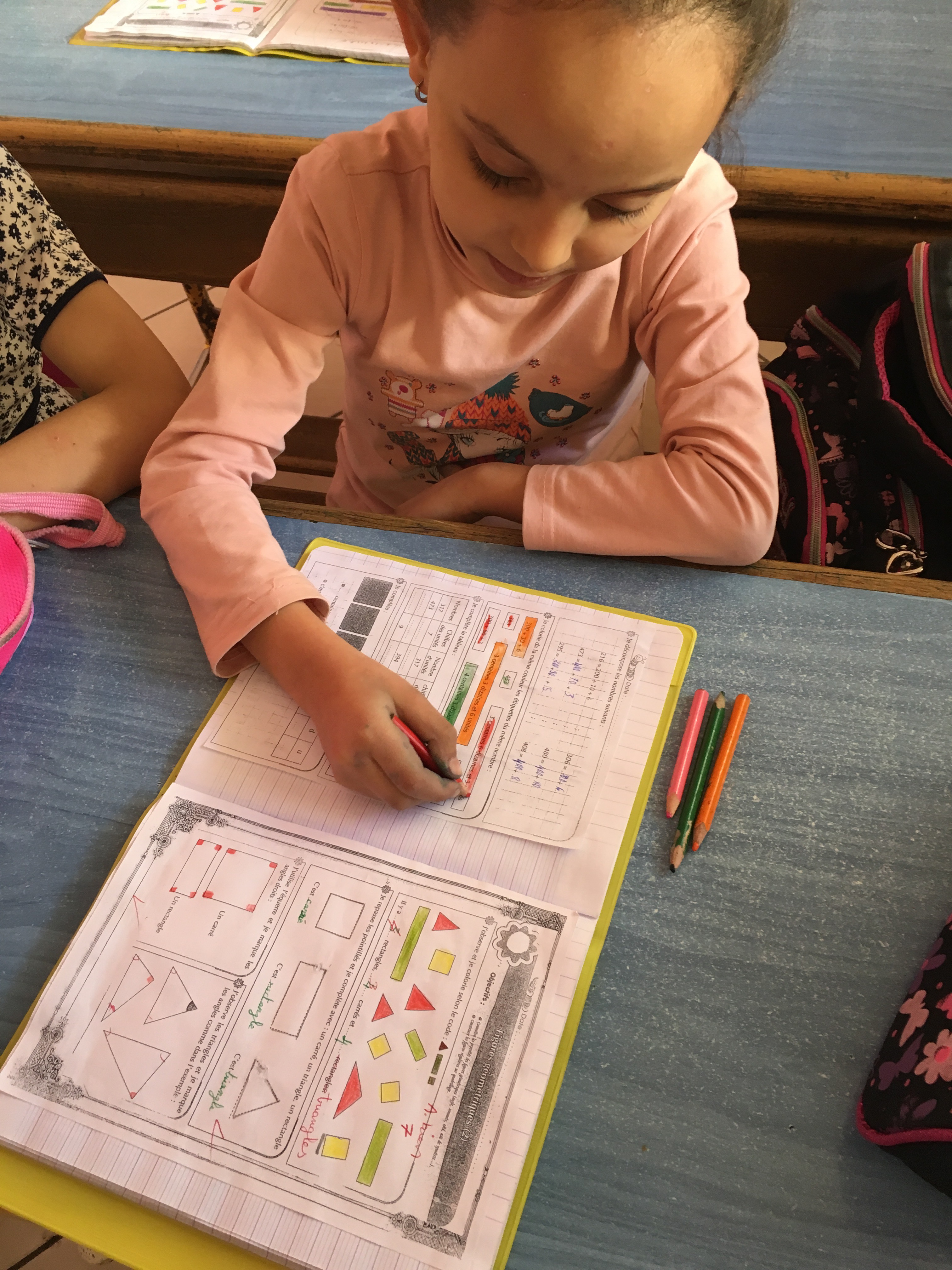

Here is the money students learn about in school, just like our students do. Each time there is a new king, they make new money. The face on this money is the current king.
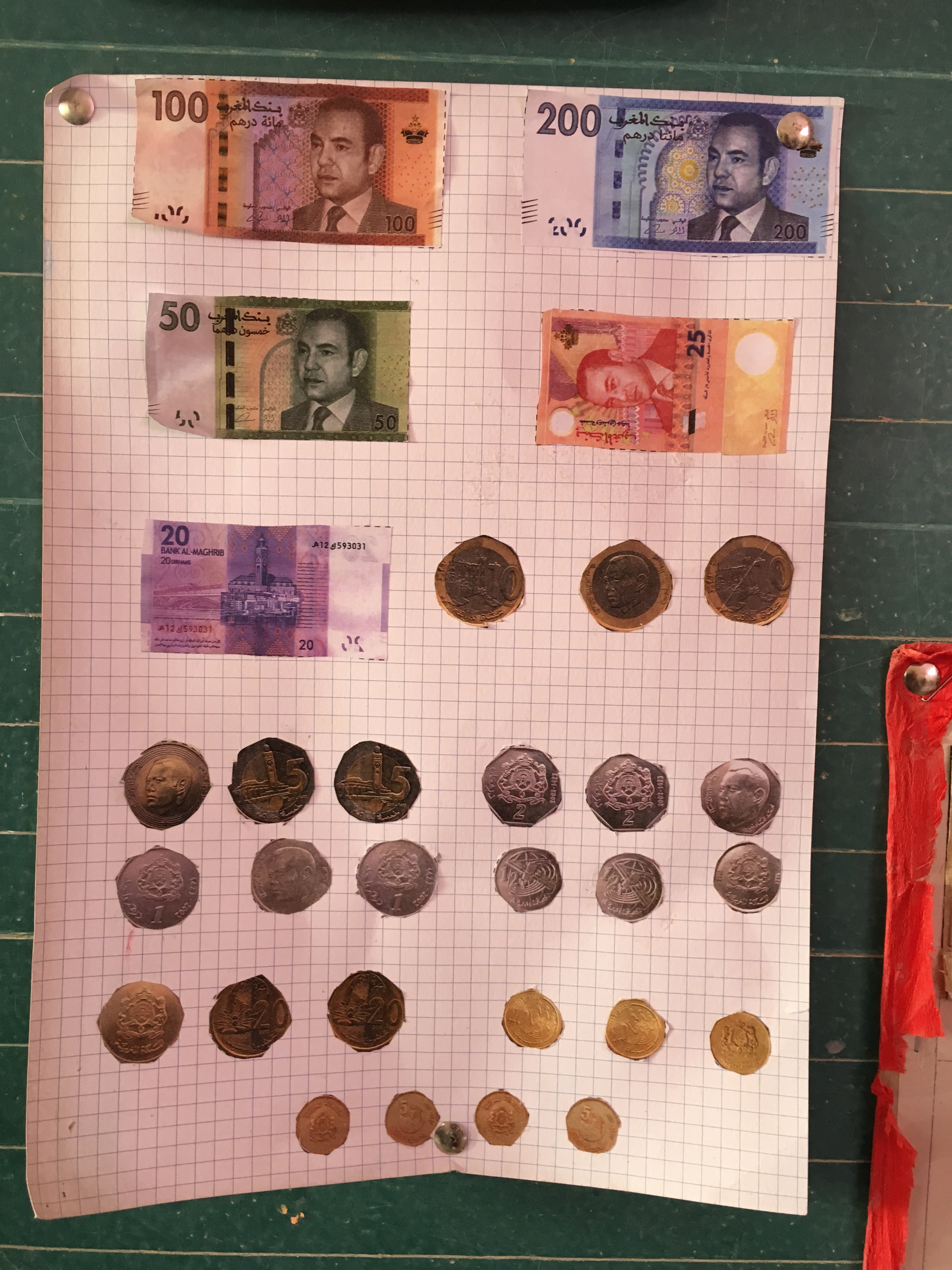
This math lesson is taught in French.
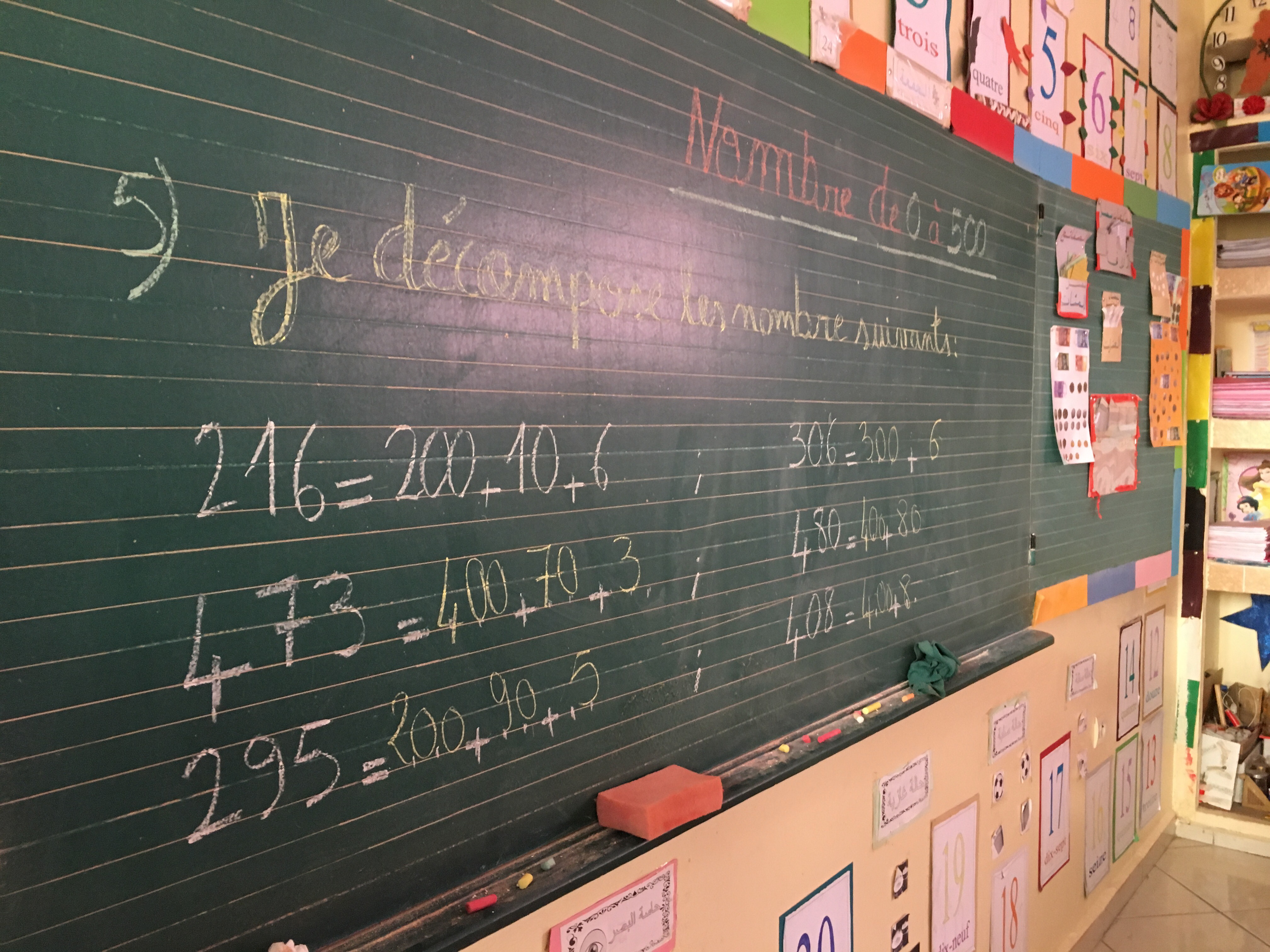
This is the area where teachers store materials. Students rotate classes to take different subjects in different languages, therefore starting in second grade students don’t stay in one room all day.
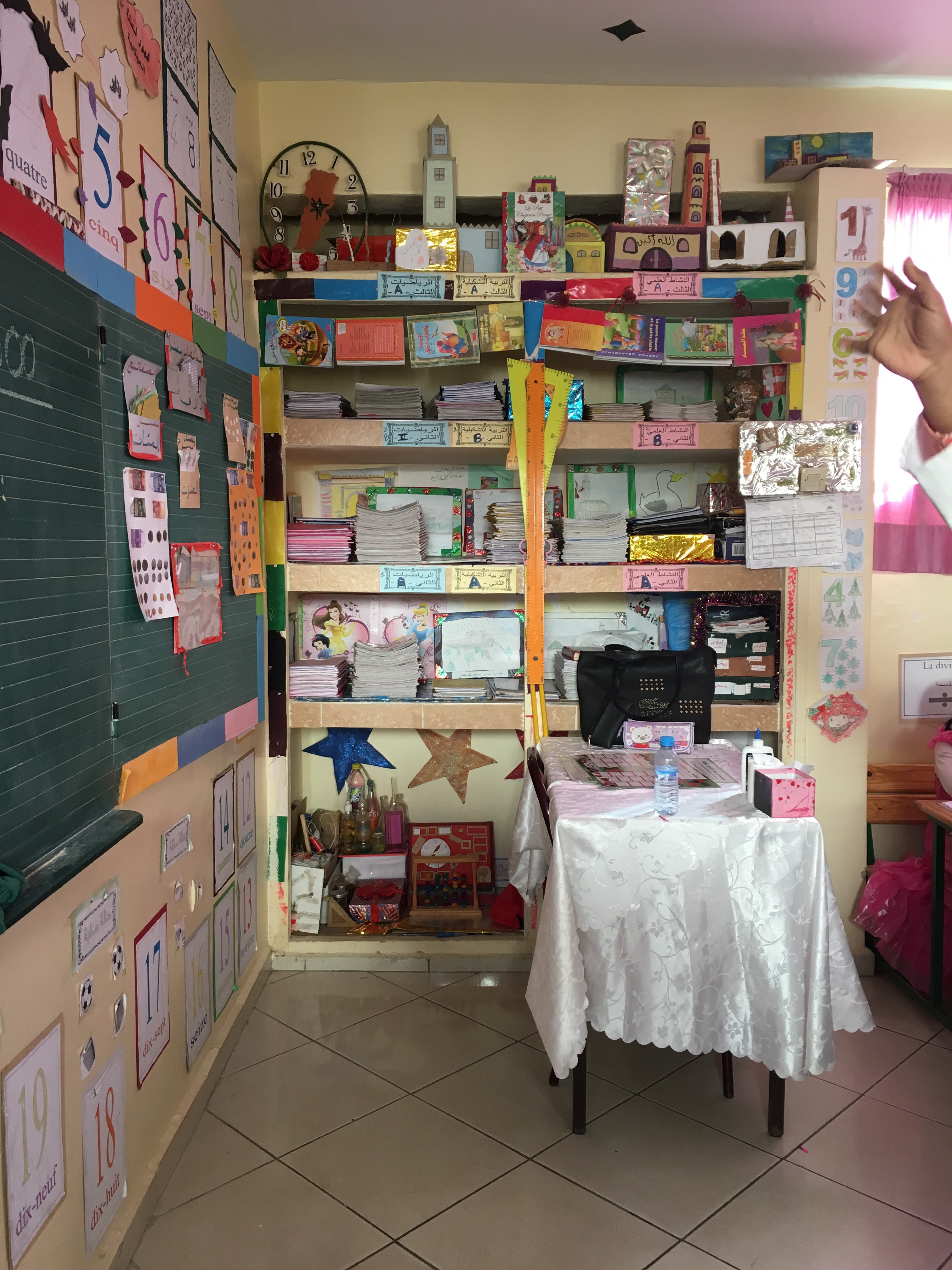
These 6th grade students were having a party to celebrate the last day of school before spring break.
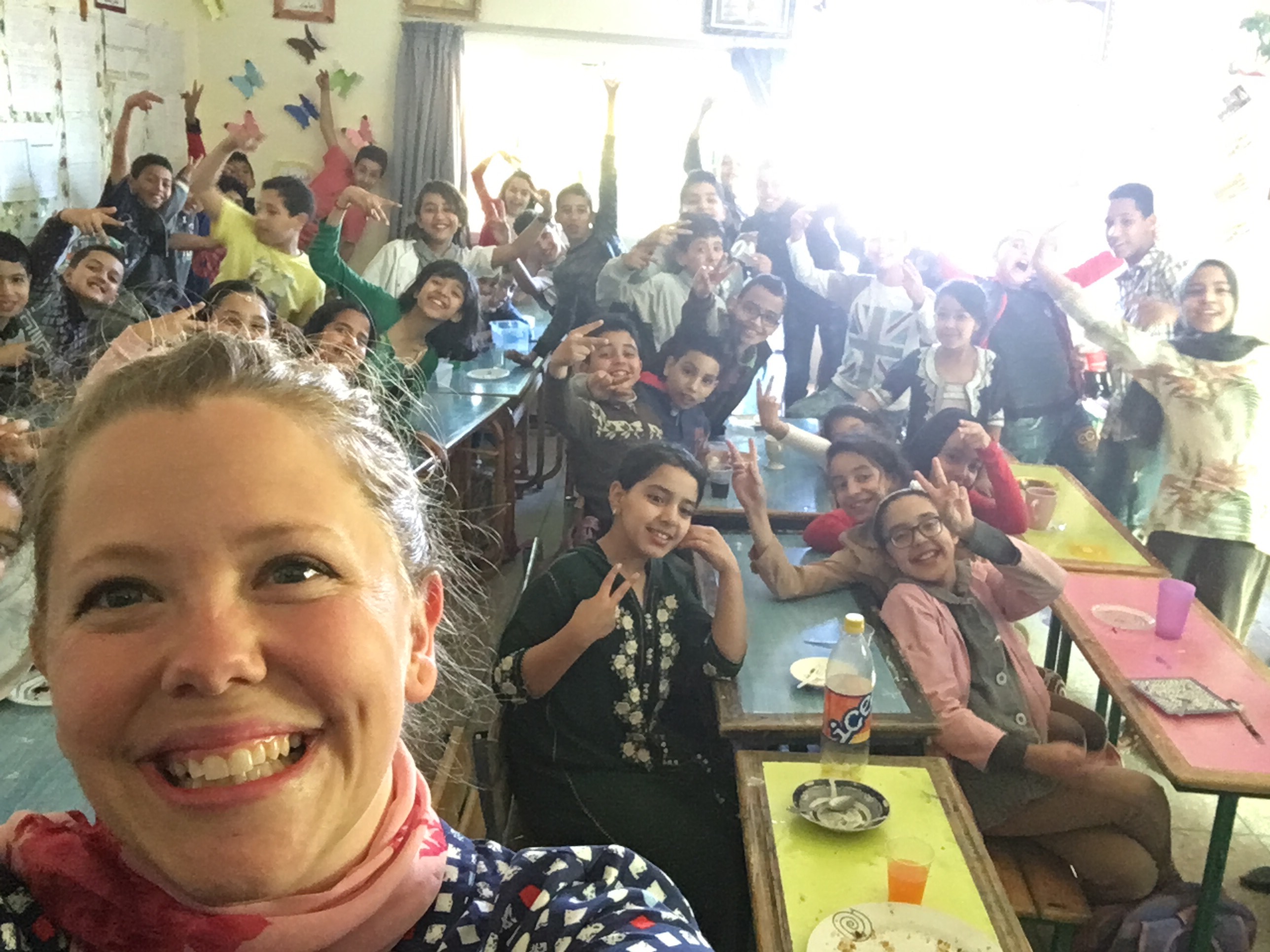
The middle School students put on an amazing music performance for us that was written and conducted by their music teacher.
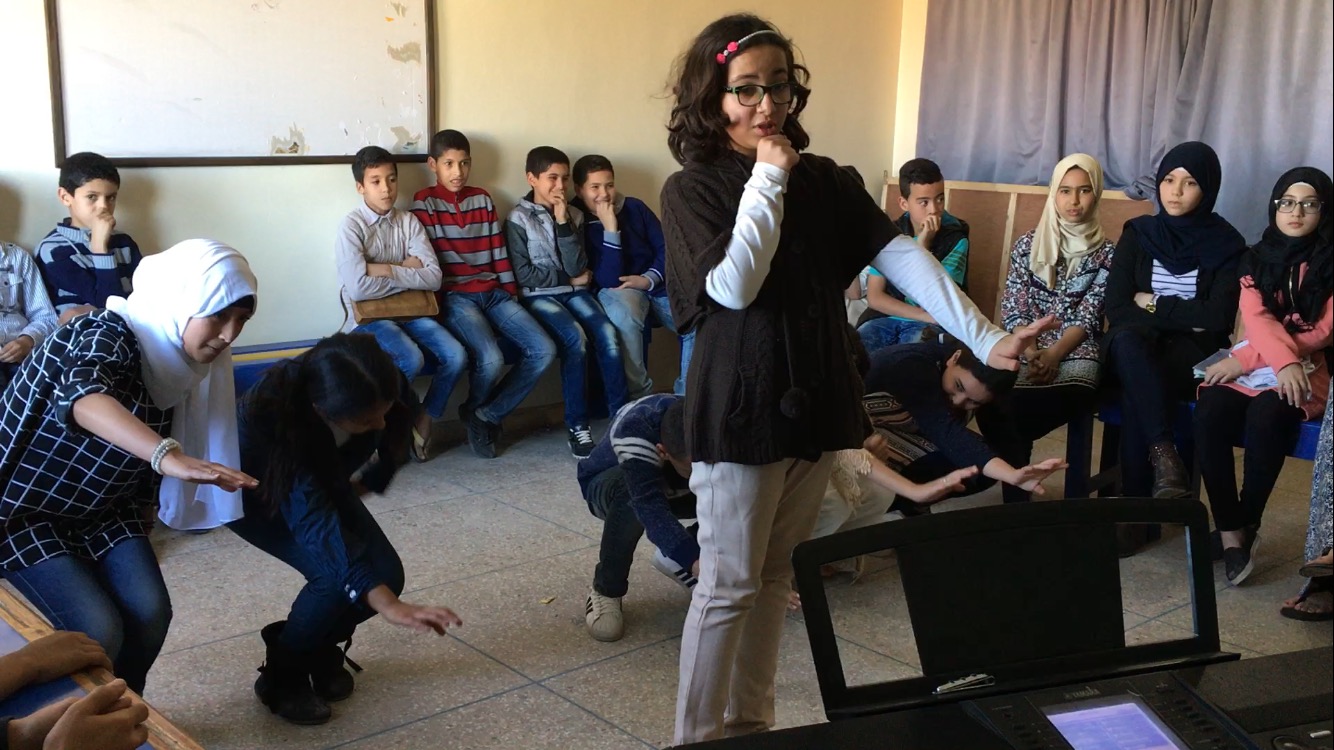

There were so many more things I wanted to capture on camera, but by then my phone had died and I had to simply enjoy the experience. We ended our day with a question about American schools and life session with the middle school students (7-9th grade). They asked amazing questions on the conversations was great.
This was a fantastic experience.
by Michelle Carton | Mar 26, 2017 | Morocco
So I finally got to visit an elementary school and do some activities in the library with students. While the library is quite small in comparison to our Tudor Elementary Library, it is quite impressive, as books can be found in Arabic English and French. Spending time with students in the library was lots of fun!


Instead of students having library cards, there is a card for every book in the library and the students name goes on the card when they check it out.

I wrote a message in the book that we were donating to the school so that they can always remember Alaska.

Moroccan students really like the pictures that Alaskan students made for them and we’re happy to make pictures in return.
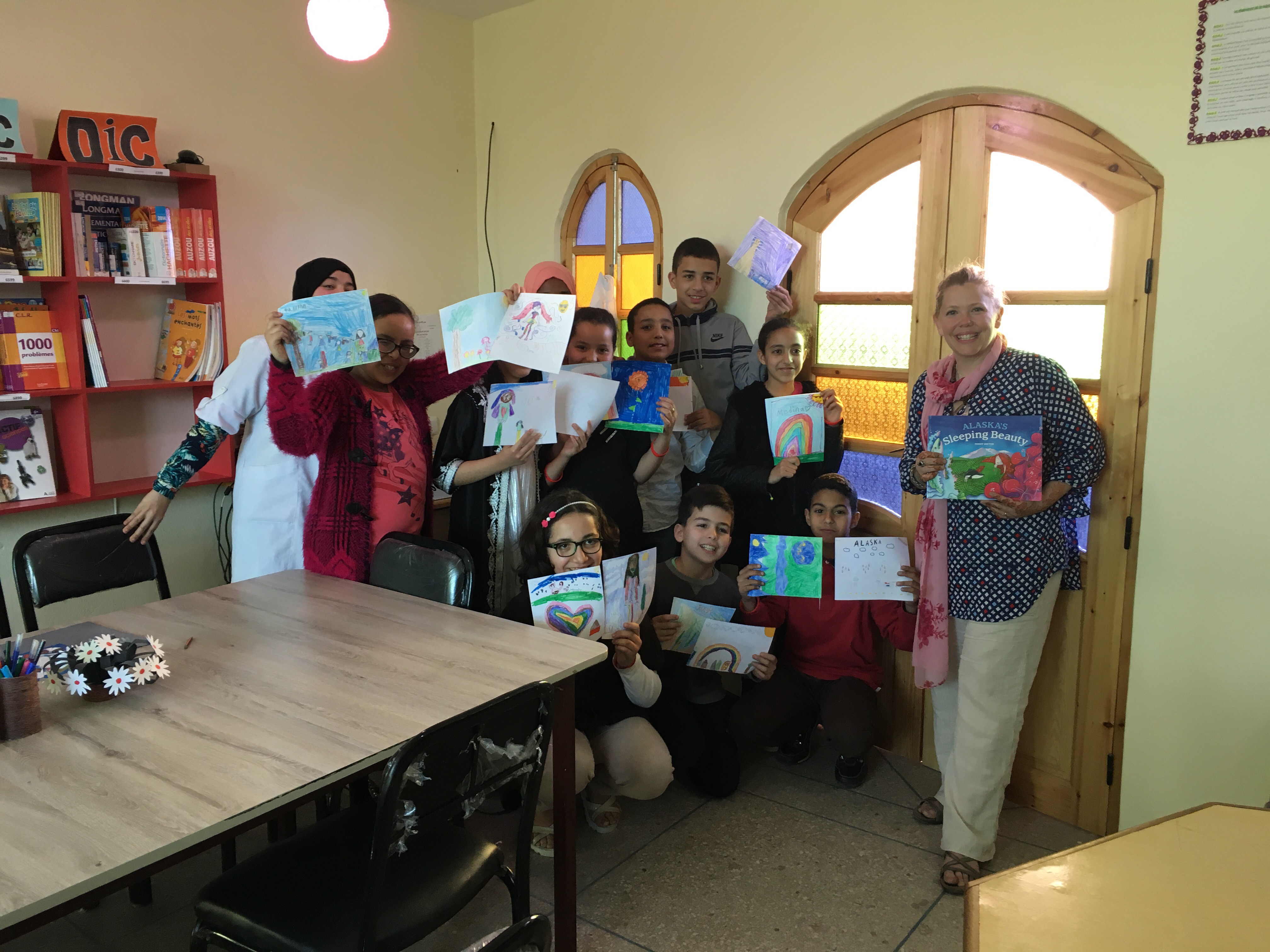
These teachers are fabulous, exciting, kind, and looking forward to connecting their students with Alaskan students.
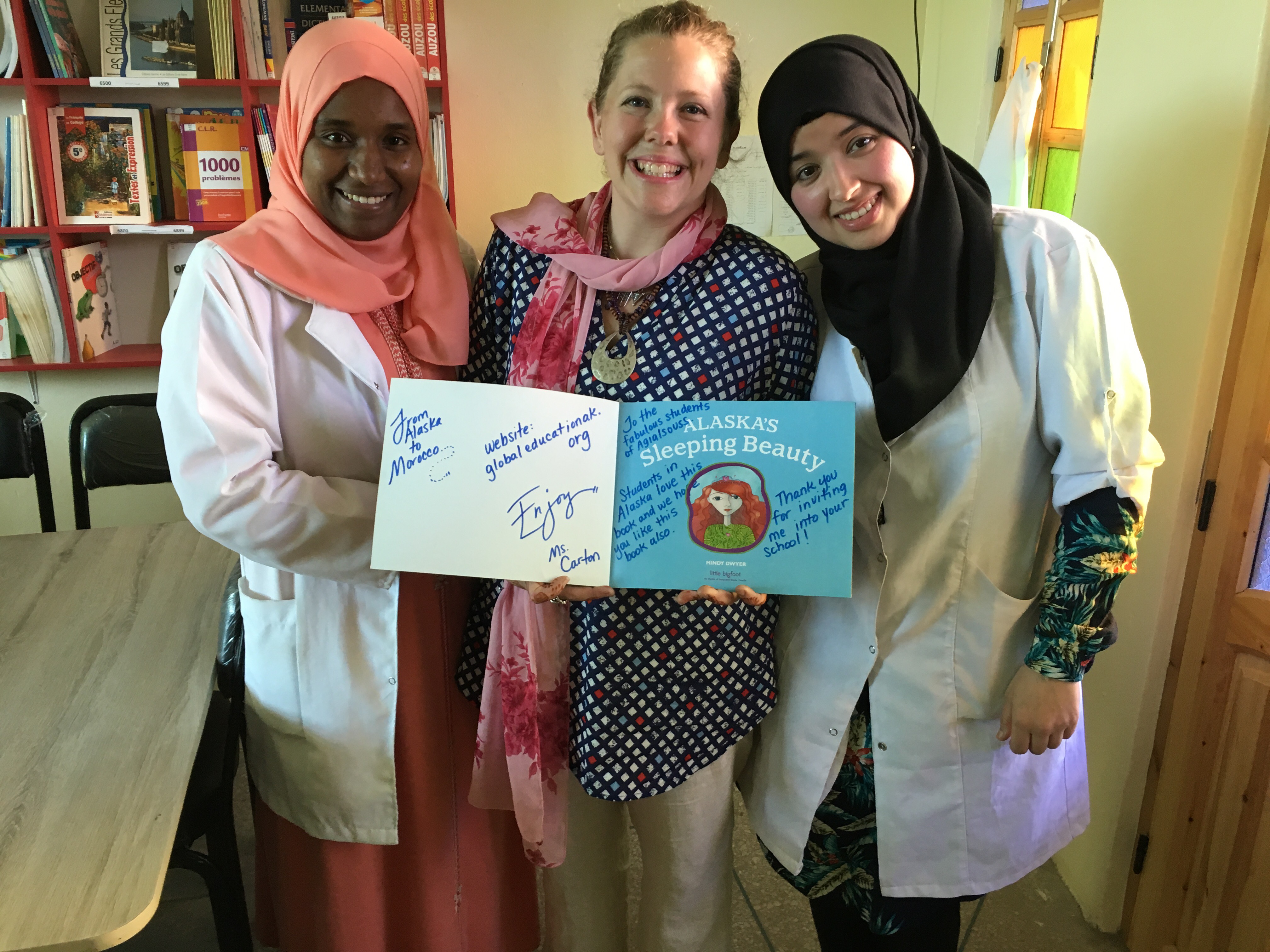
Here are some students working on their art:
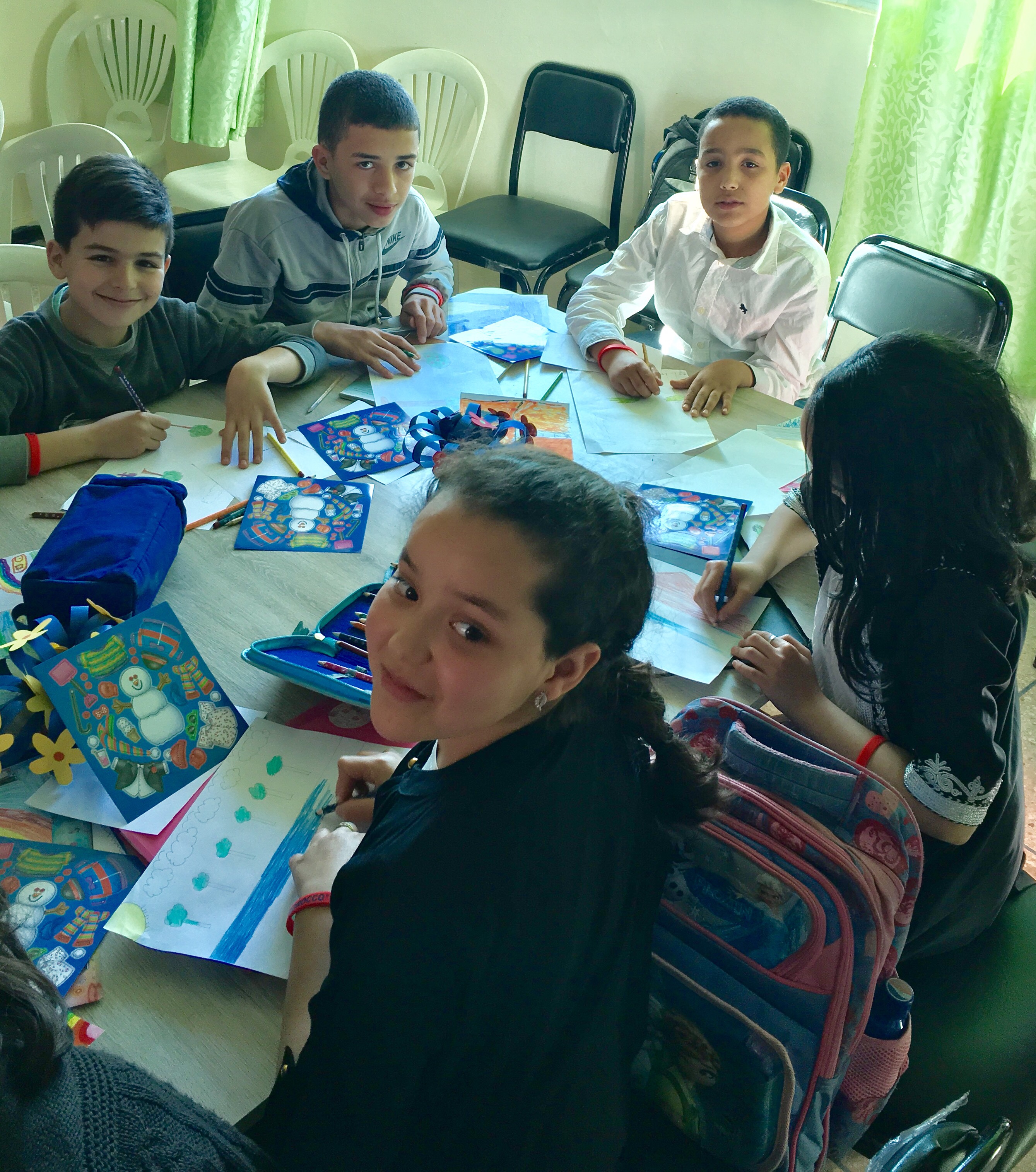


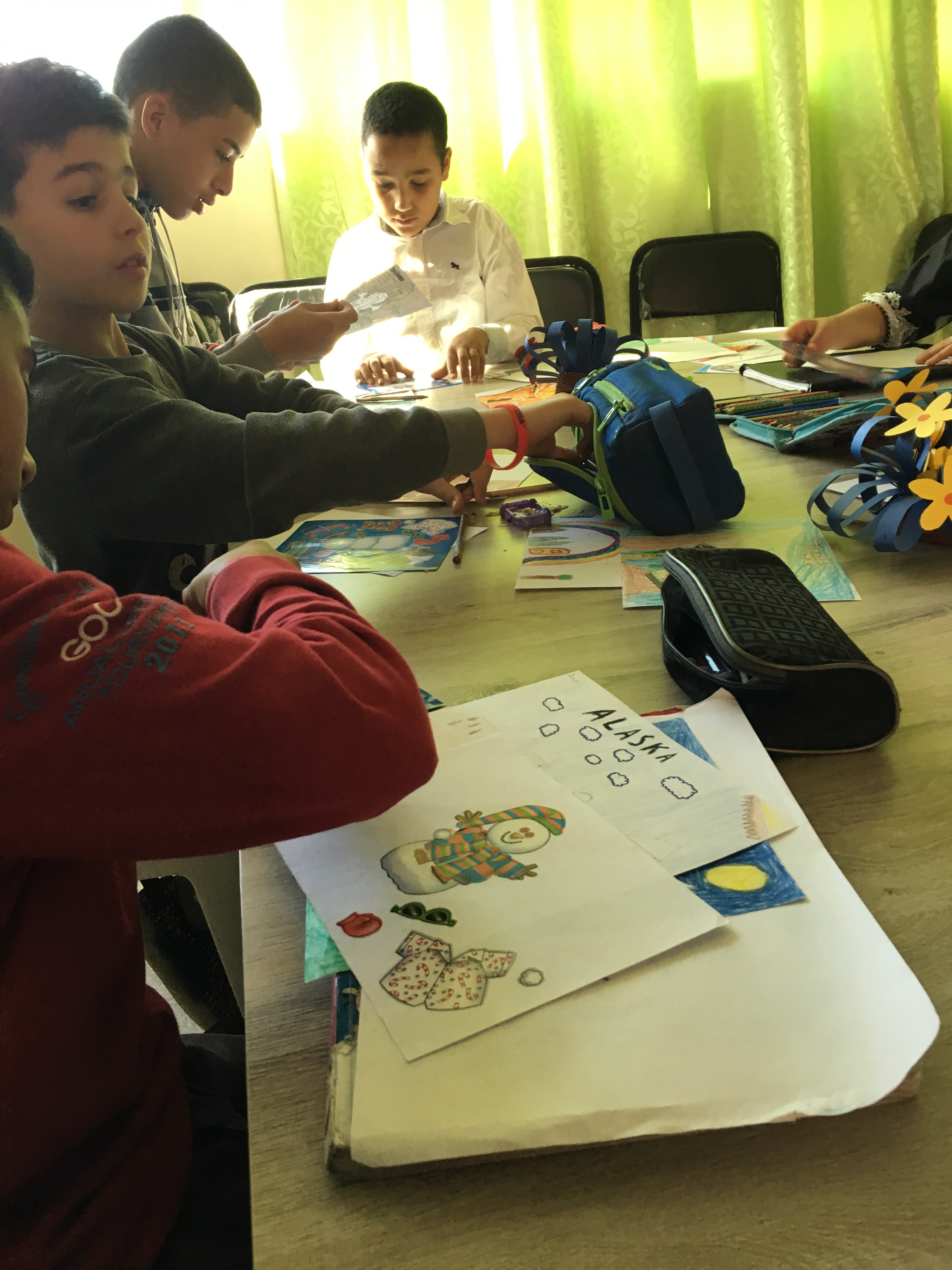
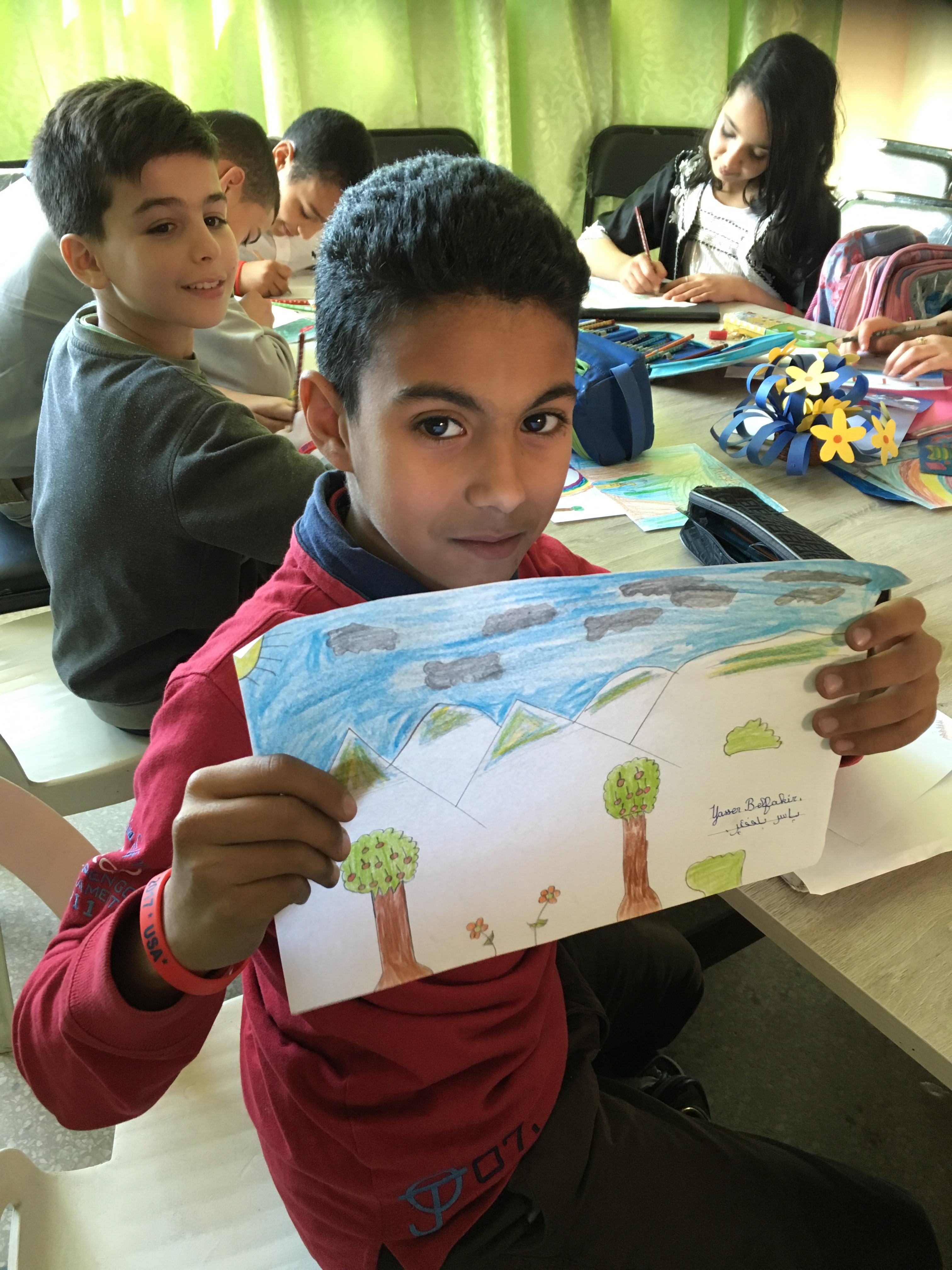
I had such a great time at the school that I didn’t want to leave. The students were so lovely to work with. I hope indeed to come back someday soon!
by Michelle Carton | Mar 25, 2017 | Morocco
Moroccans cherish their food, and I mirror their sentiment; it isn’t just about the food itself it’s about the cultures and traditions that accompany the food. It’s about the love and energy that goes into the food.
Here are some highlights:
Tagine is slow cooking in a clay dish over coals, with amazing spices.
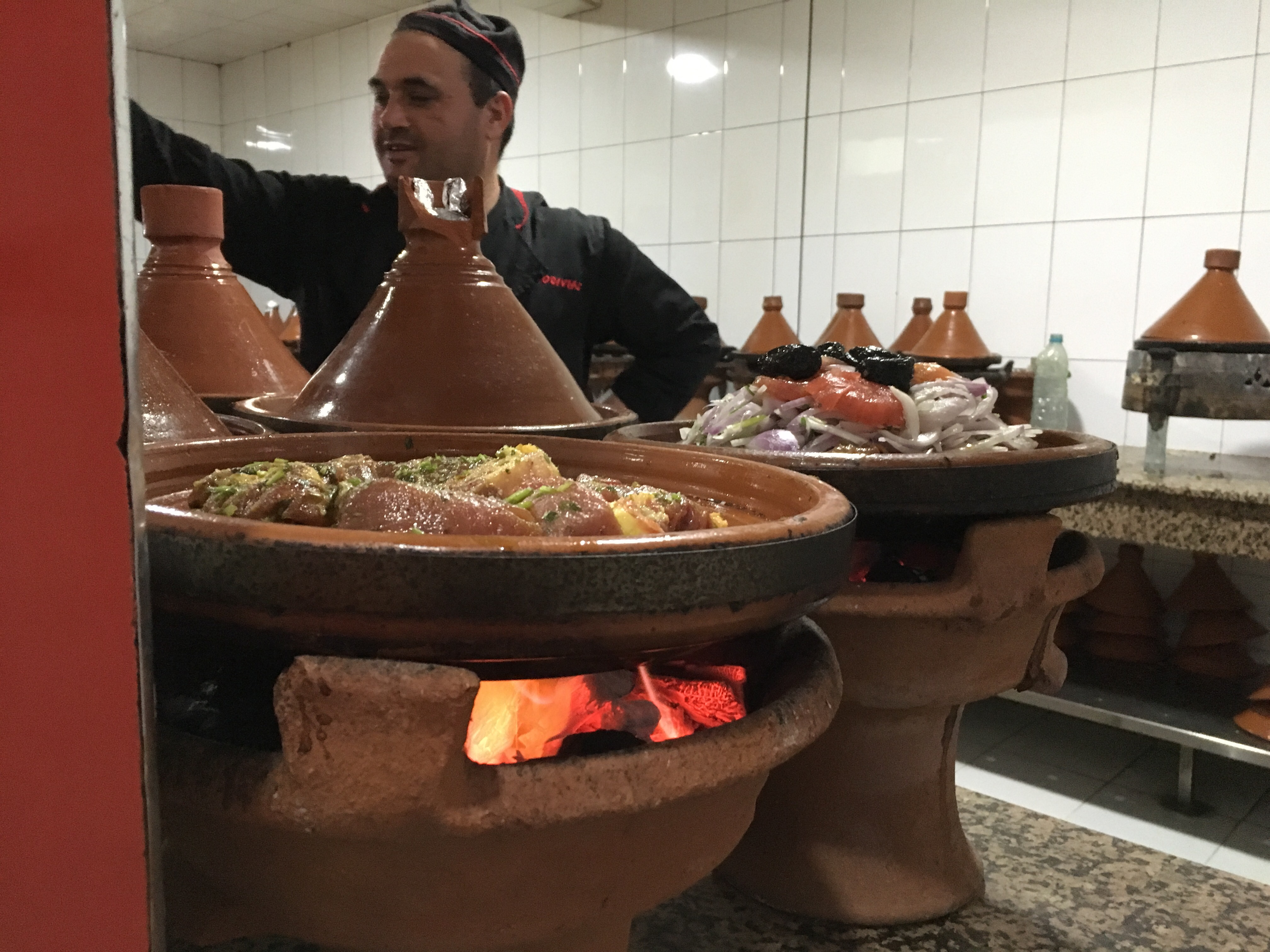
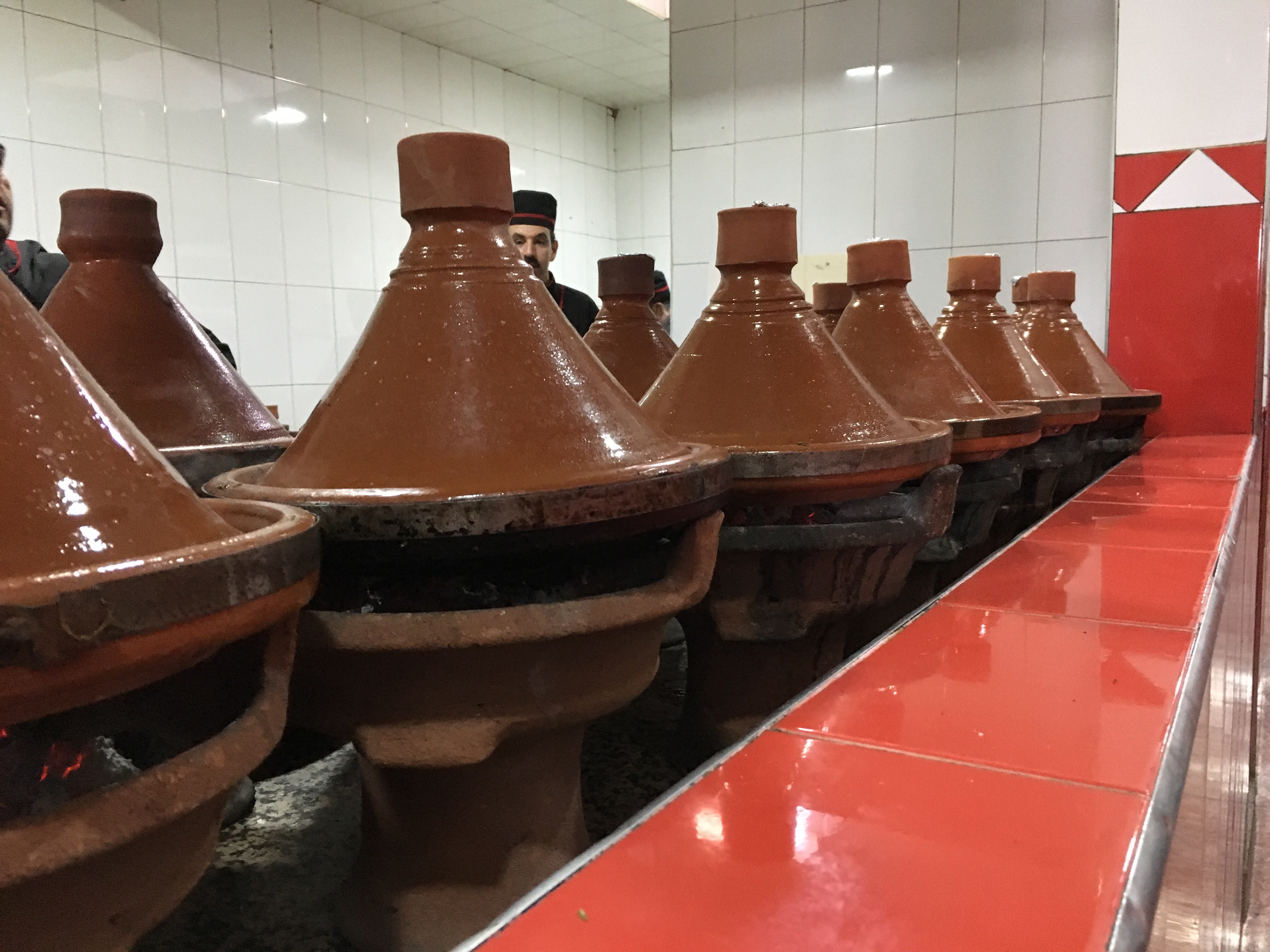
Moroccans love sweets and cakes (cookies). A fabulously talented student drew this chocolate bar! (Drawn by Abd elhakim Arkha)

This is our homemade tagine of lamb, potatoes, carrots, and onions. It was so tasty, even though we ate this dinner at midnight!
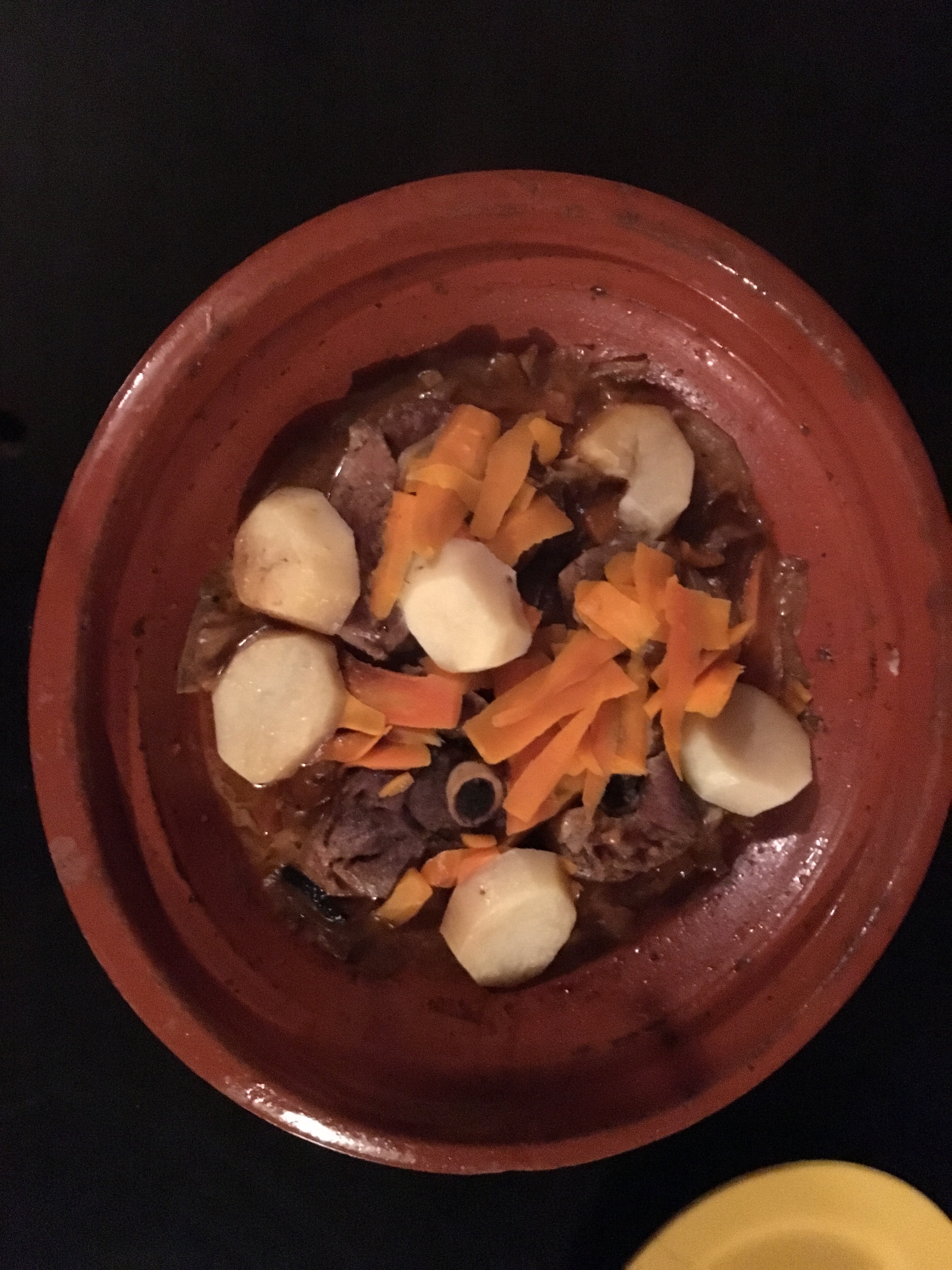
Buttermilk (eaten with a spoon) is a Friday treat. I’m told if milk sits out for two days it becomes ready to have, and if it’s done in the fridge it takes four days. It’s somewhat similar tasting to what we have for yogurt in America but is much thinner.
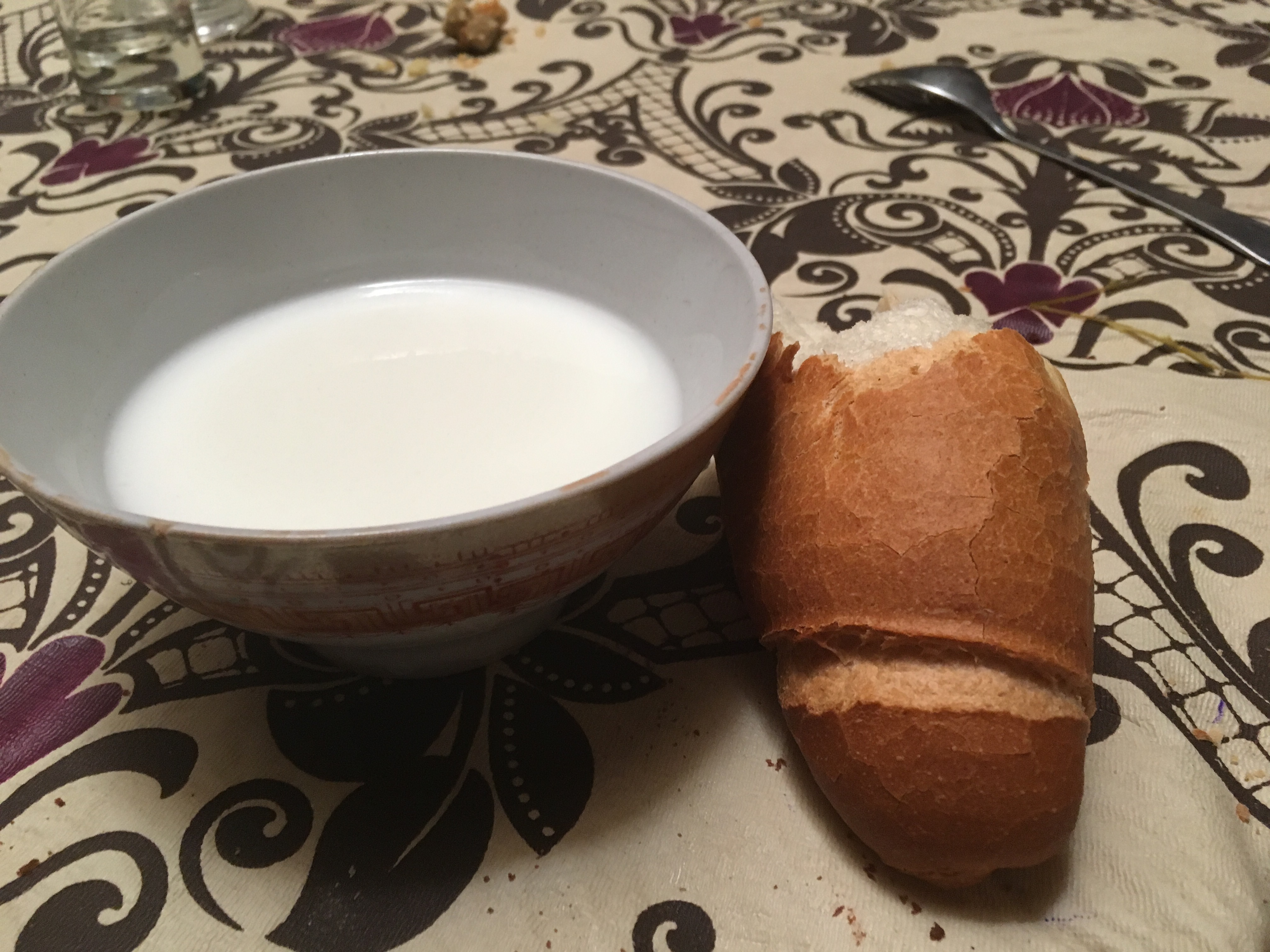
Enjoying a Friday meal of couscous and tagine with our host teacher’s family. Meals are meant to be eaten together over conversation, and this was the best!
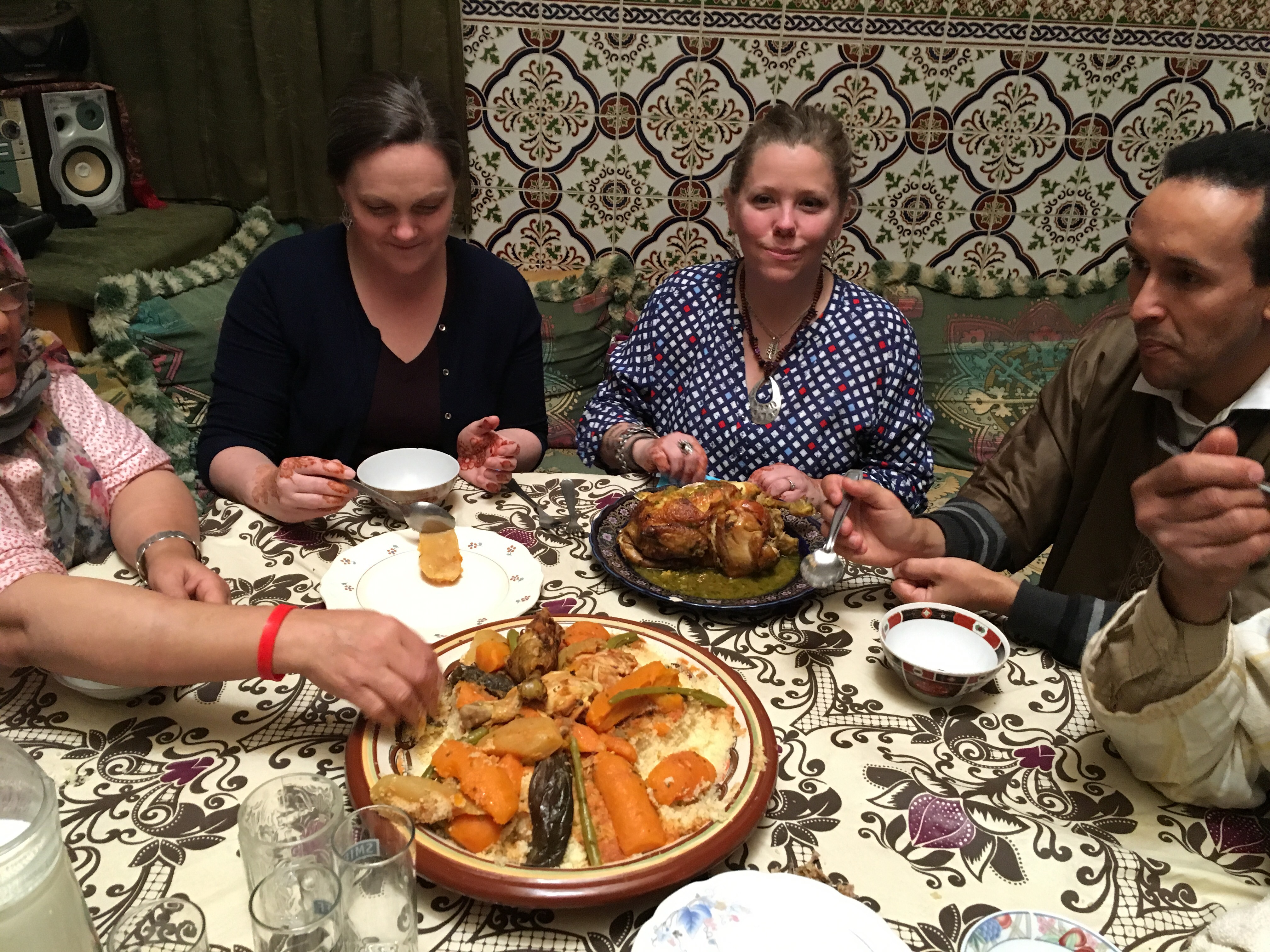
But FIRST, we have desert!
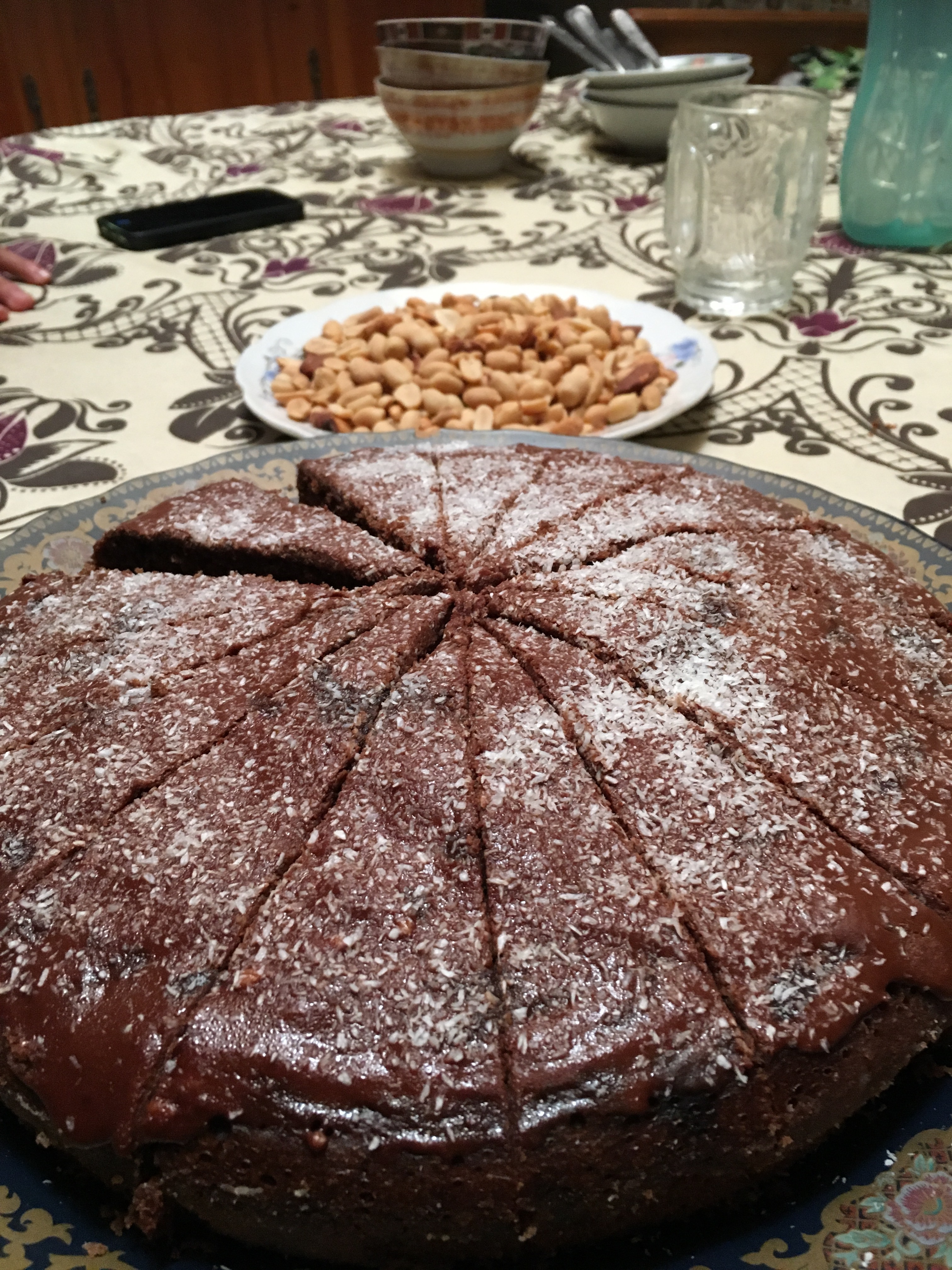
And mint tea

I wish in America that we linked food more to our experiences with each other. I have learned that food needs to be enjoyed, without being rush and distracted.
More food highlights:
I got to pour tea!
They made us a cake for a farewell party (before we headed back to Rabat today)
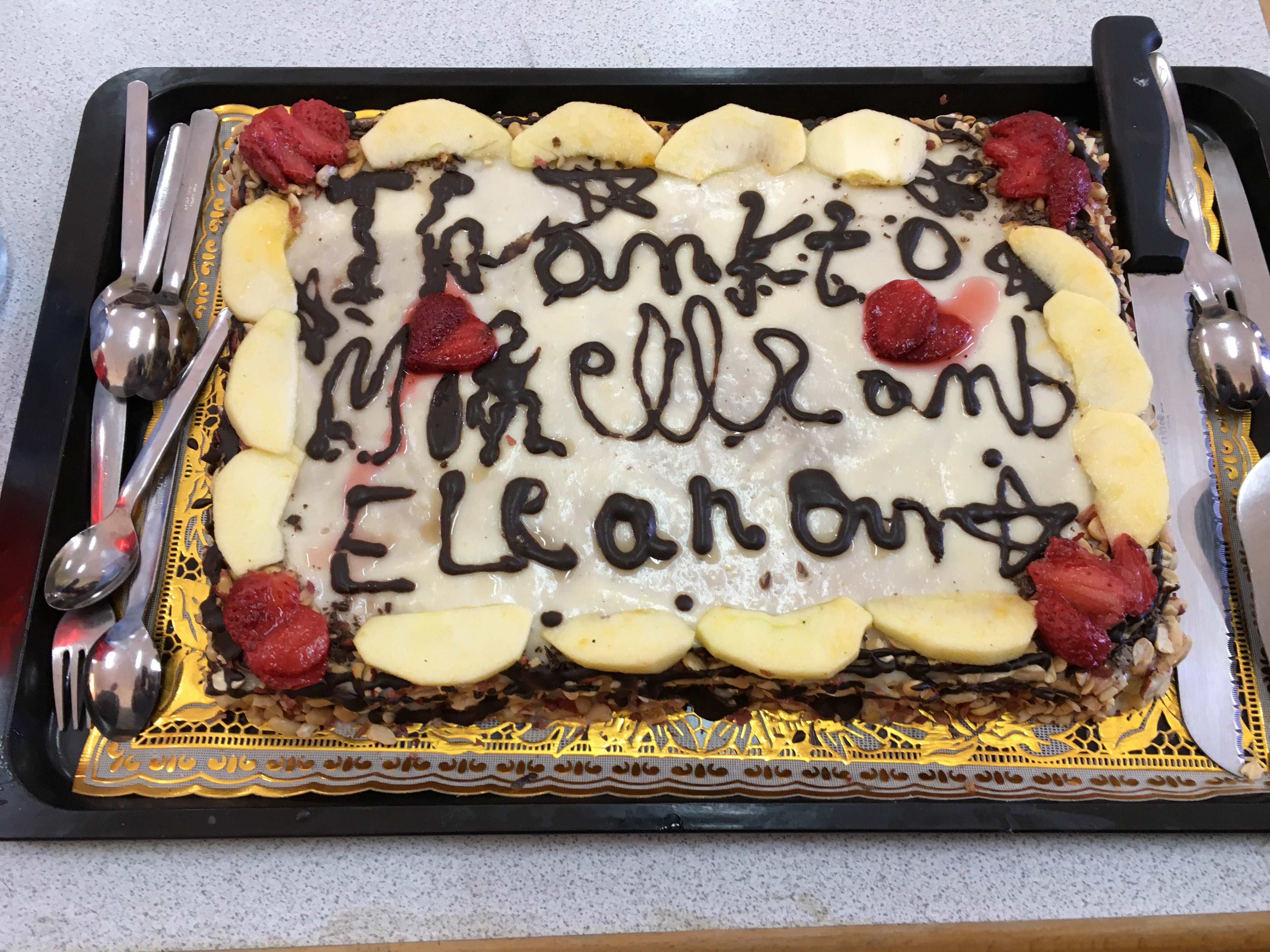
This salad (at a restaurant) was a divine lunch made with tuna (it tastes amazing here) and has cooked potatoes on it. Lots of fresh vegetables are available here in Morocco.
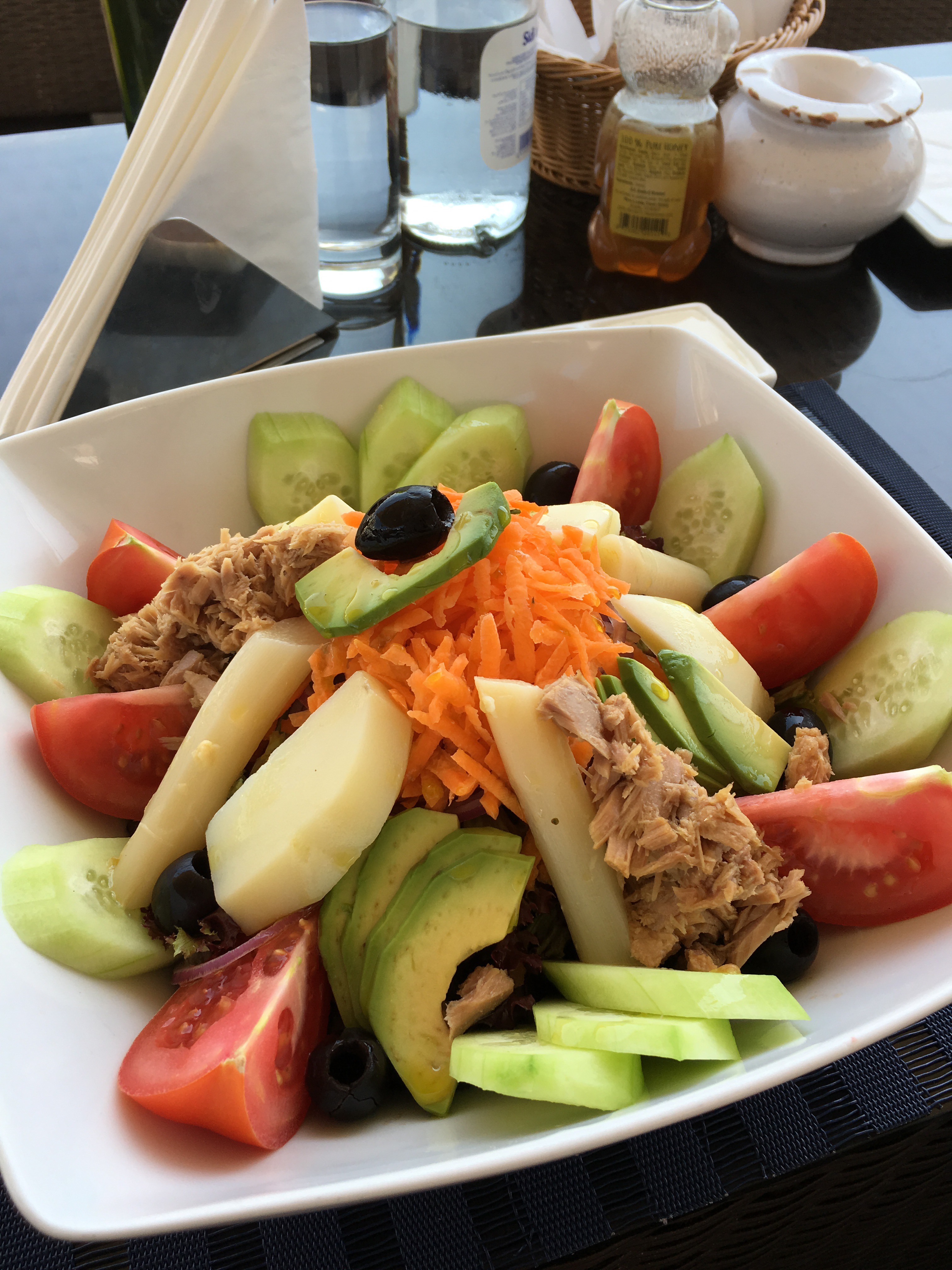
Peanut butter is made in this device here and tastes really yummy.
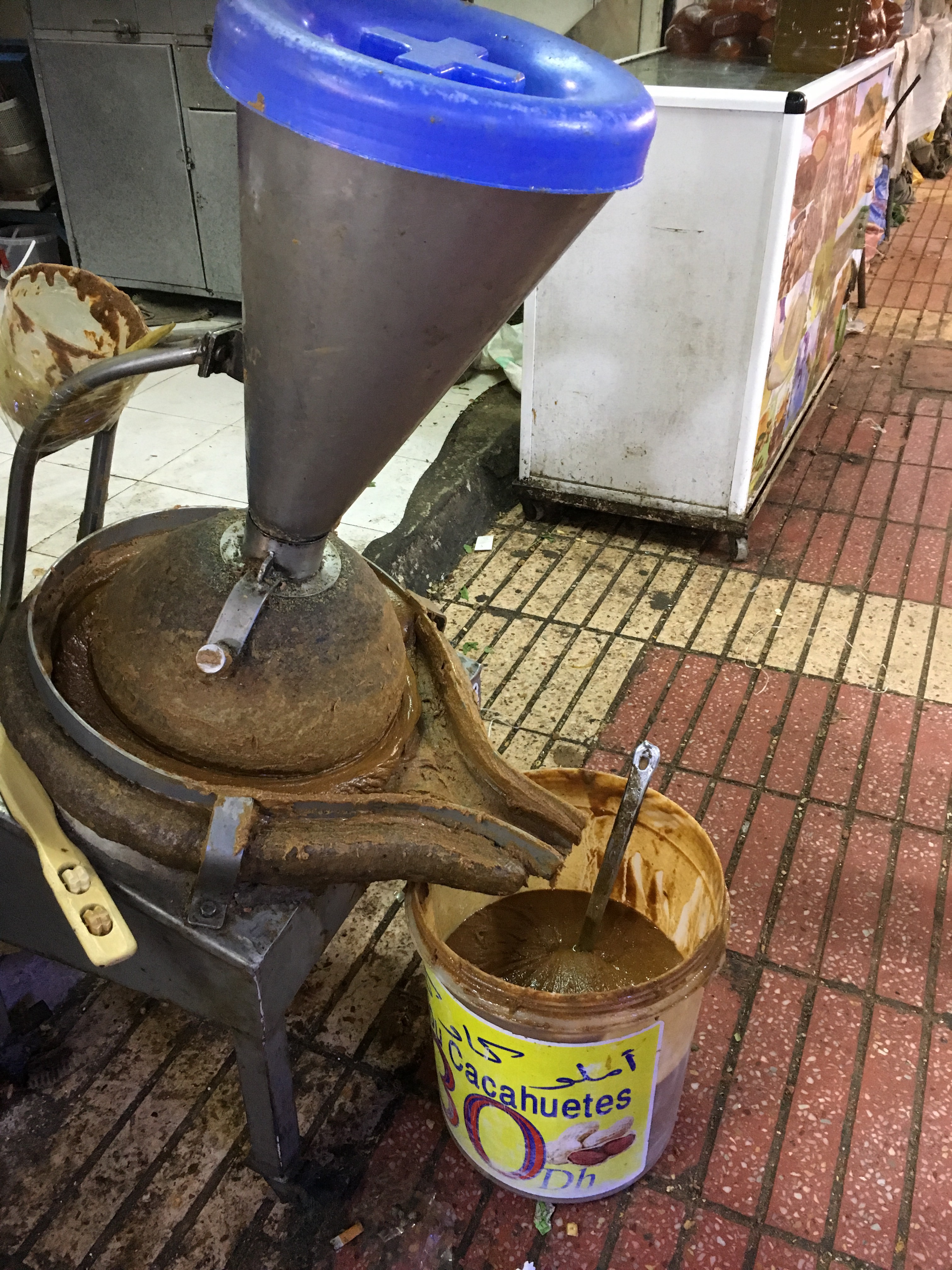
There’s an area of the main souk in Agadir that is devoted to lots of different types of candies and “cakes”
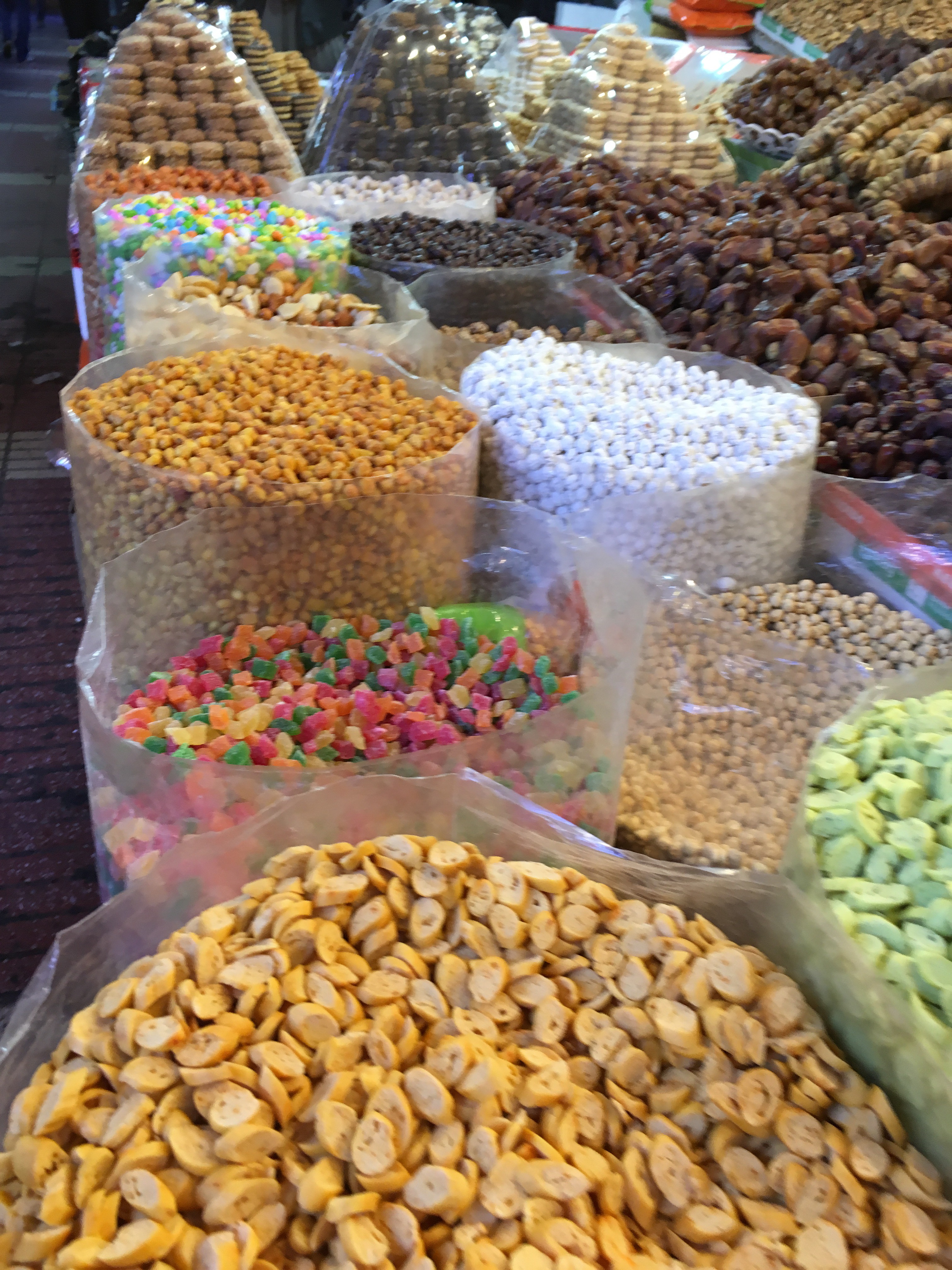
And more!
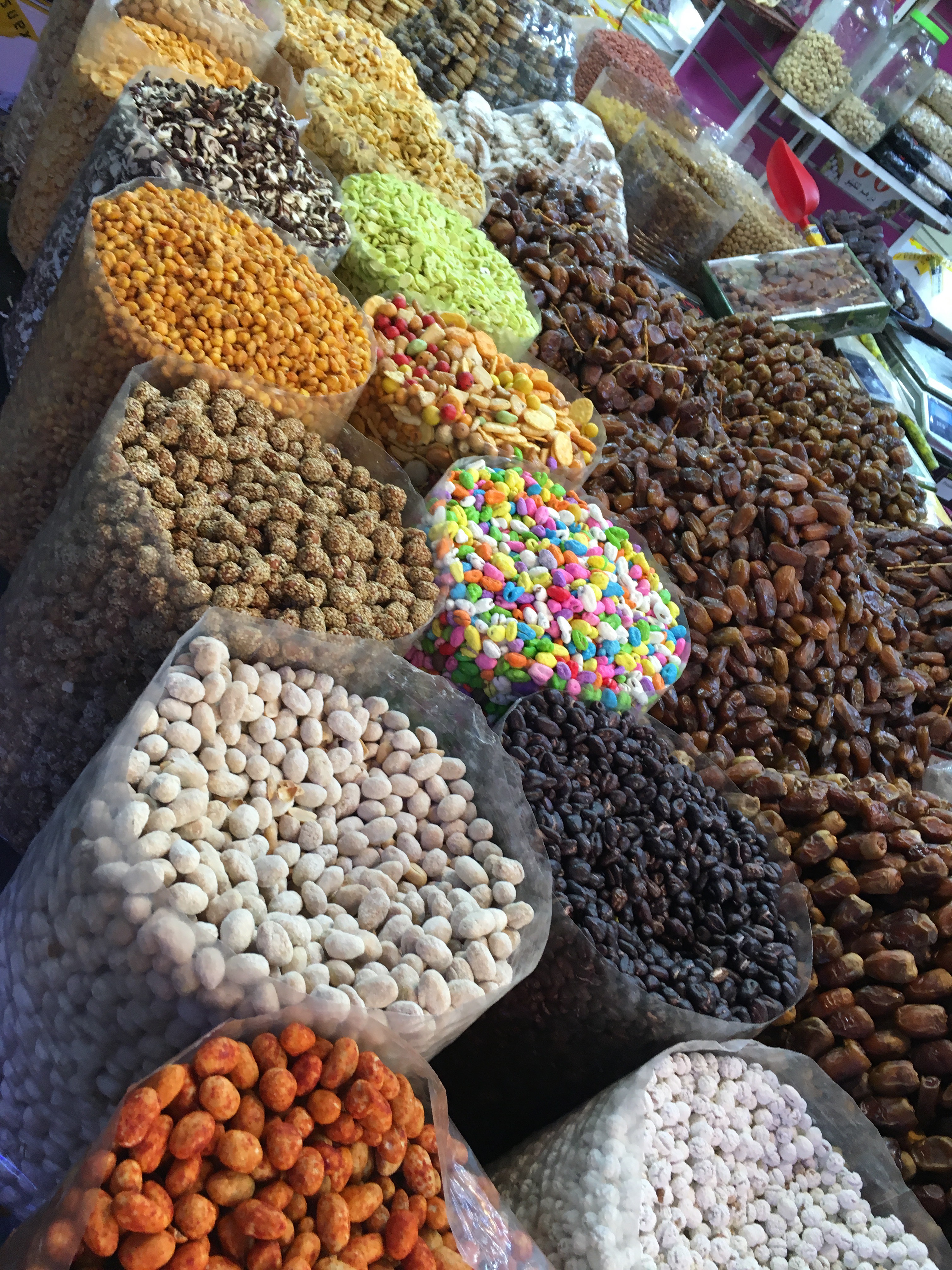
They are so neatly presented!
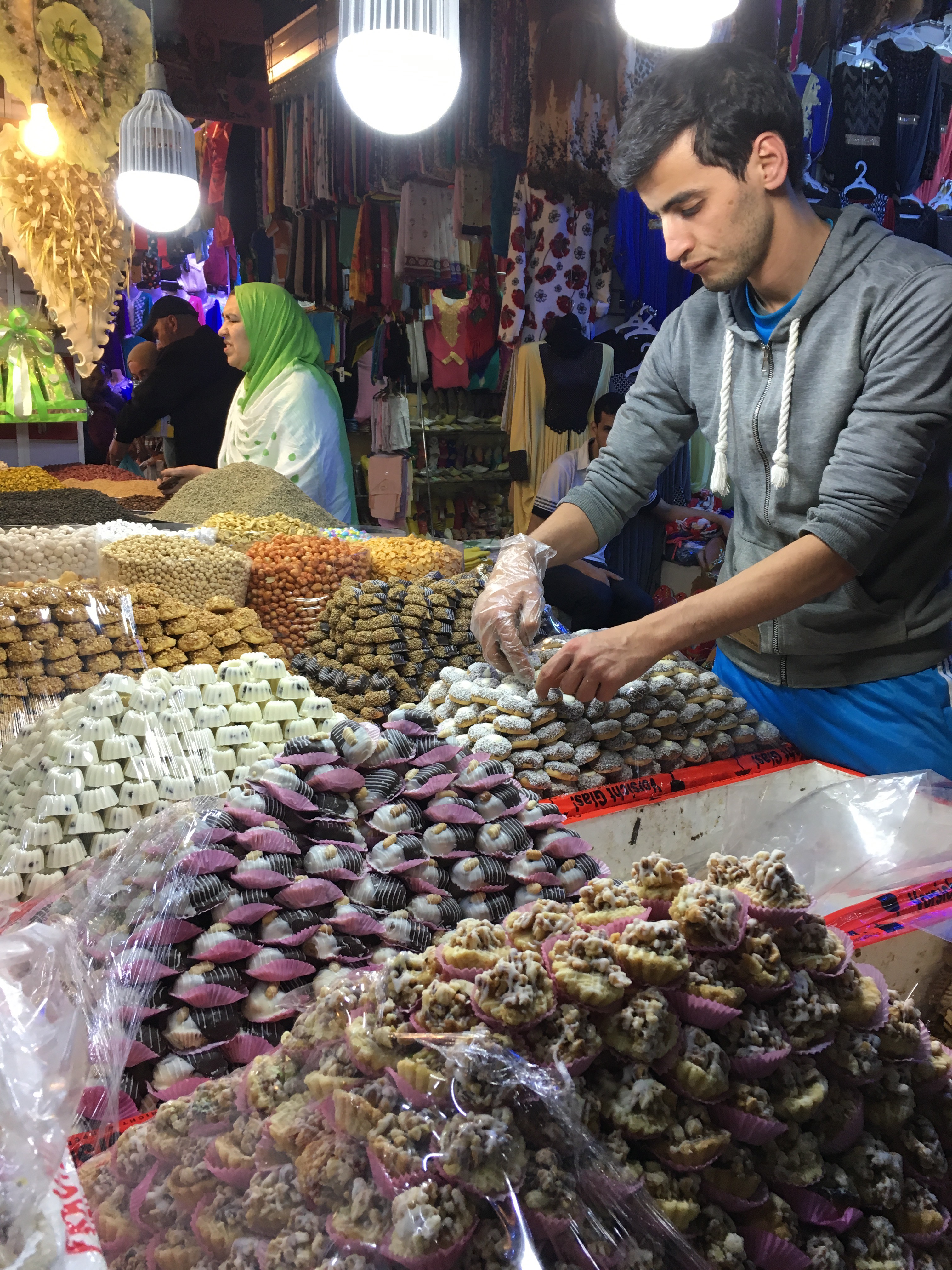
Less fun for students, but more fun for adults is the array of spices available!

My favorite experience with food so far was purchasing fruits and vegetables at th souk, which reminded me some of South Anchorage summer farmers market.
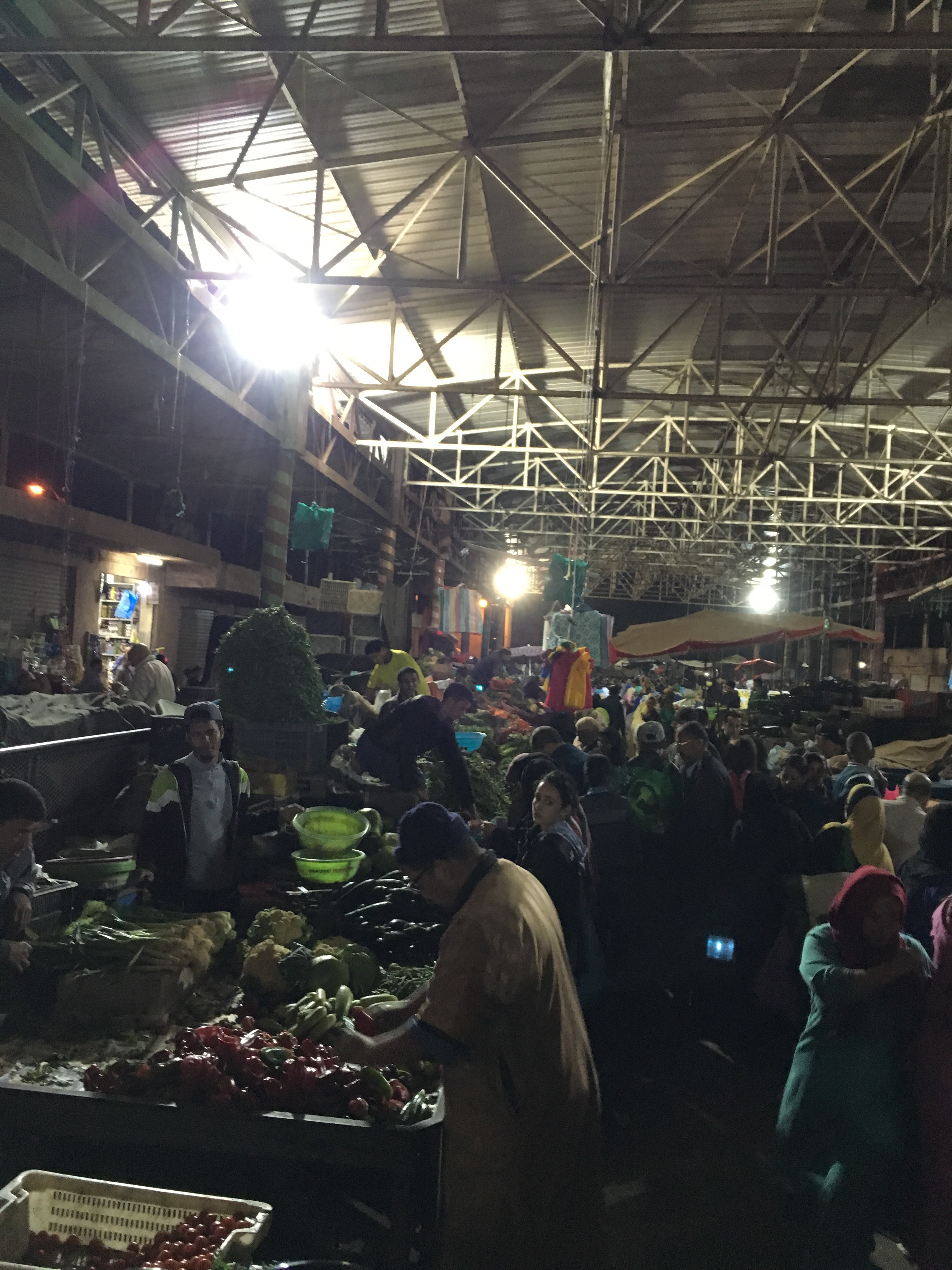
Plenty of oranges!! Fruits and vegetables are chosen and placed into these bowls and then given back to the seller to weigh.
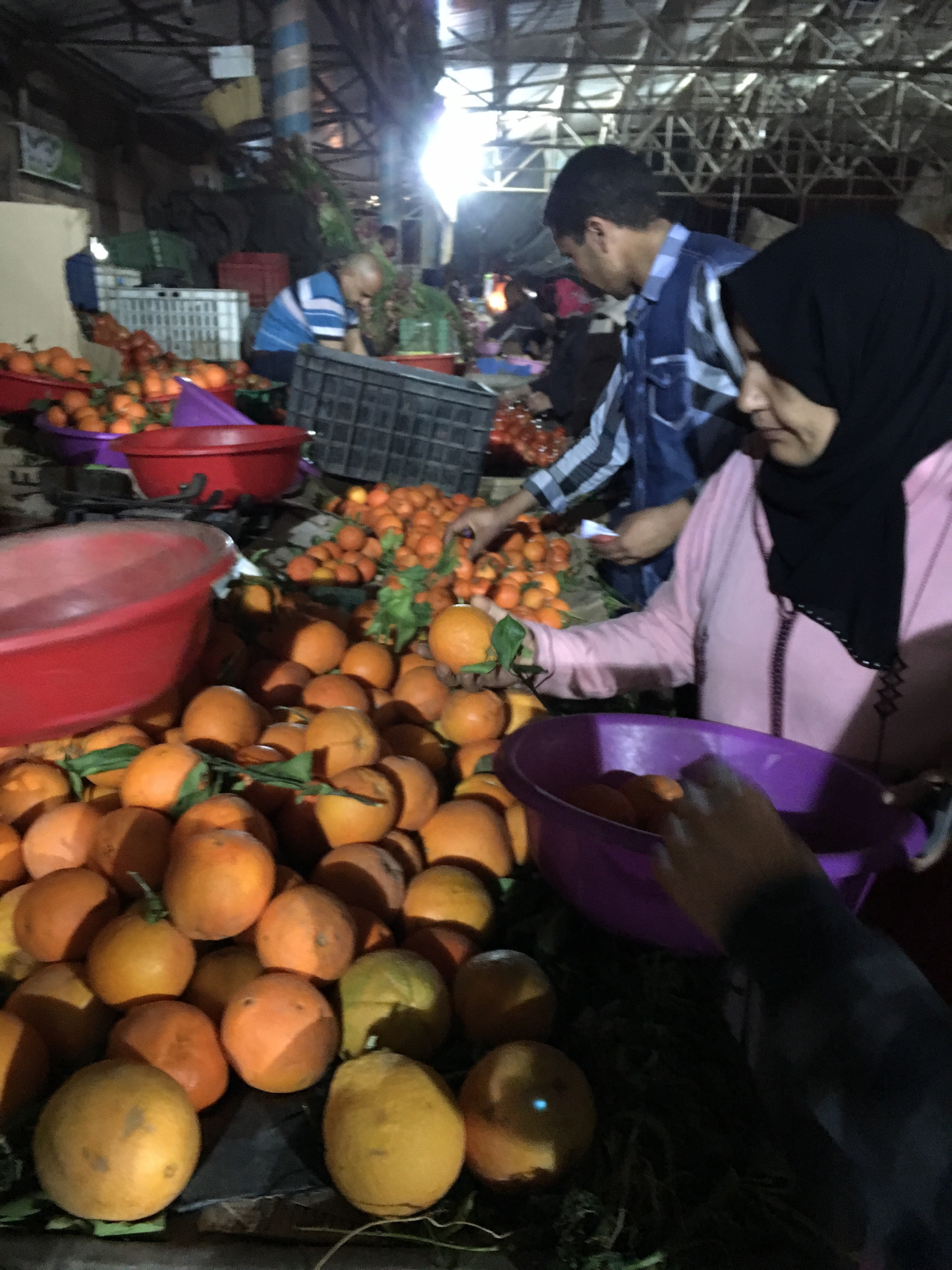
Youssef, my host teacher choosing oranges. There are a few types, one that actually looks like a lemon even when you cut into it, but is actually an orange!
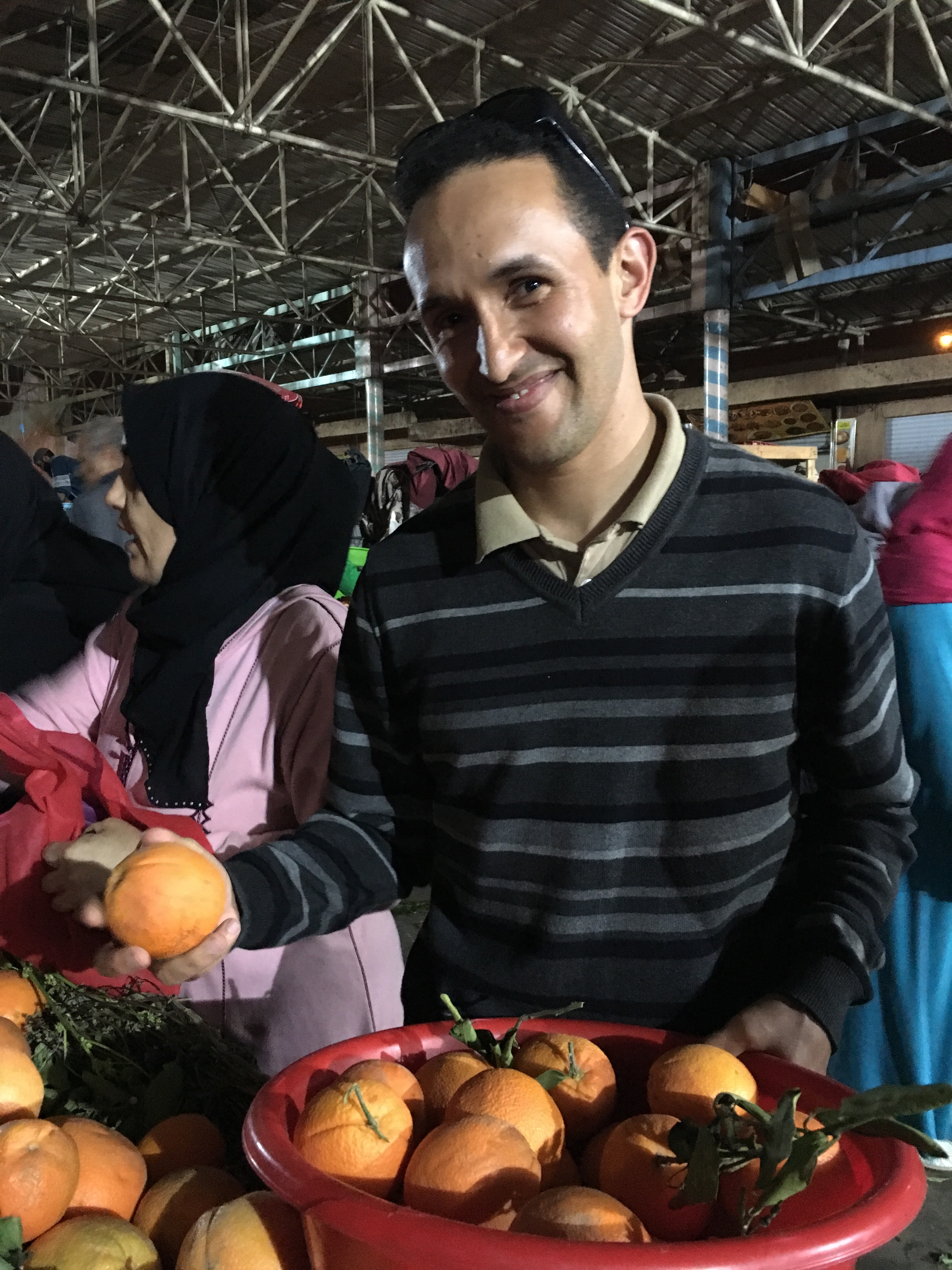
At the end of the day, the cost of the fruits and vegetables is even lower, but the market gets very busy because that’s when a lot of people shop.
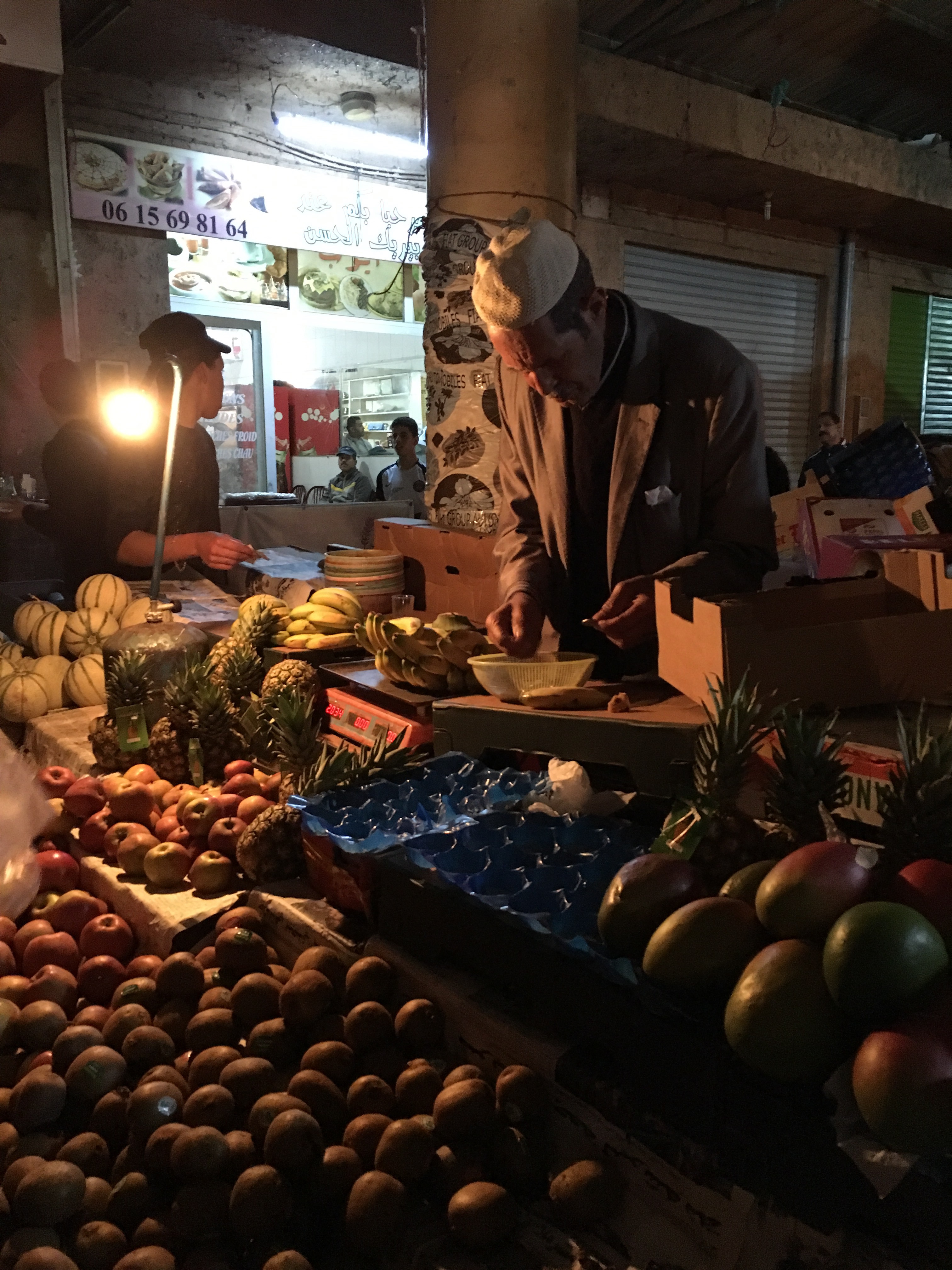
This is a traditional Moroccan meal with lentils, white beans, tagine, and grilled sardines. It is quite customary to eat with your dominant hand, and use three fingers. Moroccans are great about remembering to wash their hands before they eat. This food was so yummy, and having the little dishes to eat out of was quite fun.
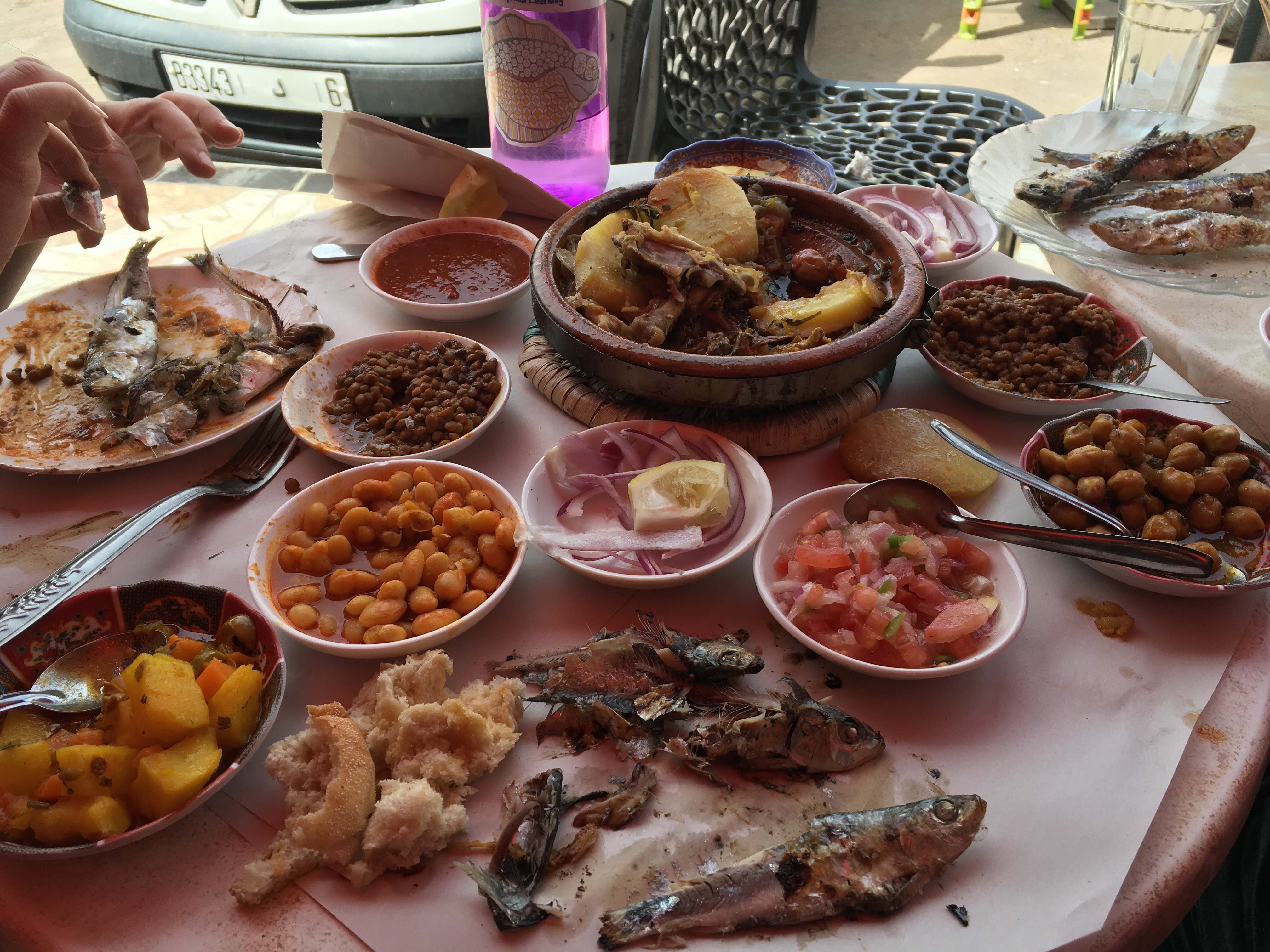
The fish market. My new favorite fish is sole. Calamari (squid) is served at a lot of places.
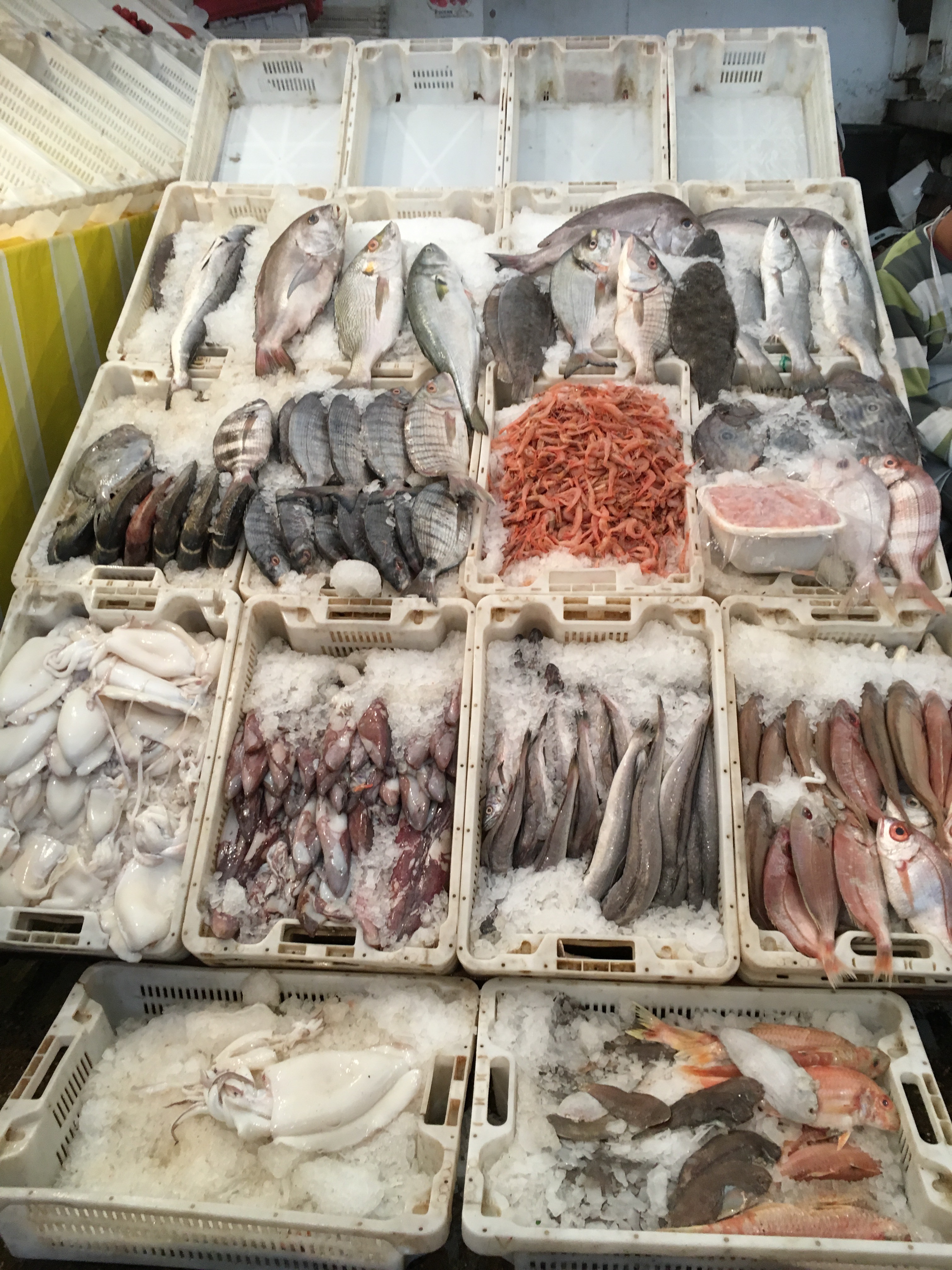
Here, you choose your chicken that you want to have for dinner, which is quite different than it is for me at home. I had a bit of a hard time not getting a little emotional.

More seasoning for flavorful food.
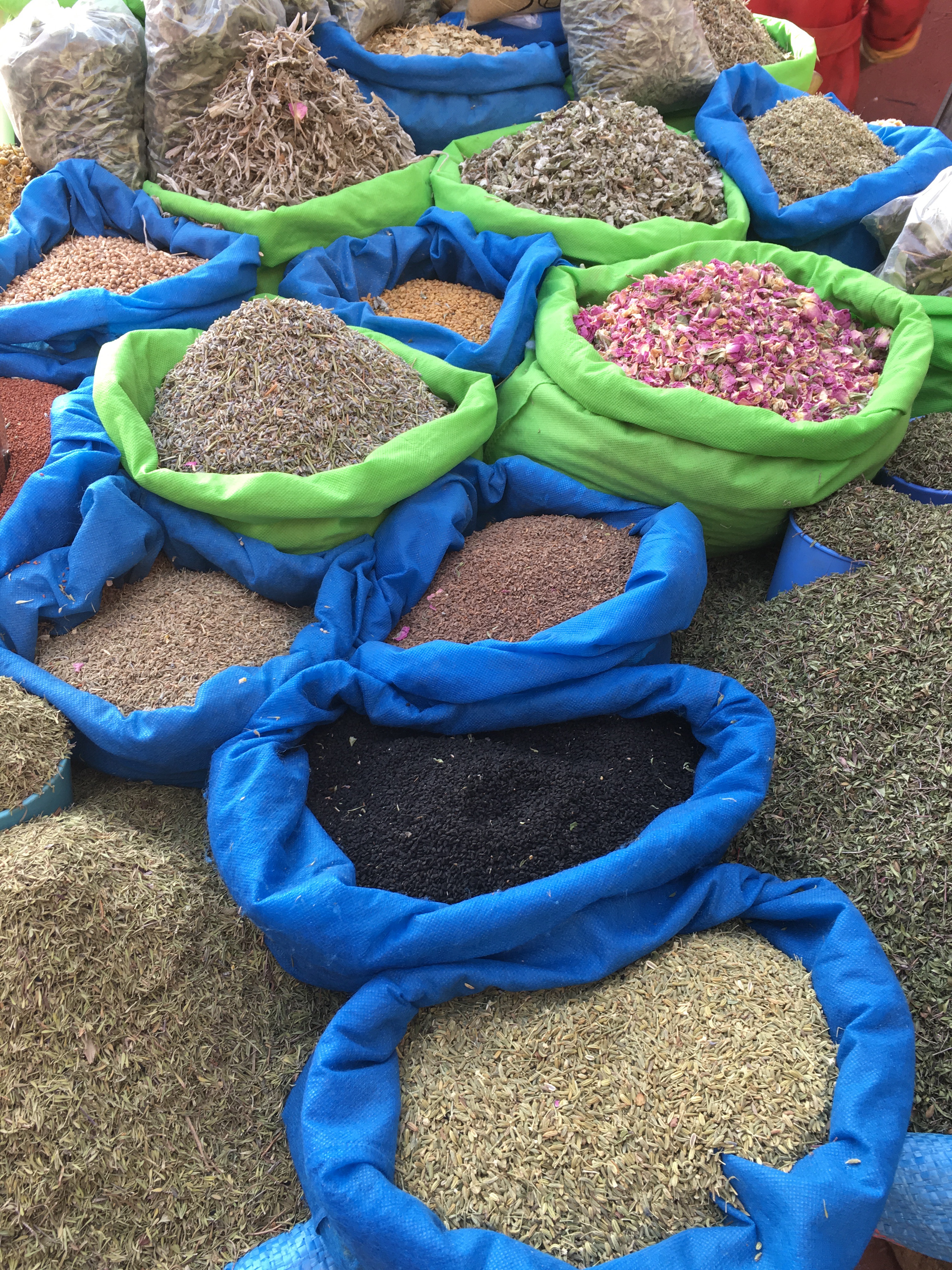
Food in many parts of the world is quite symbolic for elements of life. In Morocco the food is well taken care of, slow cooked, and always enjoyed in the company of others. This follows the nature of the Moroccan people, in the care put towards everything they do, how well they take care of each other, and how important relationships are between people.
Ahhhhhhhh. YUM
by Michelle Carton | Mar 23, 2017 | Morocco
Neighborhoods blend homes and businesses to make it possible to be completely local and support local.
Concrete and metal, common in Morocco, are materials that show age quite quickly. One might mistake the image of a neighborhood to be dicrepid and run down, whereas truly it has rustic character and grit, capturing color and stories that make communities deeply rooted in connections.
It’s about seeing the beauty in the richness of culture and environment. In America, we work so hard to make life appear pristine, even if it’s not. In Morocco, it’s about taking that time to connect with each other. Judgement is not necessary.
The bike shop:
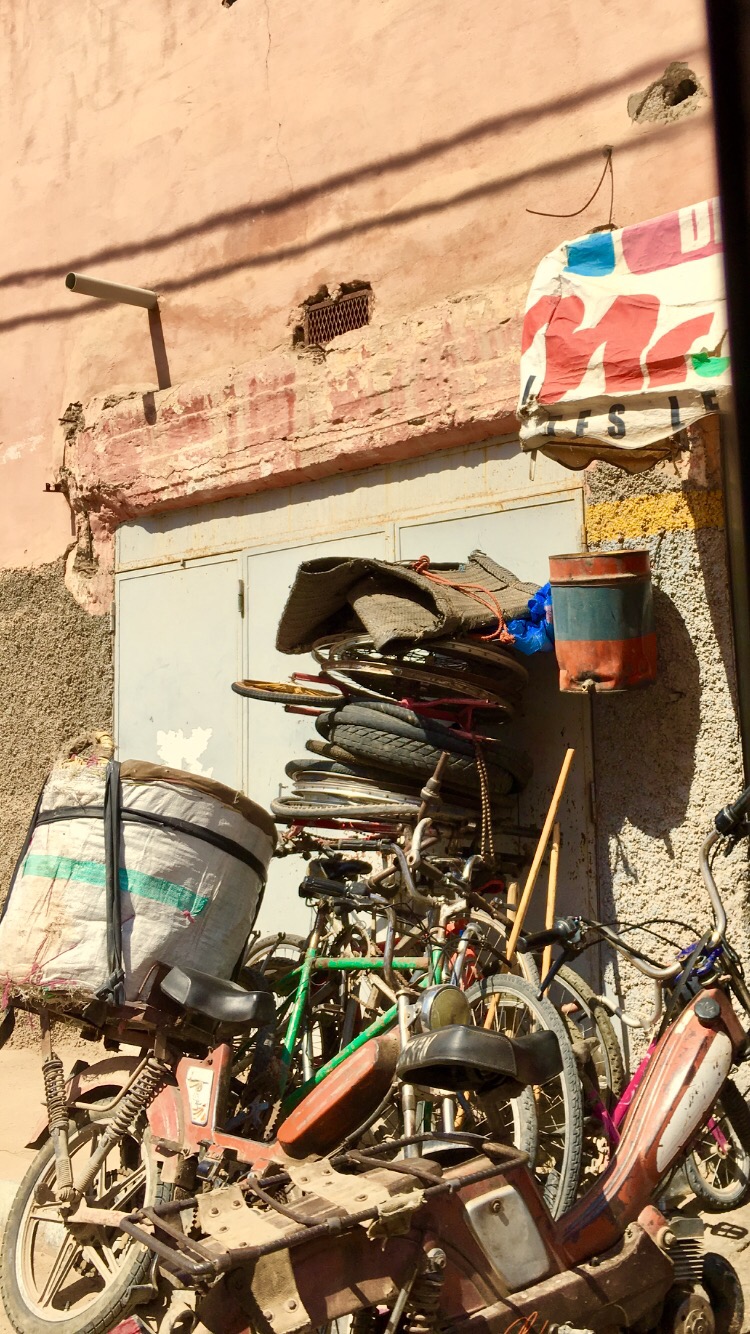
Images of homes:
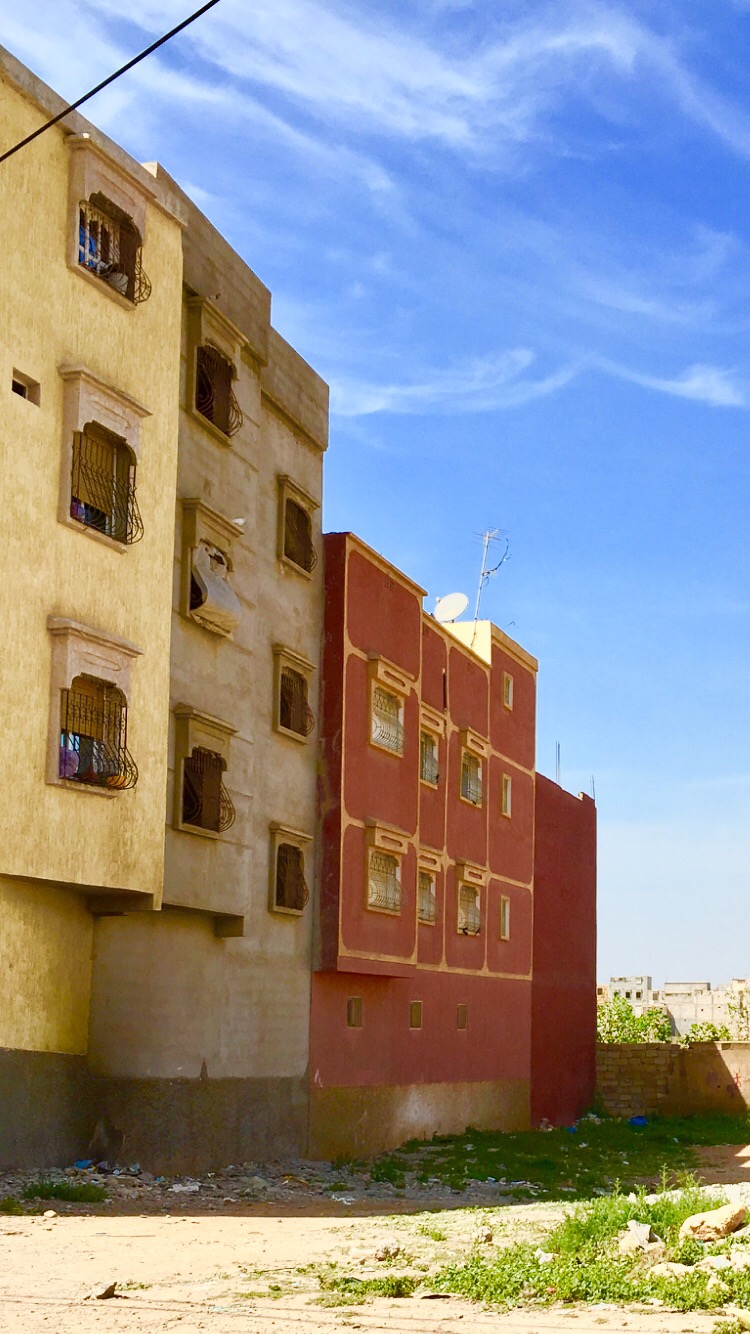
Bottoms of homes are often shops:
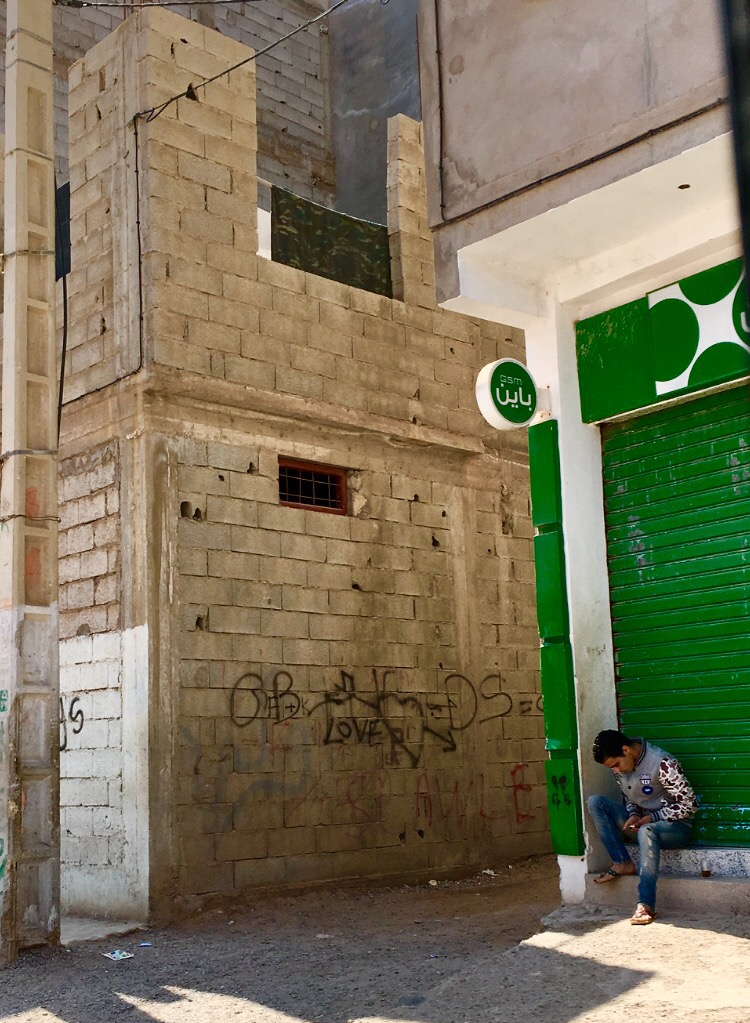
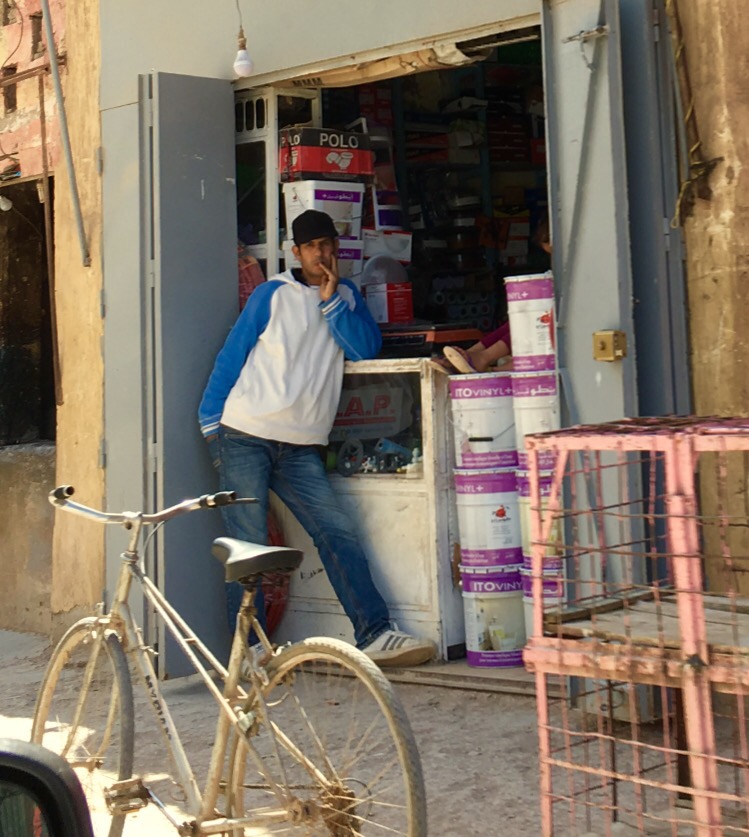






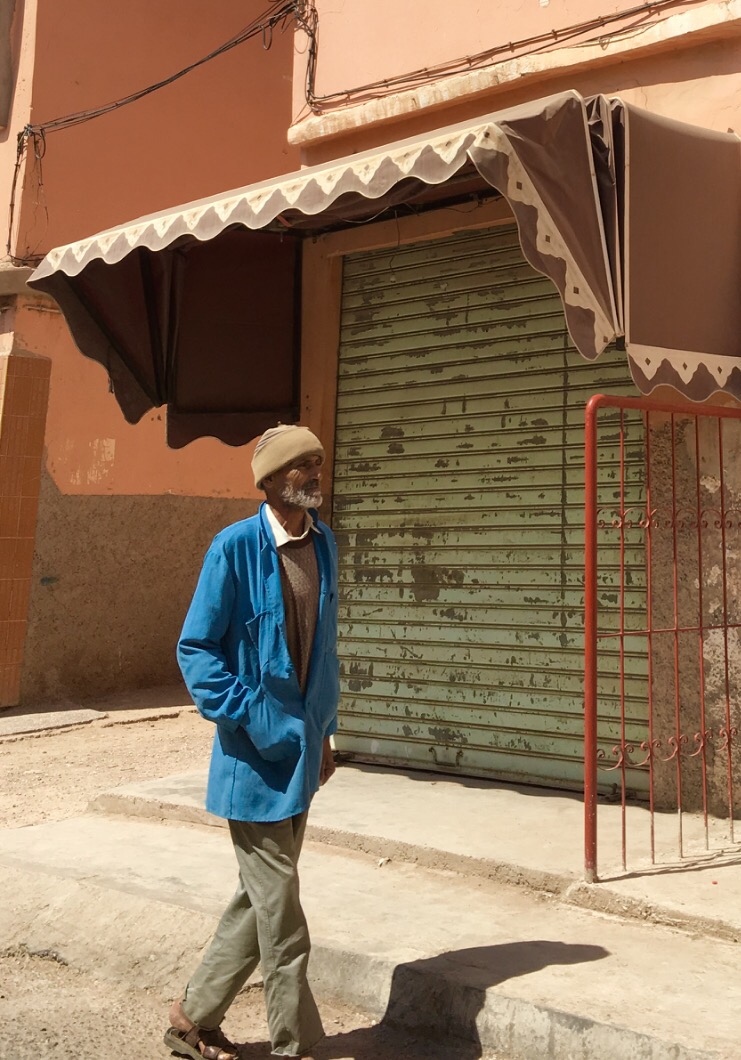
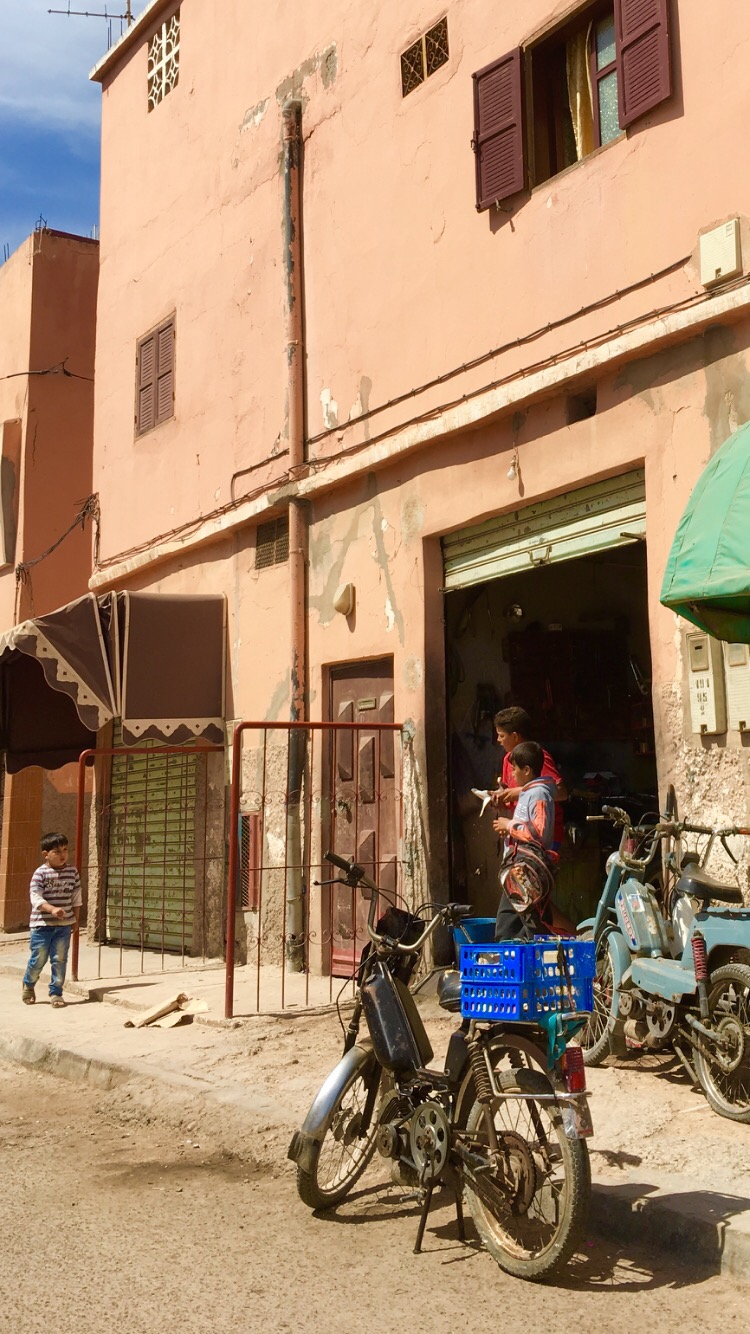
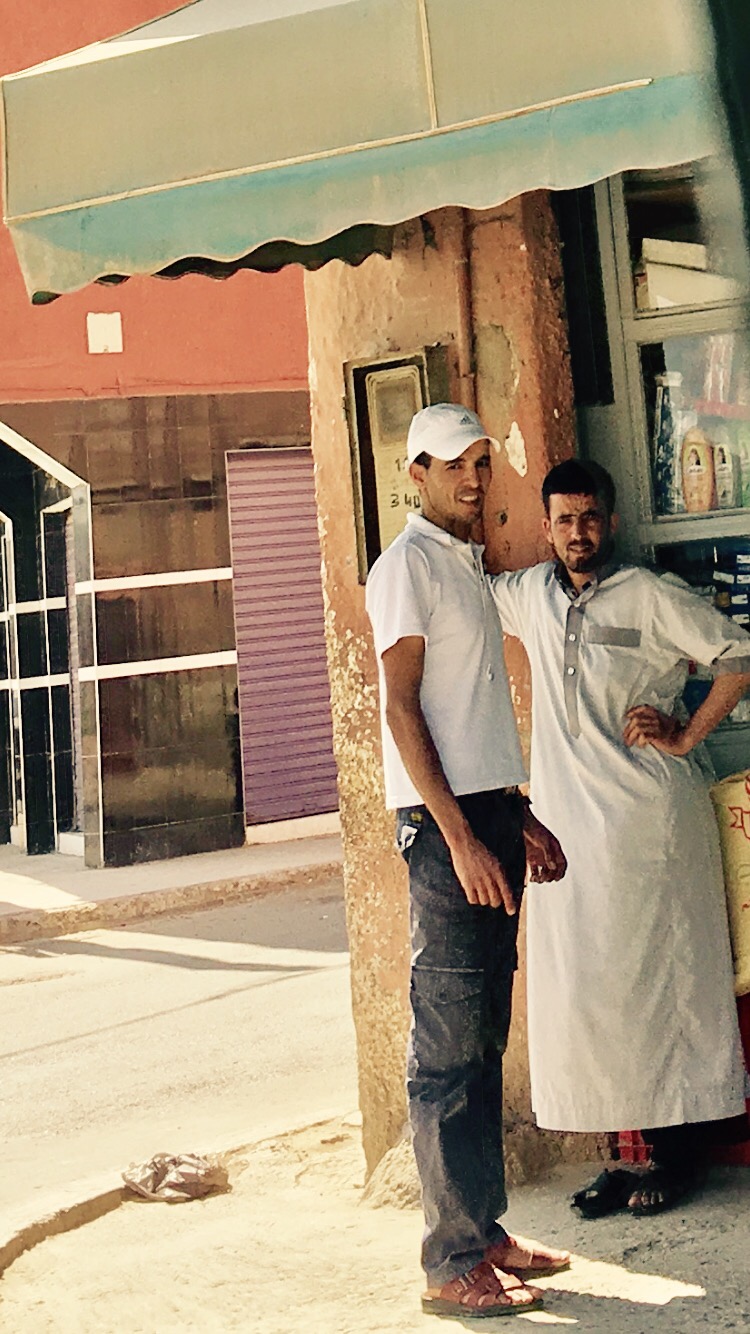
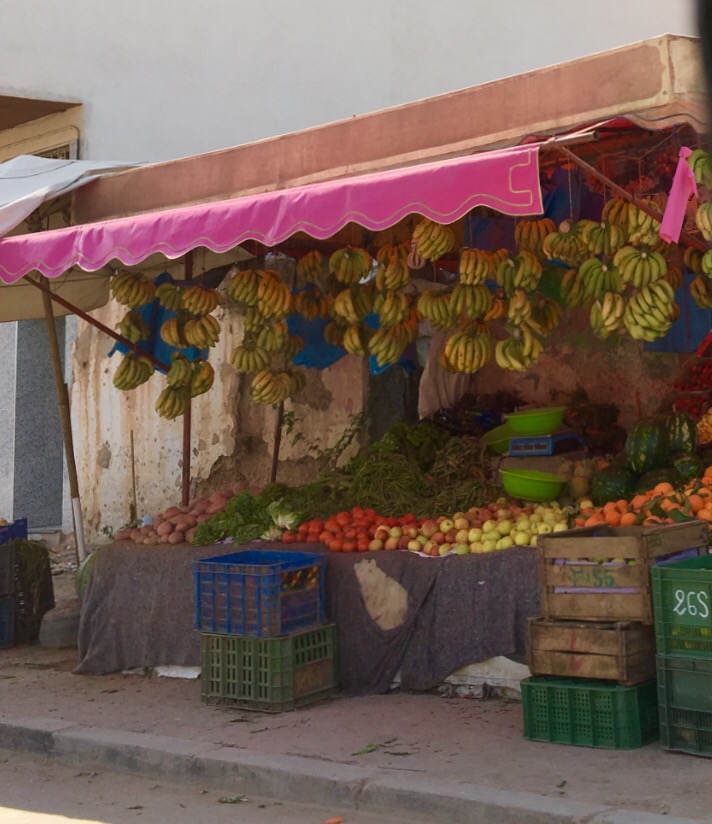
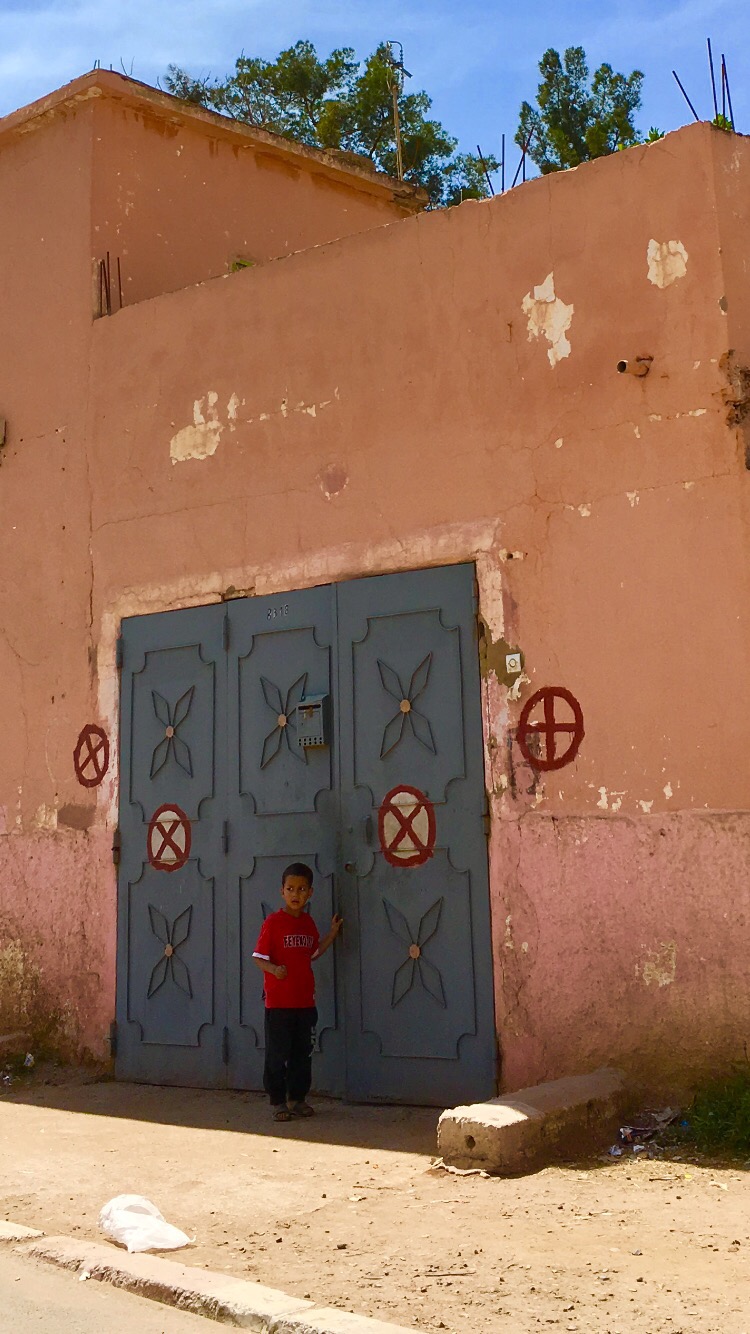
by Michelle Carton | Mar 23, 2017 | Morocco
What a great teaching day. We did a project together about Peace (for “Project Global Peace”) and what it means for Morrocan students.
They loved our iEarn Hands for Peace Banner and were eager to be in a picture with the banner!
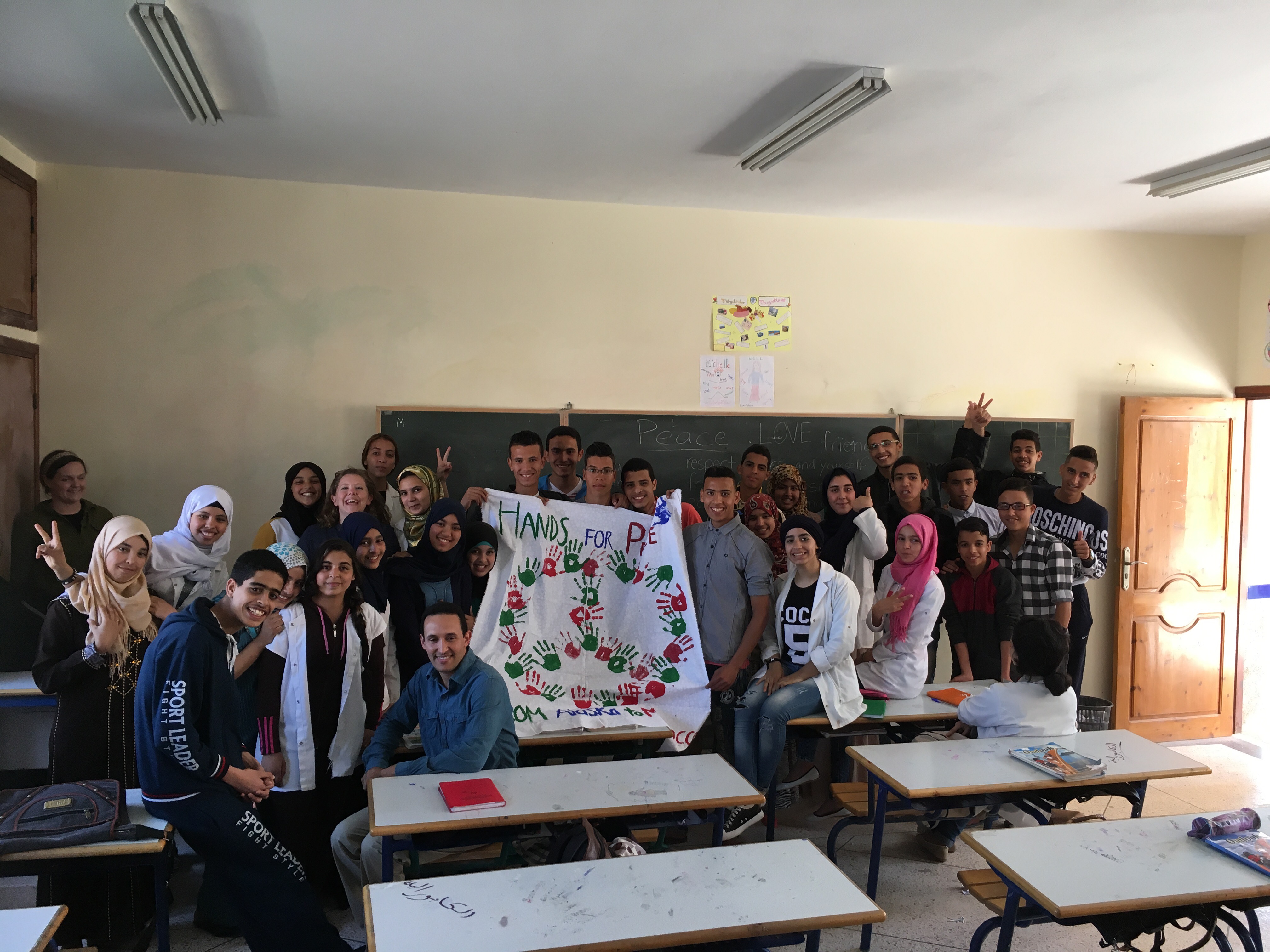
Students also make Peace posters for our Alaskan students. They were so happy to share PEACE with Alaska.

Students are hard at work drawing about Peace, and I can’t wait to show what they made.
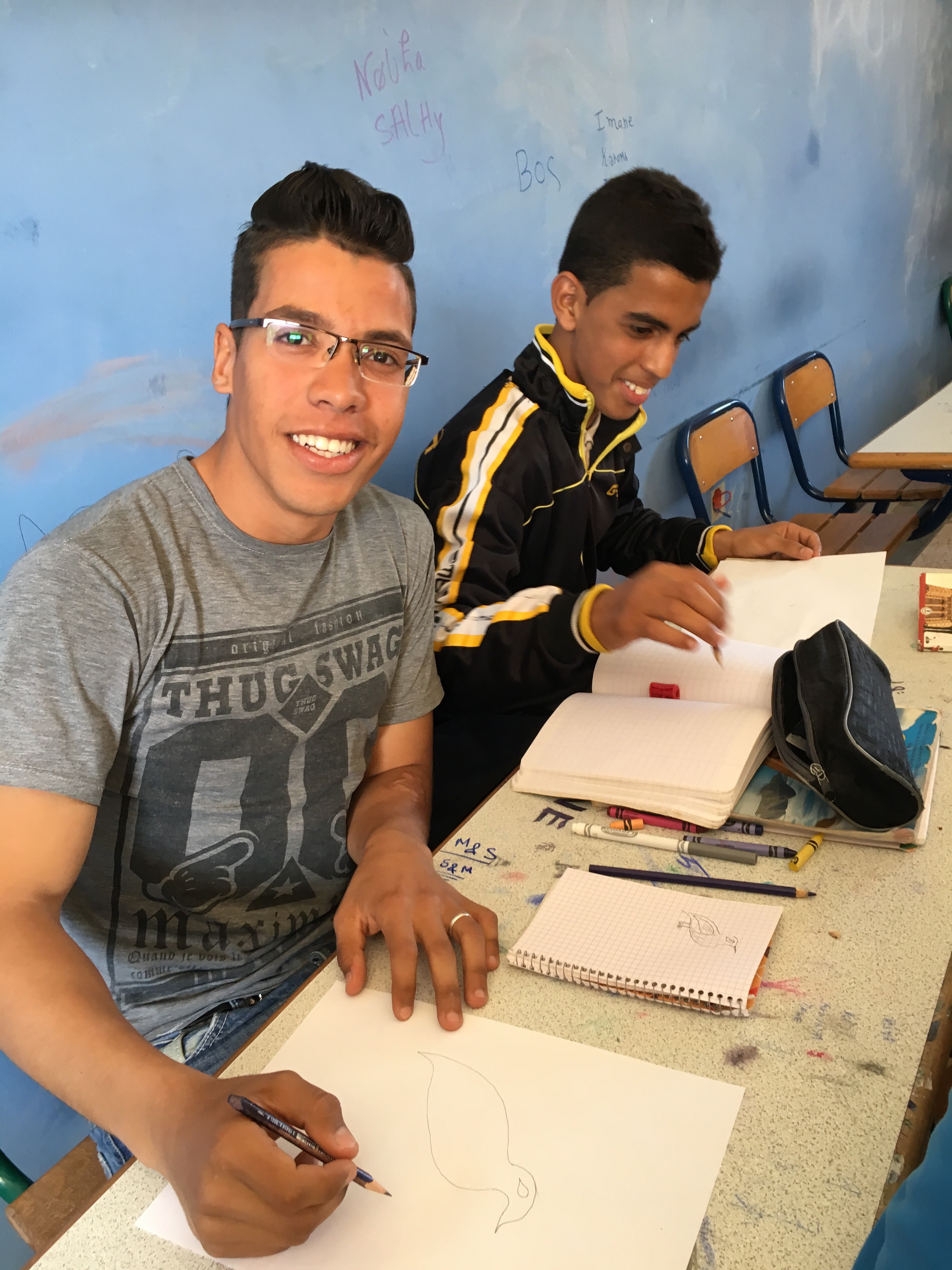
Lots of students were interested in the peace dove and what it means to them.
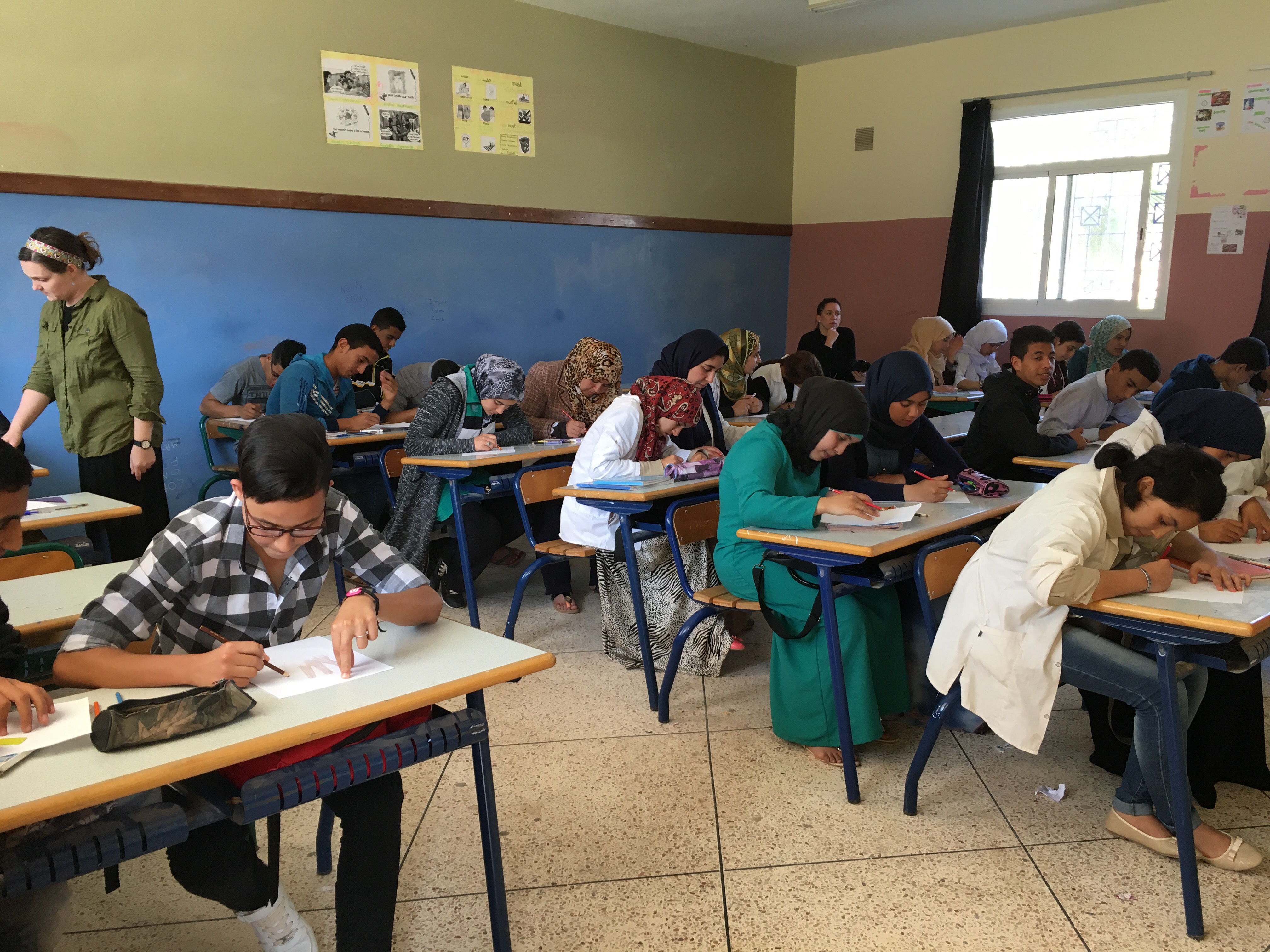
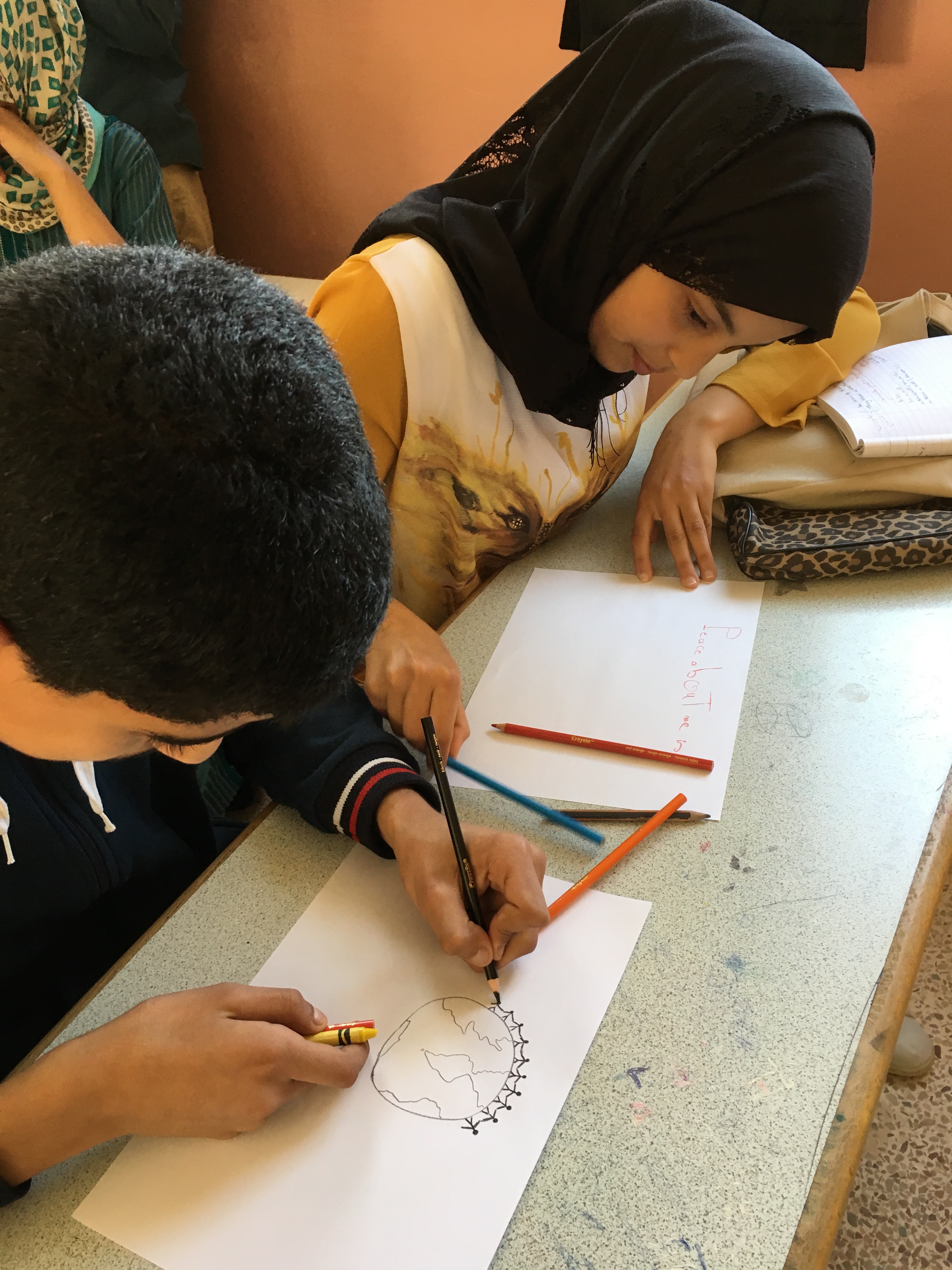
It was a great day of love, peace, connectedness, and new friendships. When I return to Alaska, we will connect over skype with classes that meet at 9:15 (Schewe’s, Johnson’s, and Helms’s). Morrocan students are excited to “meet” Alaskan students.
Some students asked what the outside of the school looked like. The schools are all enclosed in concrete around them so that cars don’t just drive through, and to keep kids safe.
This is the beautiful outside of their school! The murals are so pretty.

Here is what the outside of a preschool (ages 3-6) look like.
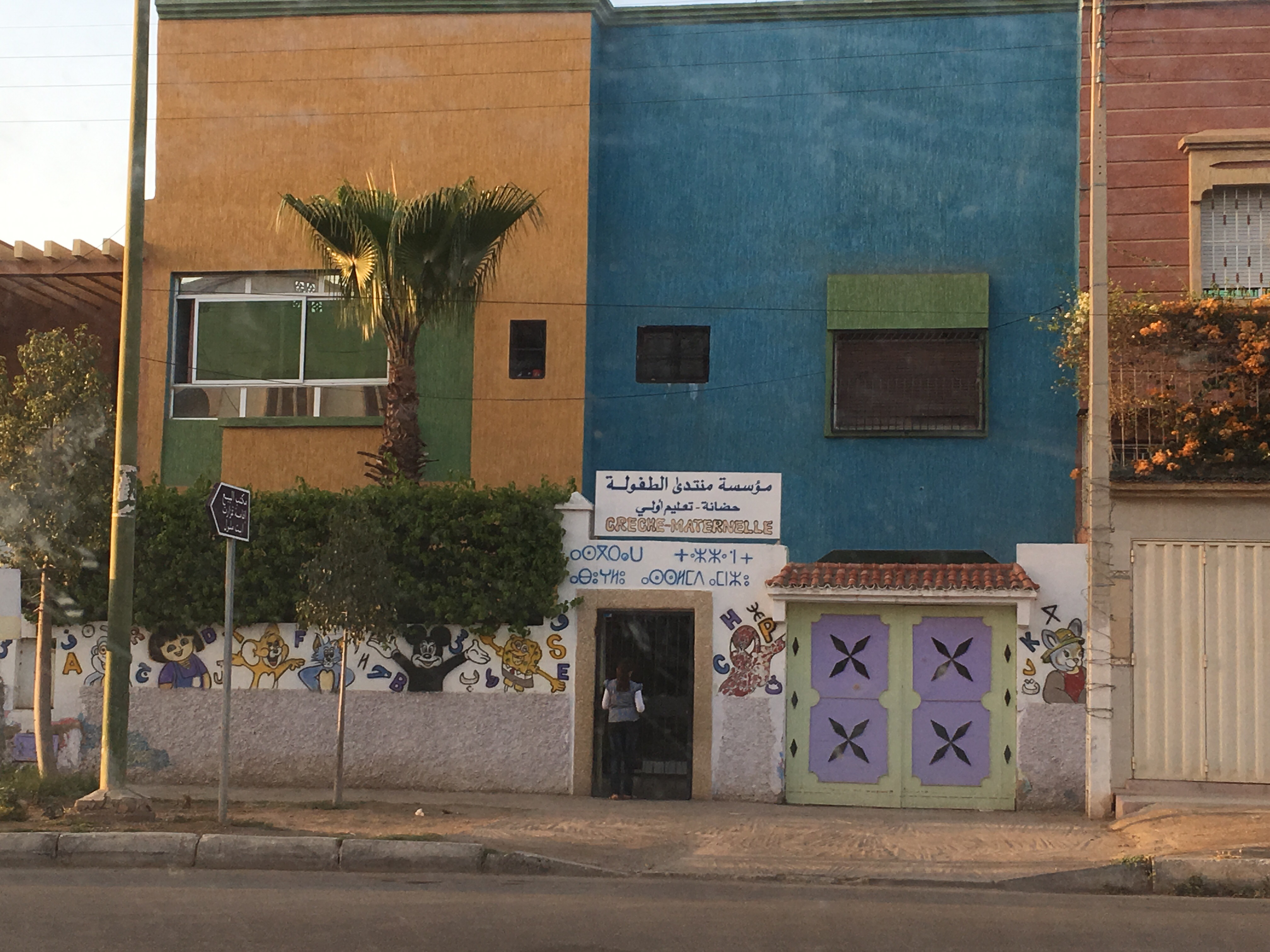
Regular school starts at 1st grade and is called “primary” school (grades 1-6). This is the outside of one, and we will visit one on Friday for more exploration.
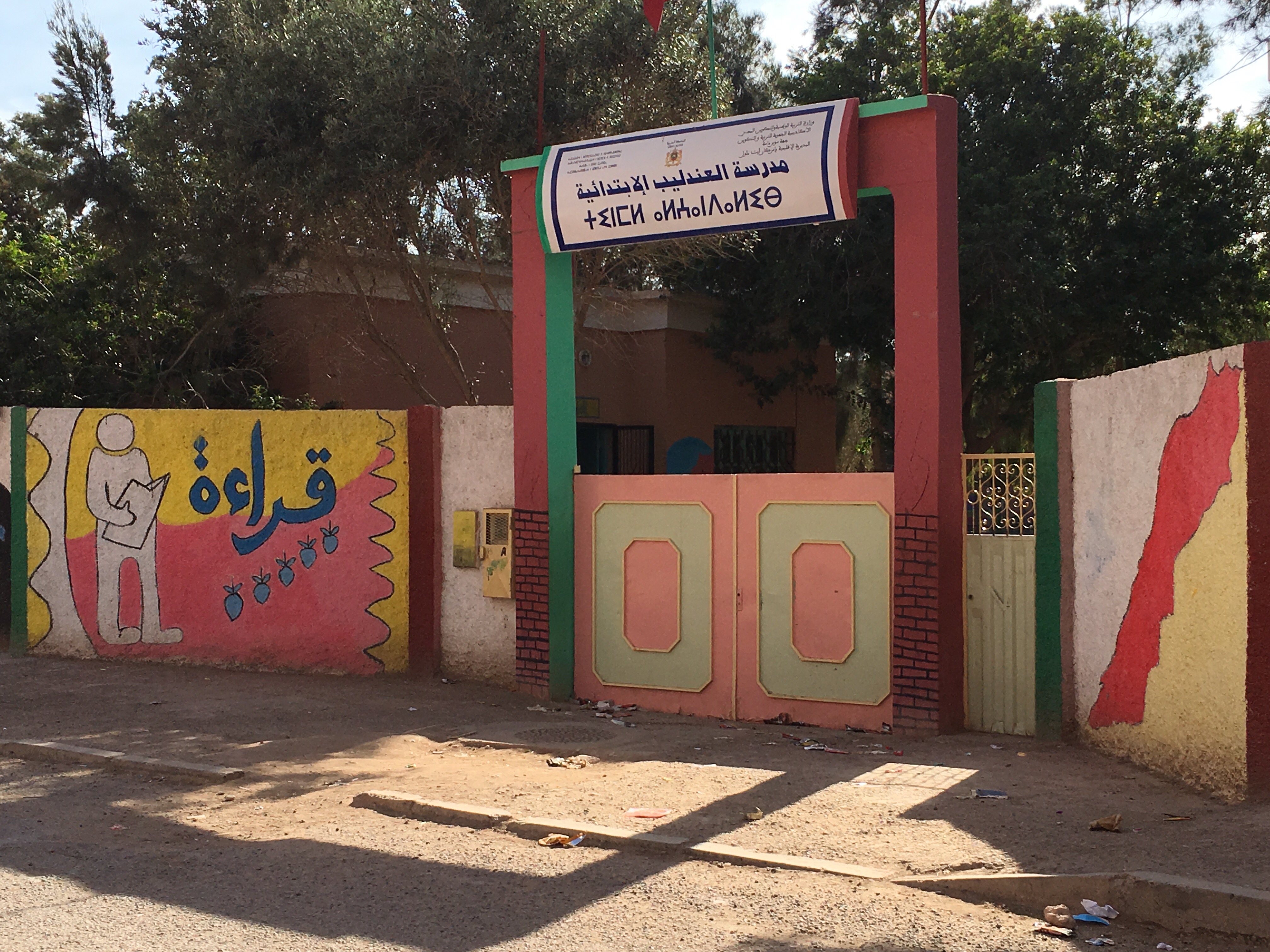
I have become really interested in the variety of teacher’s mailboxes at the different schools. See this one!
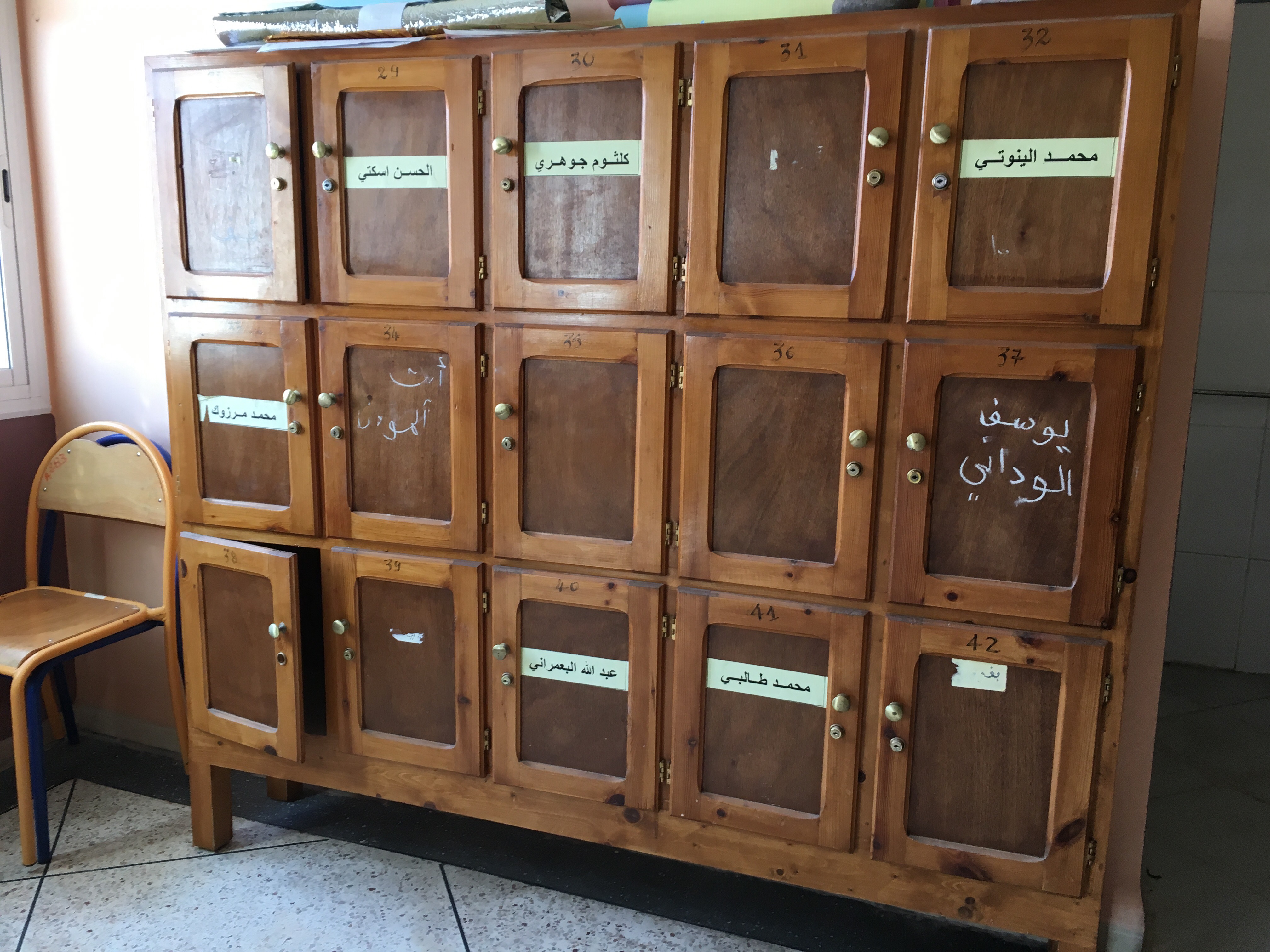
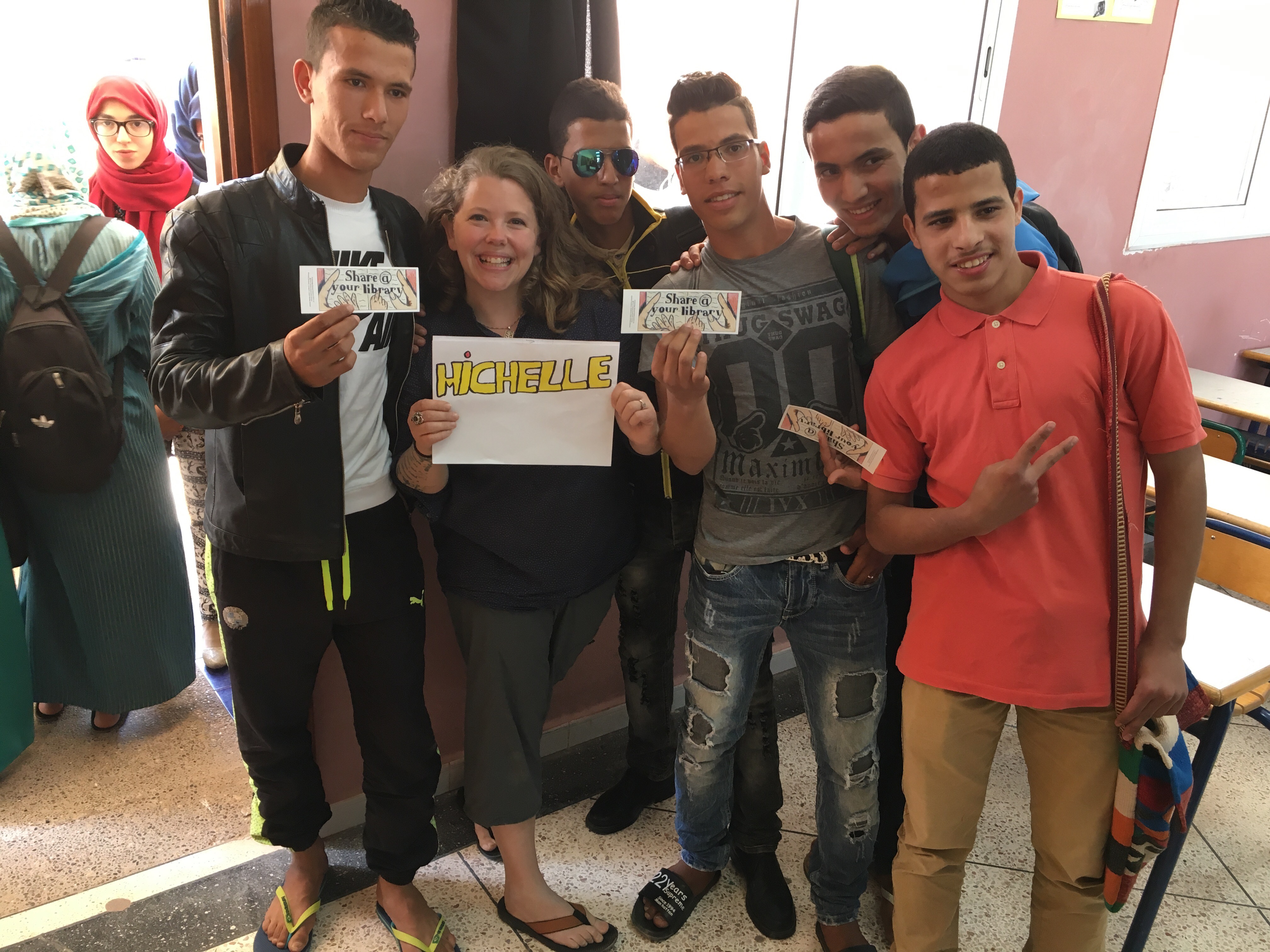
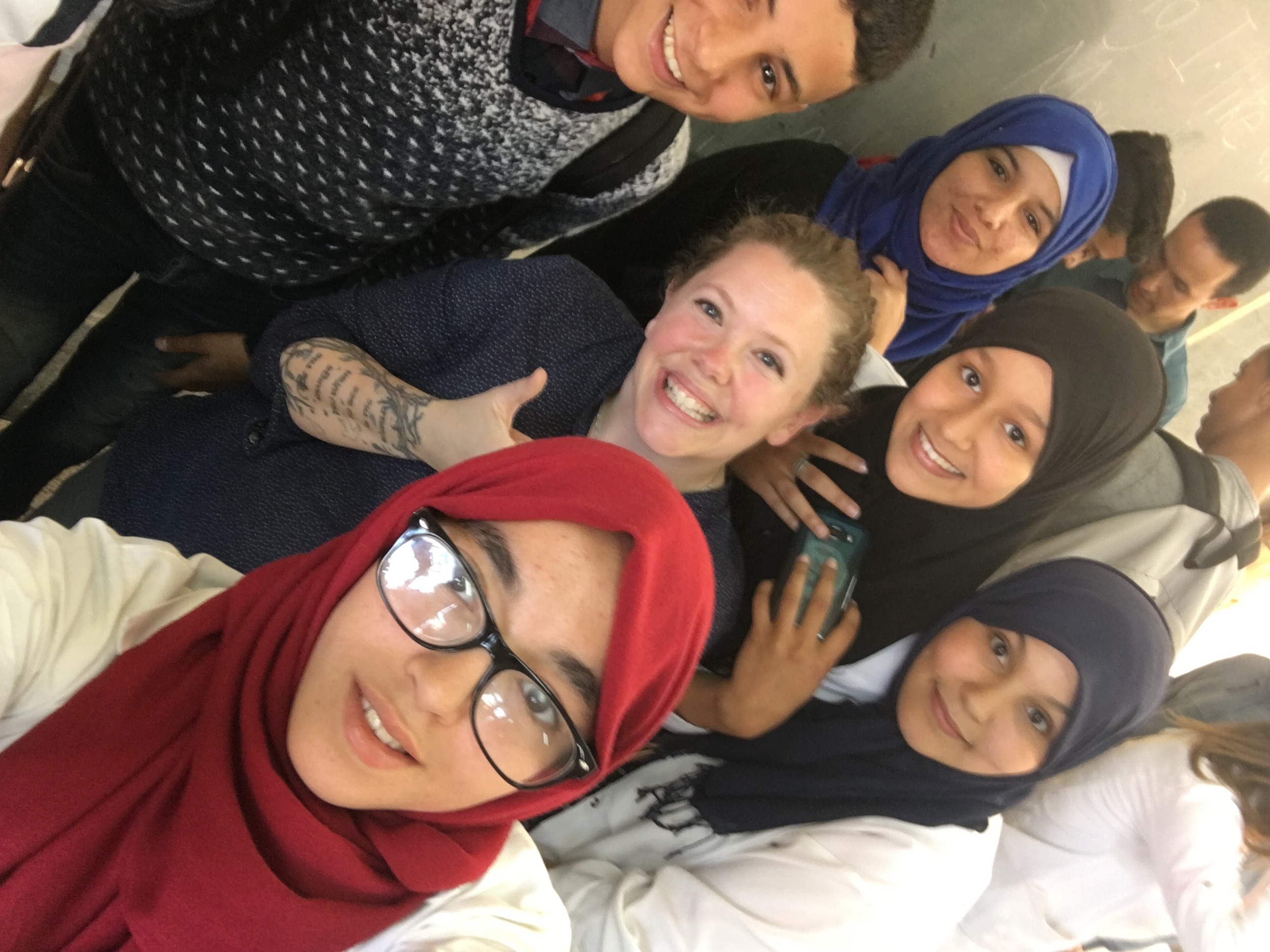
It’s amazing how inviting, caring, respectful, and happy the Morrocan students have been!


![]()



























































































Recent Comments